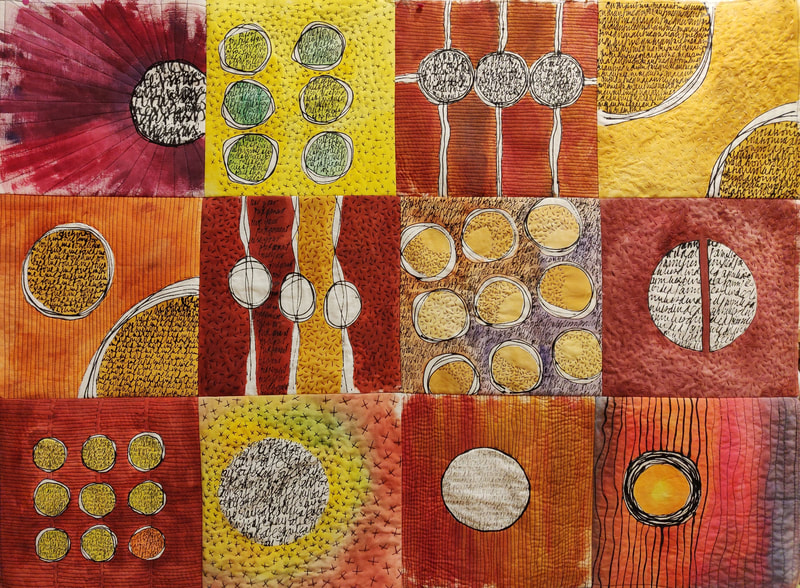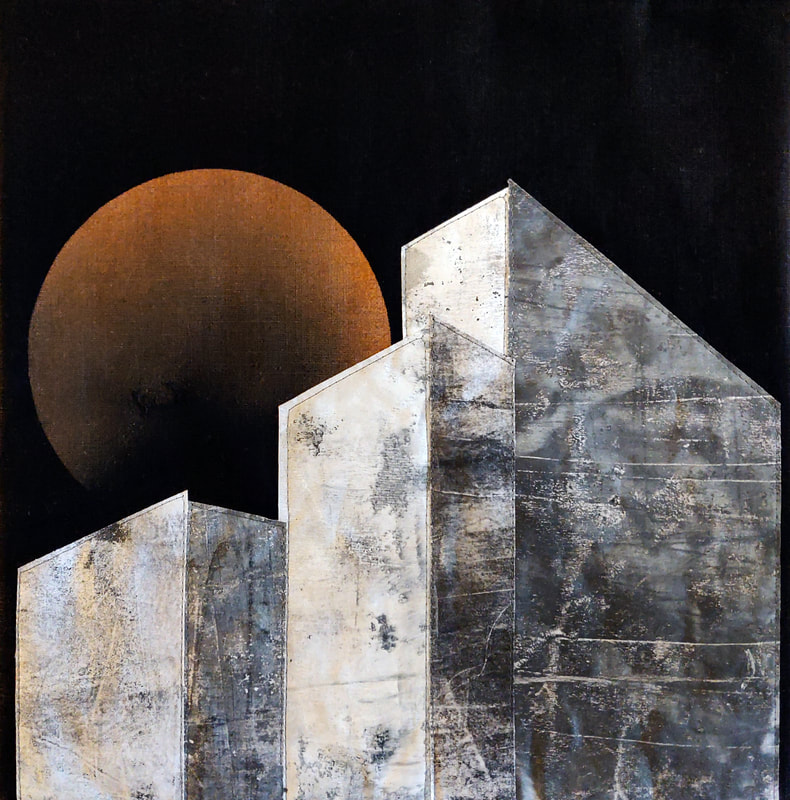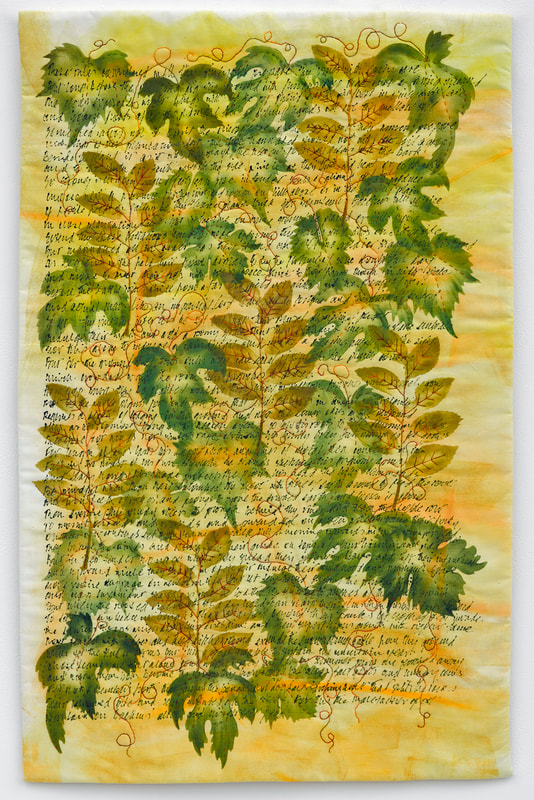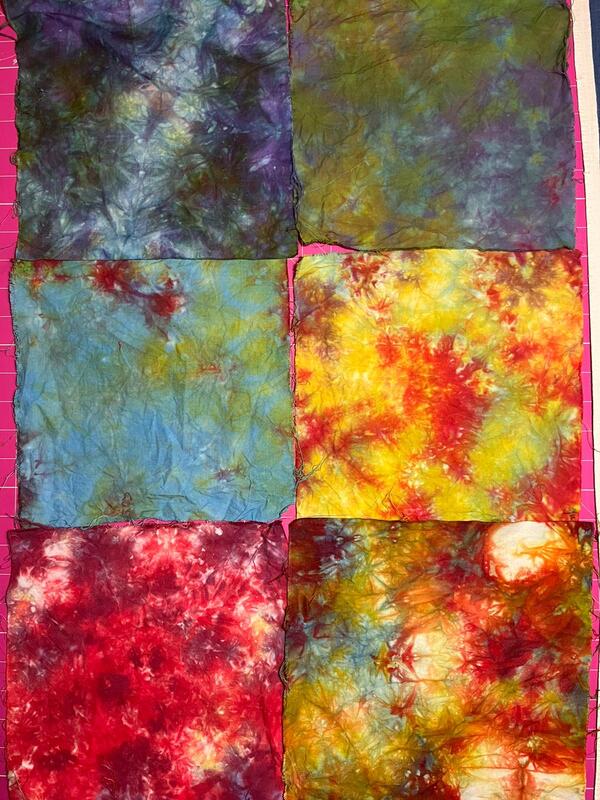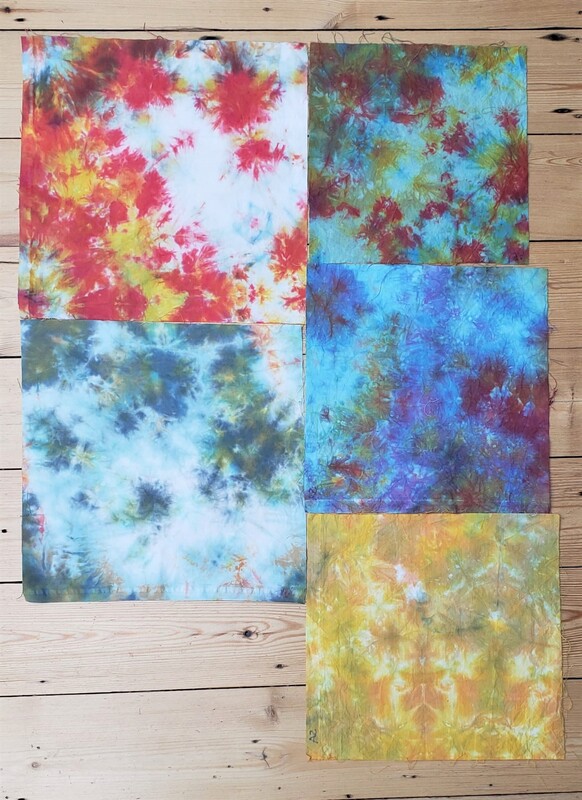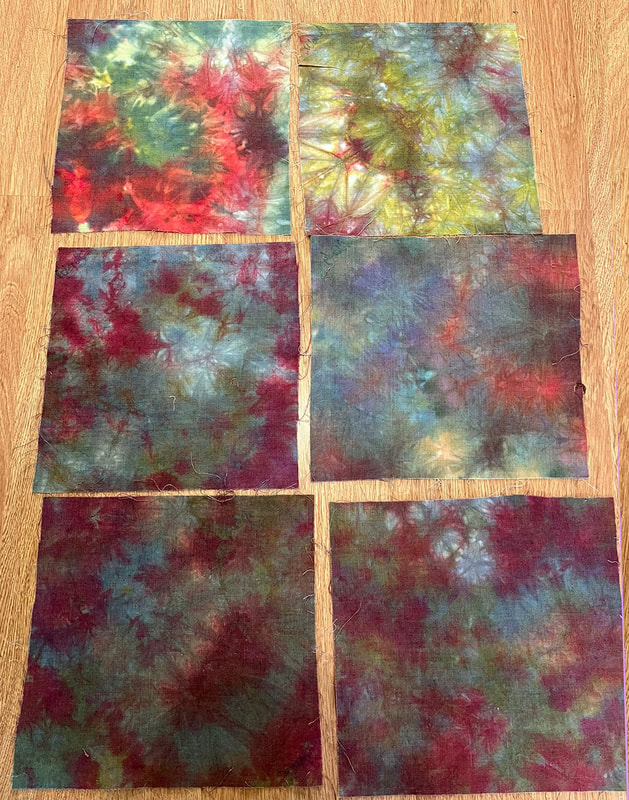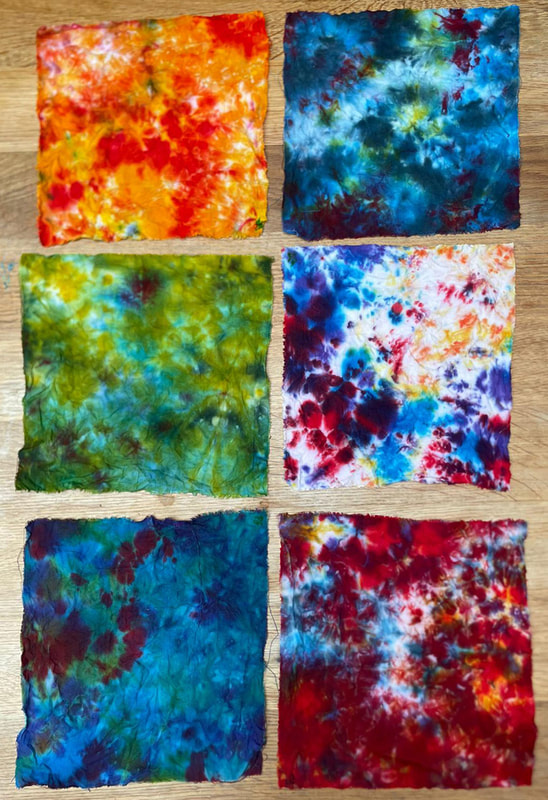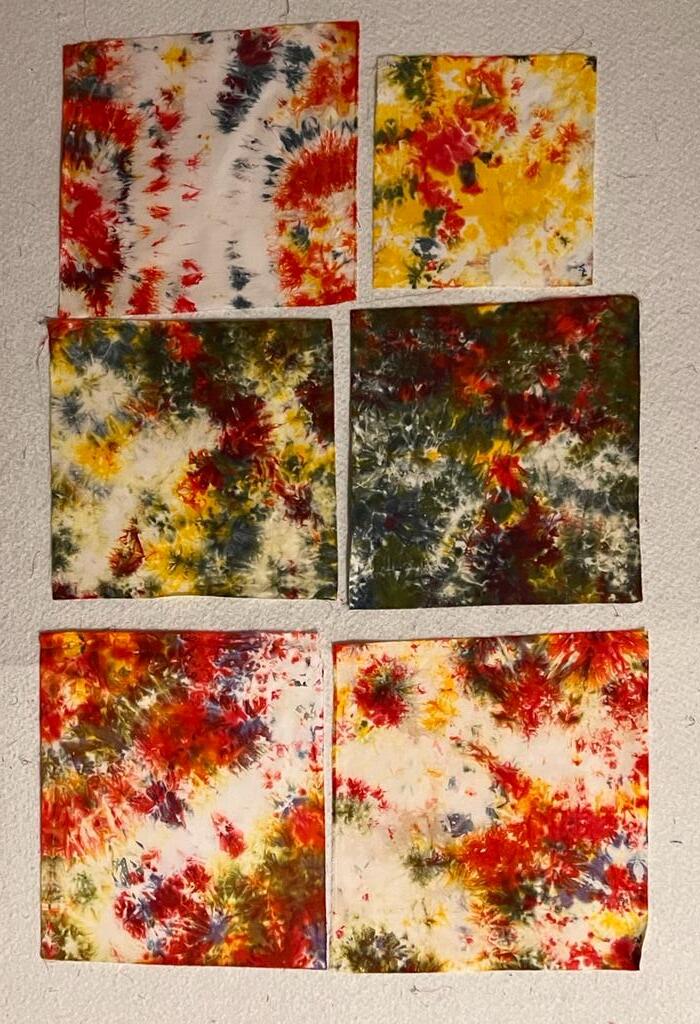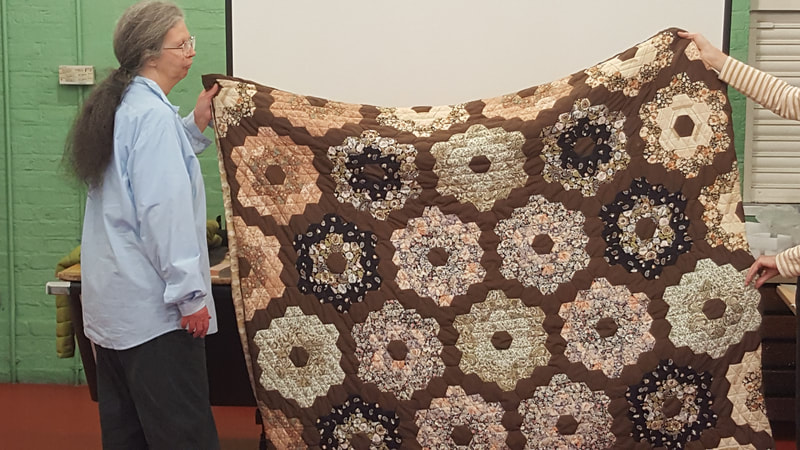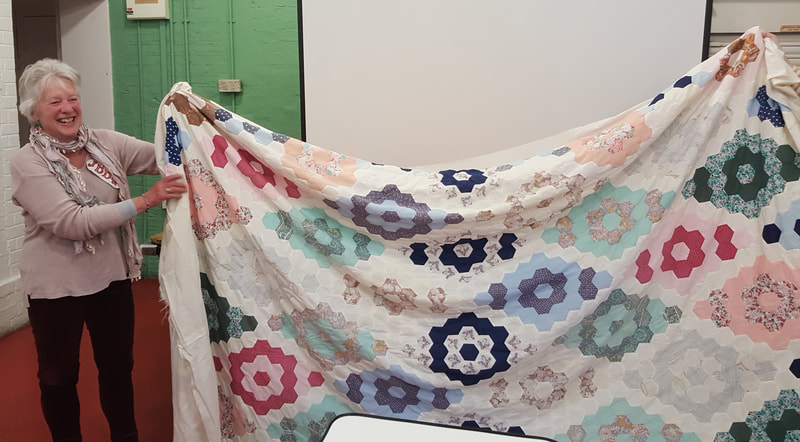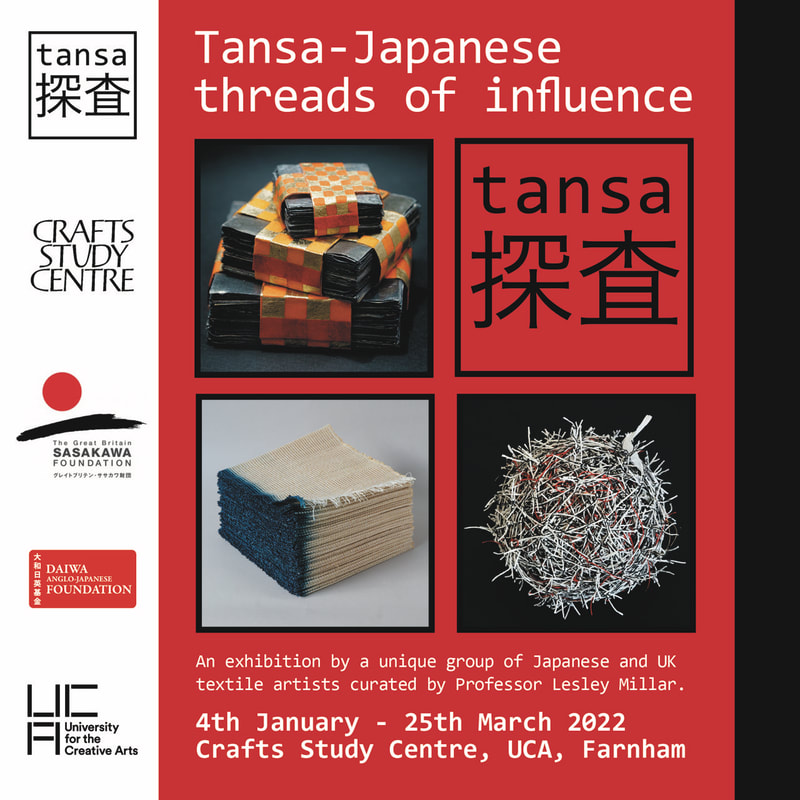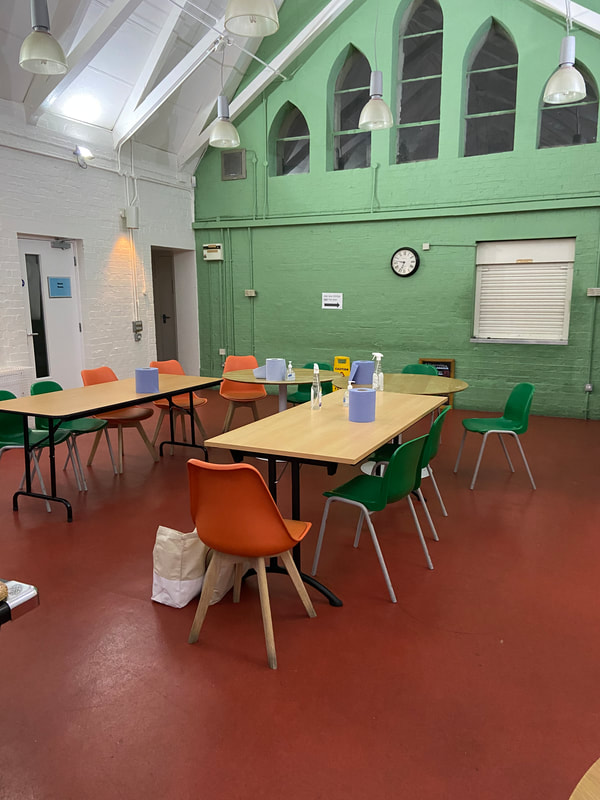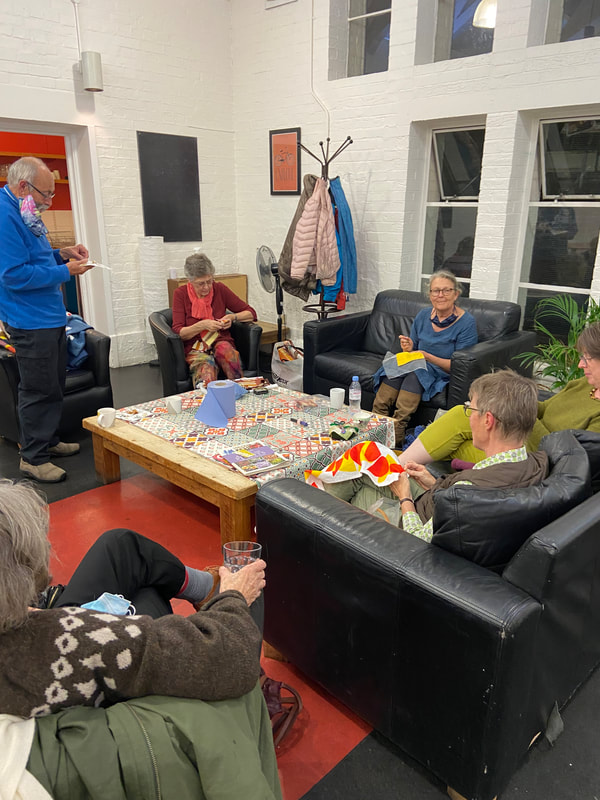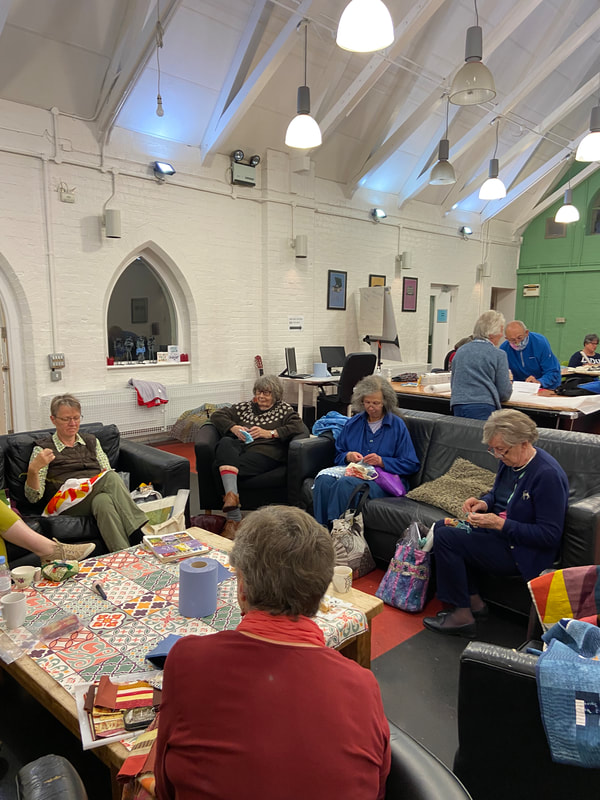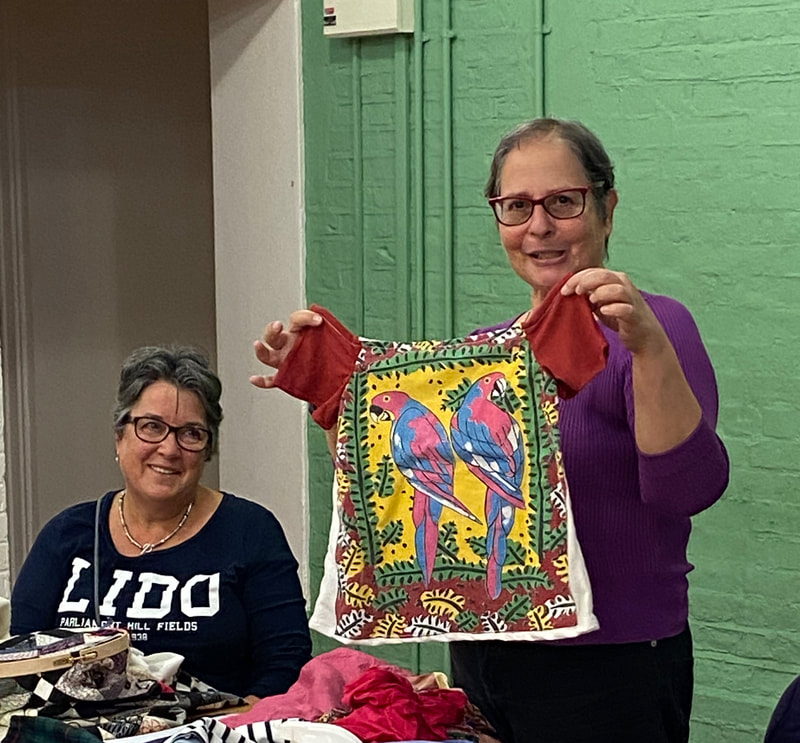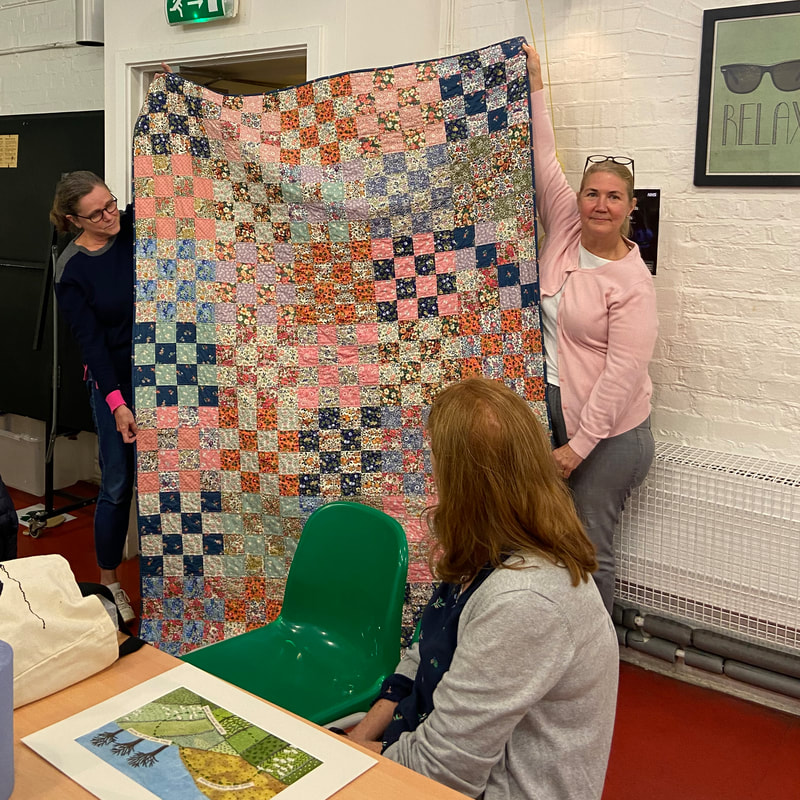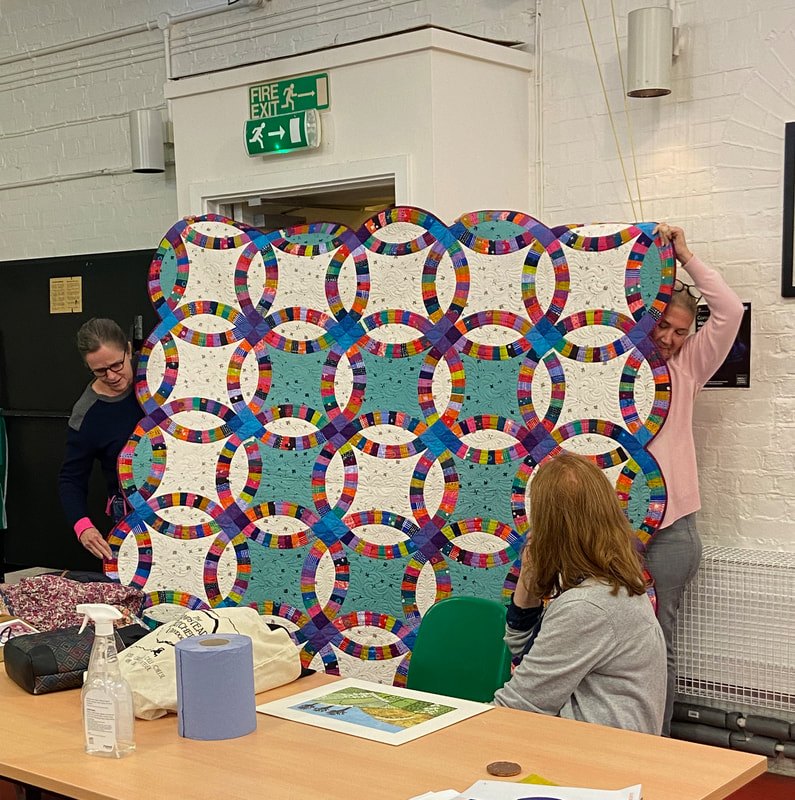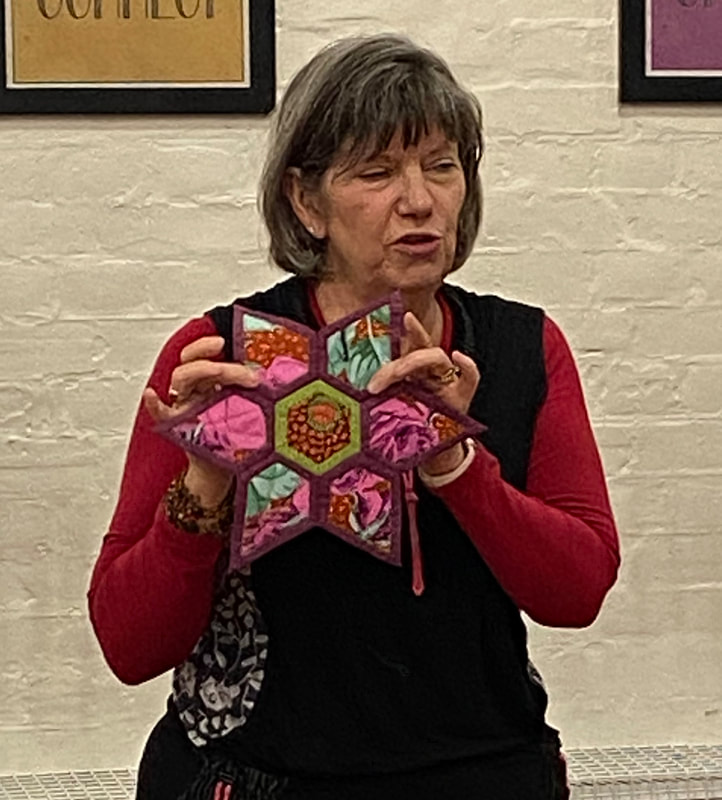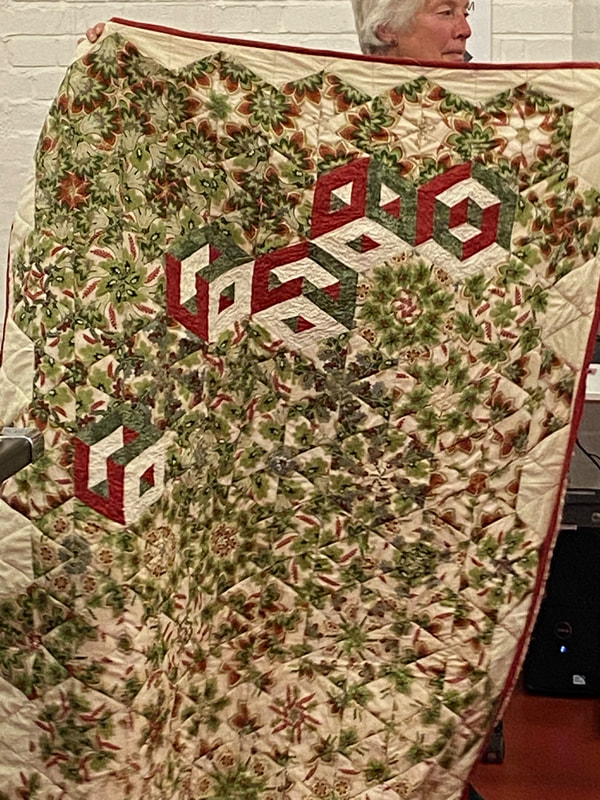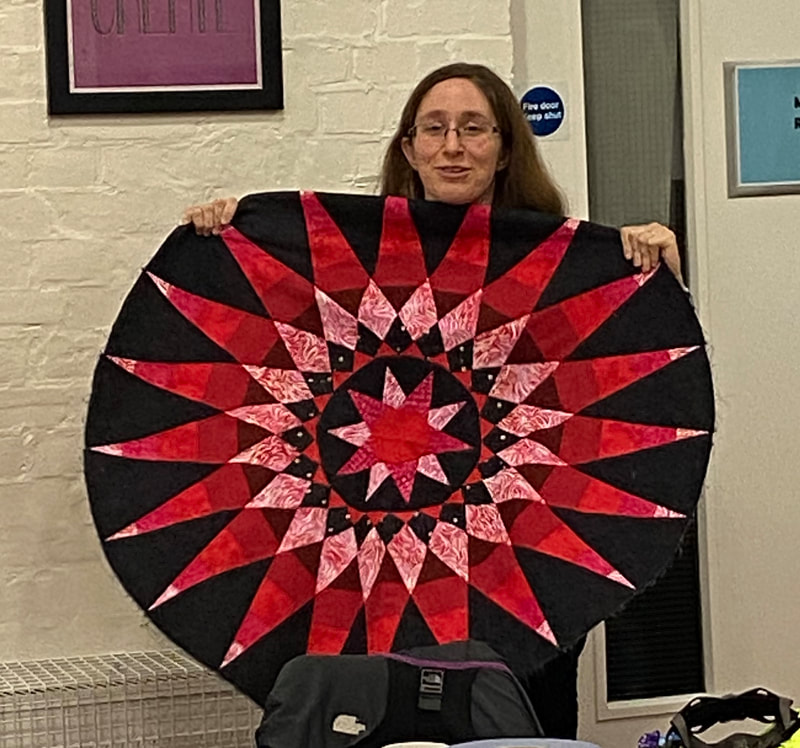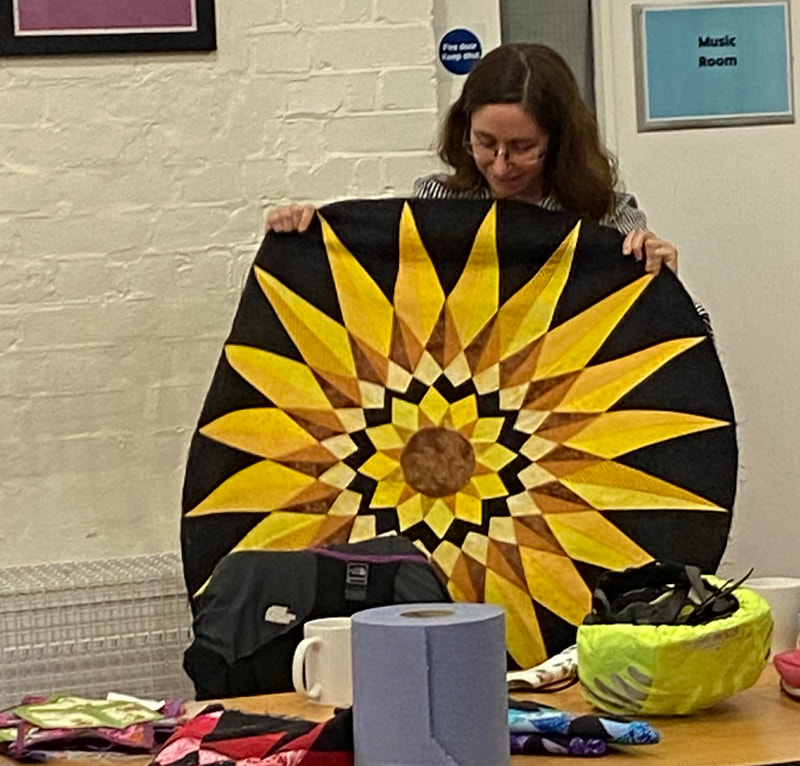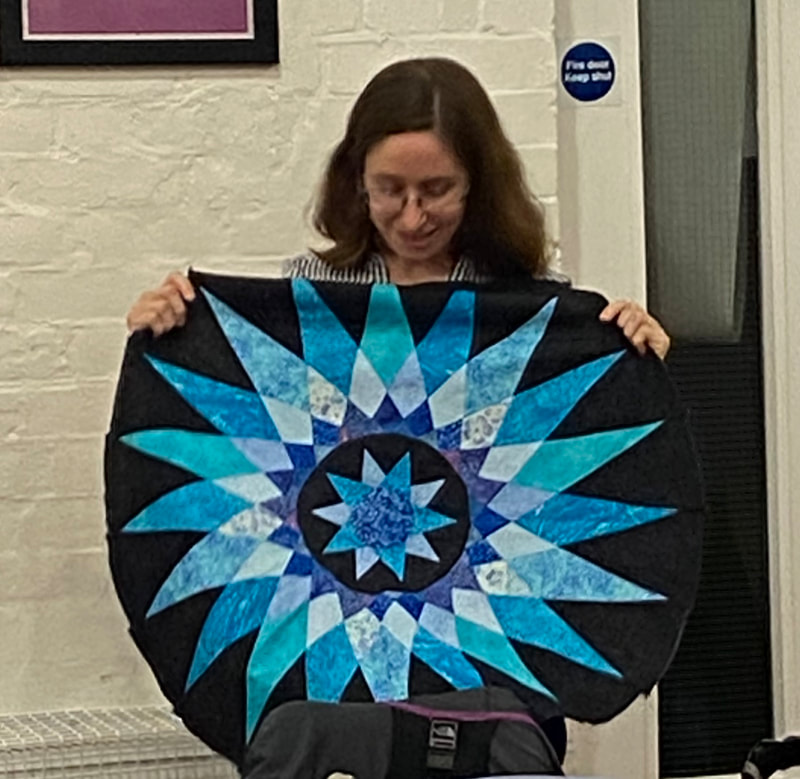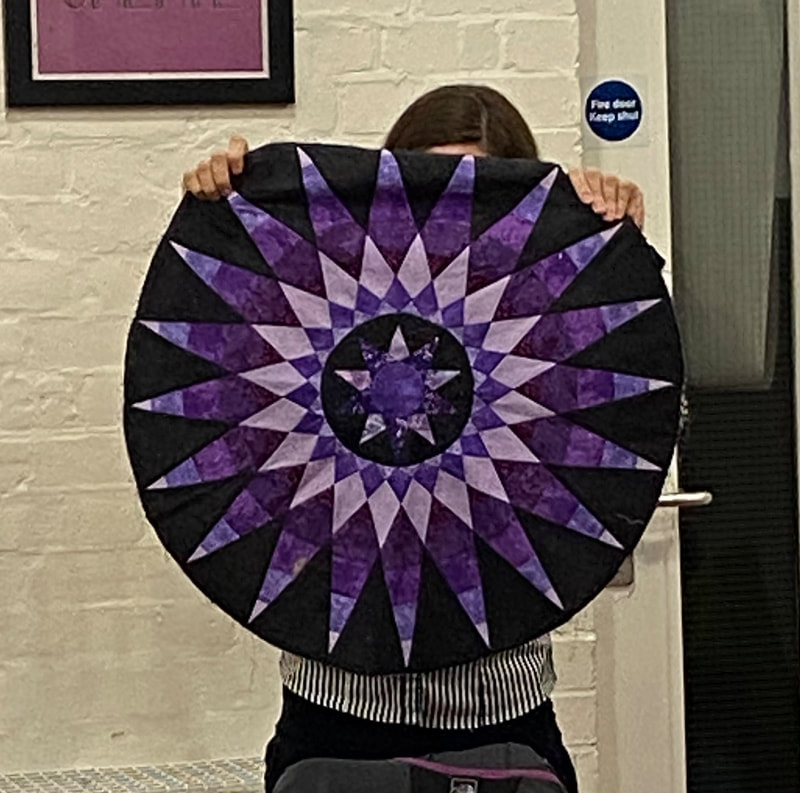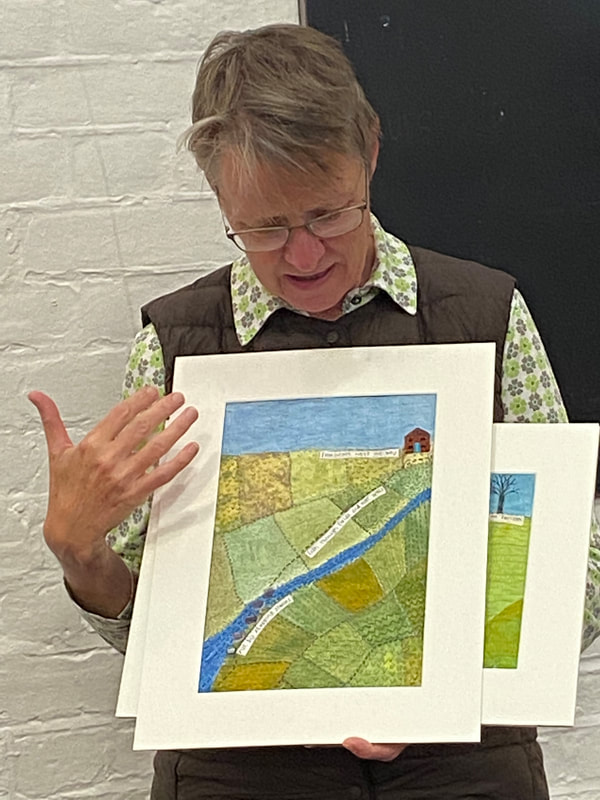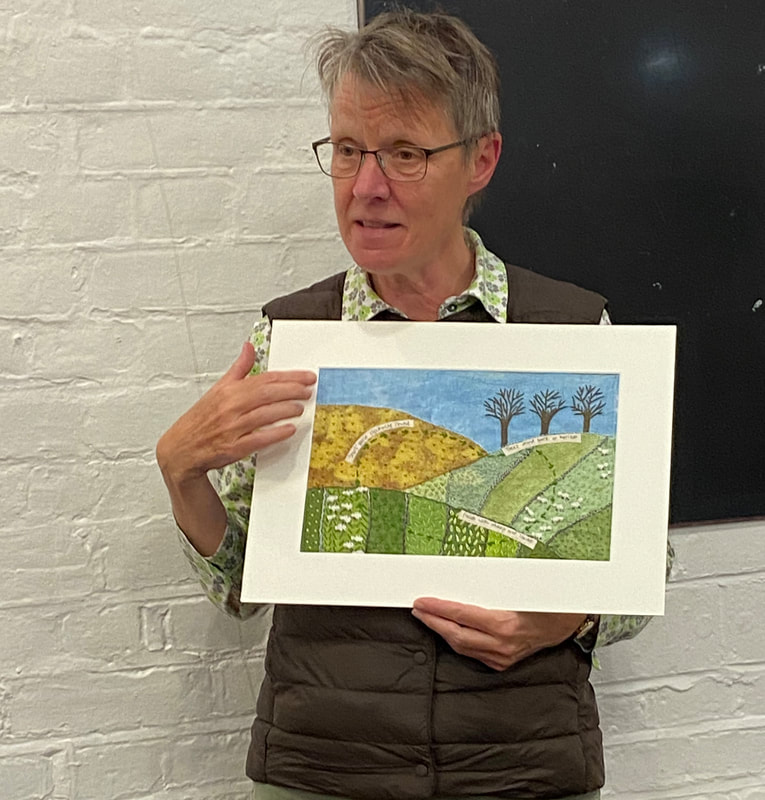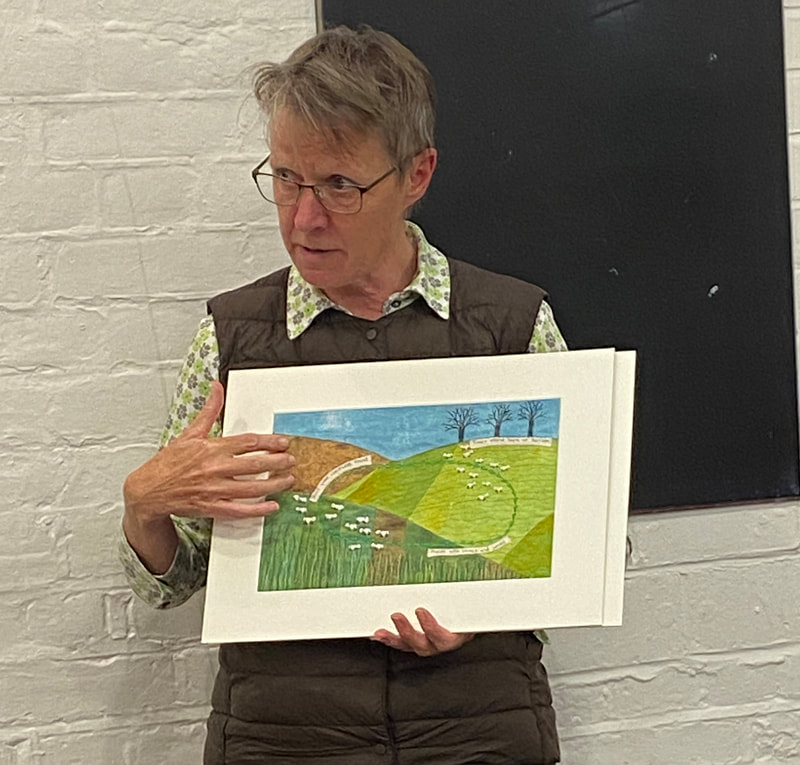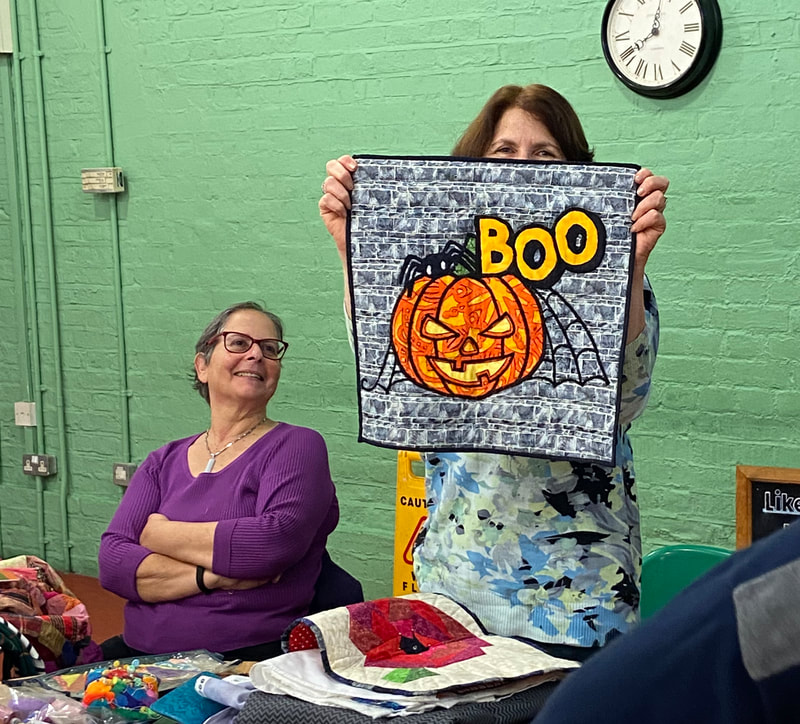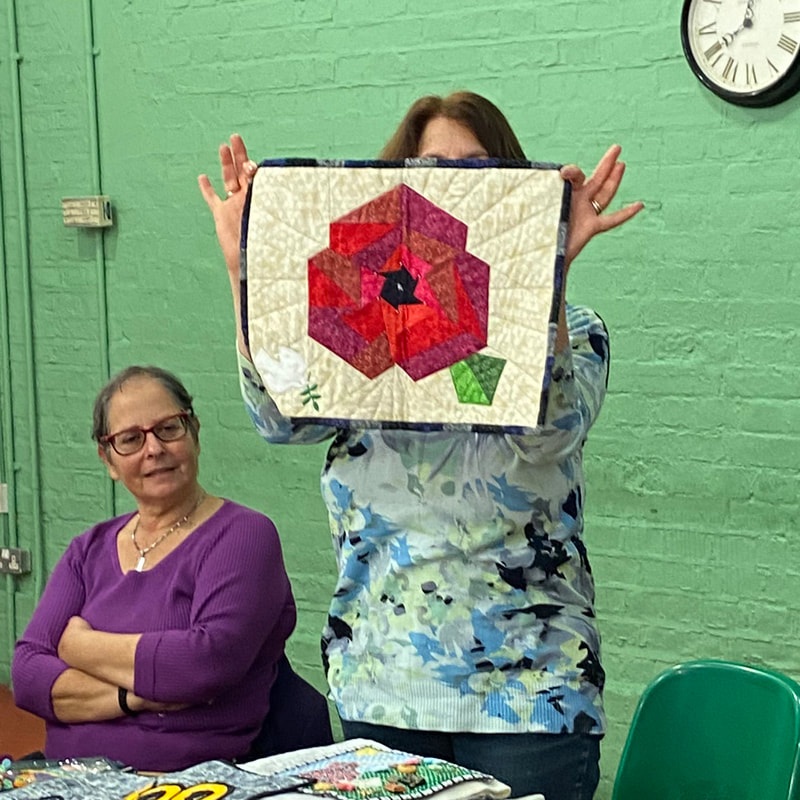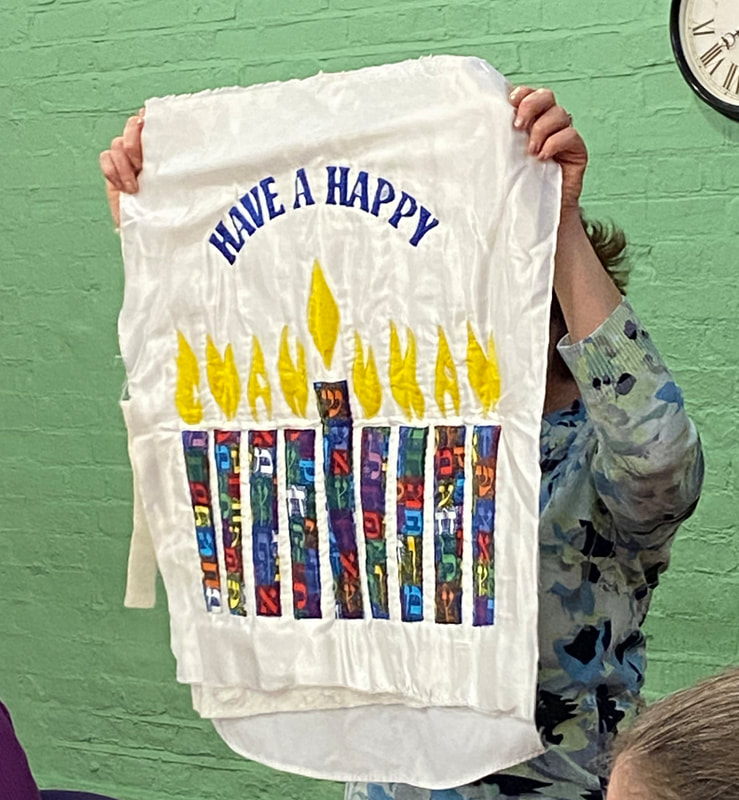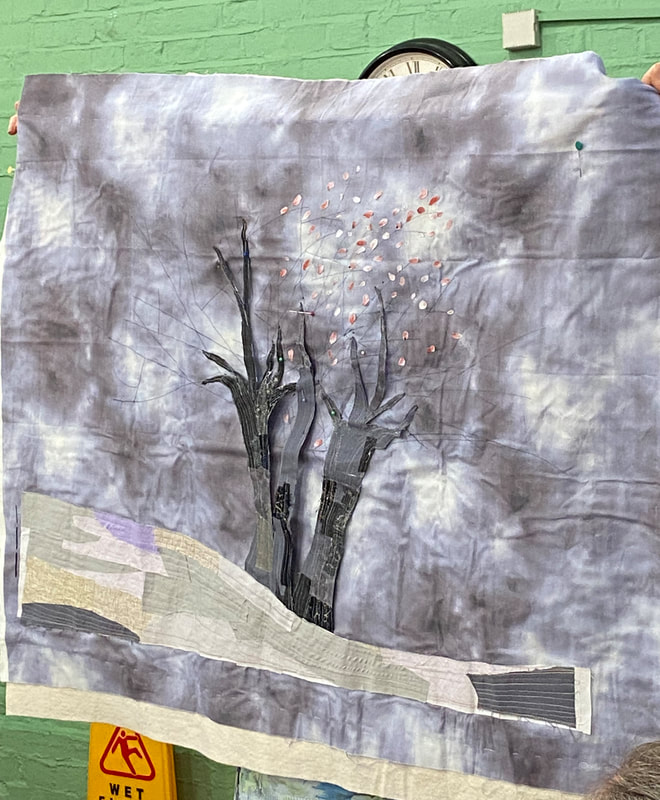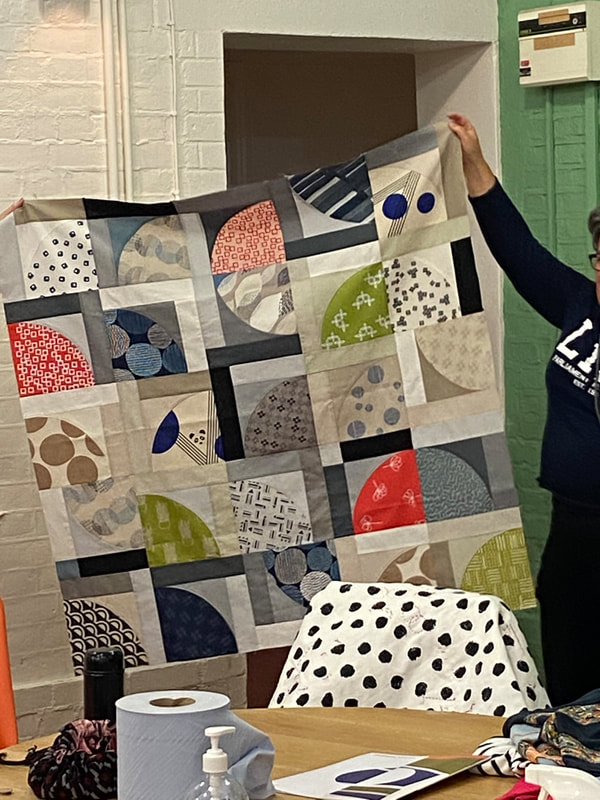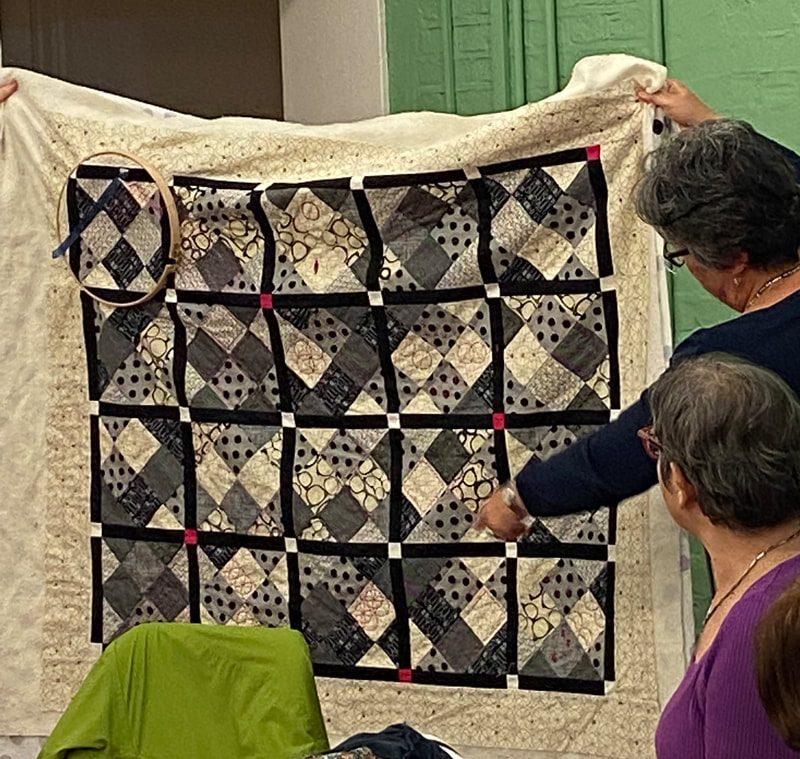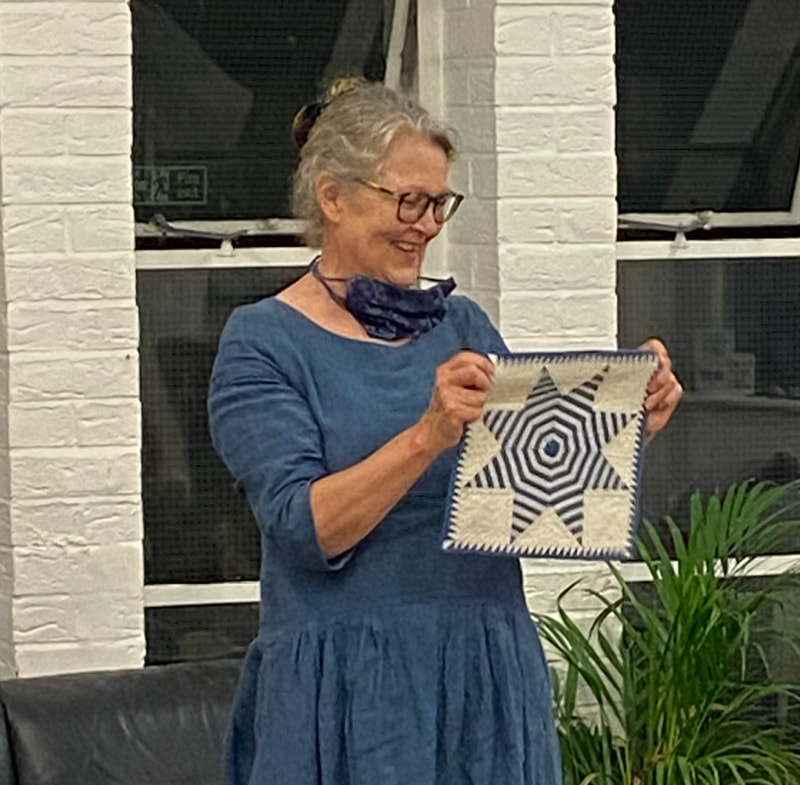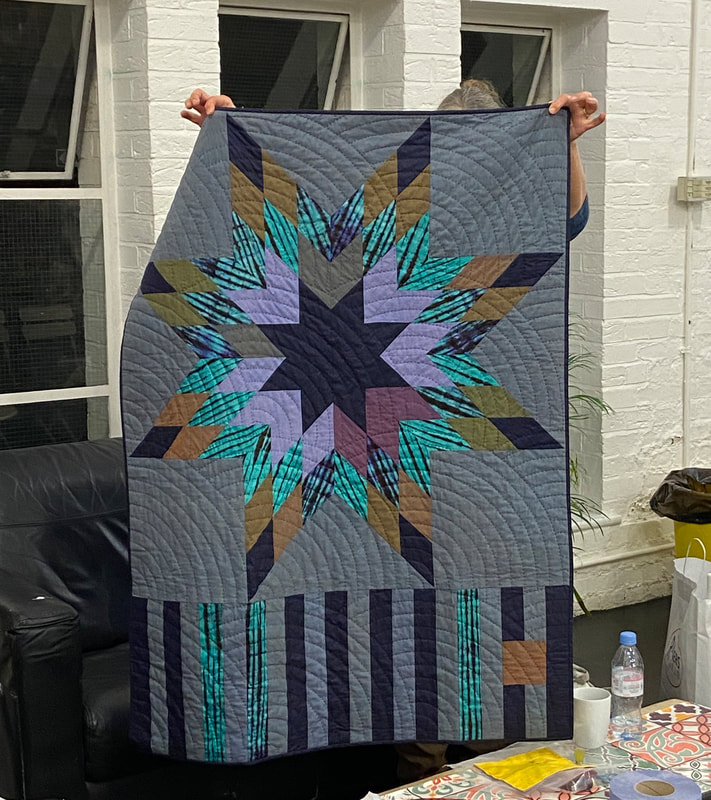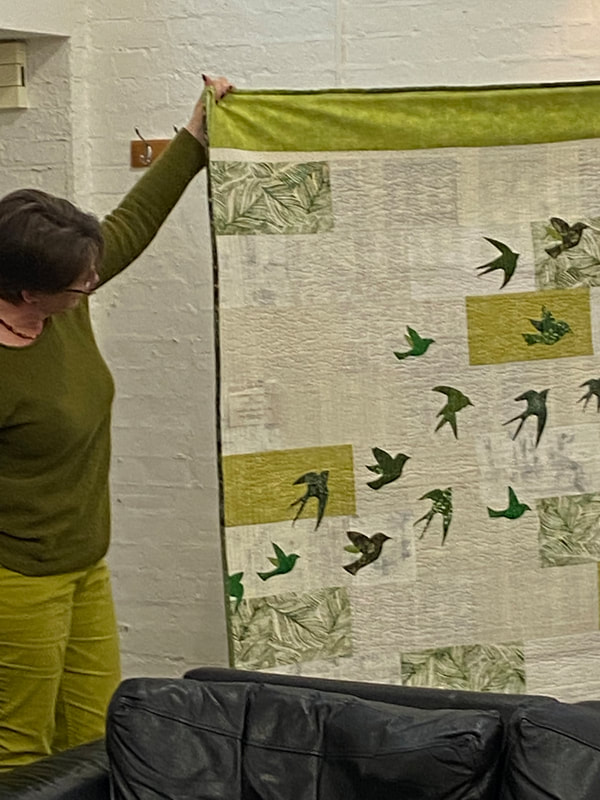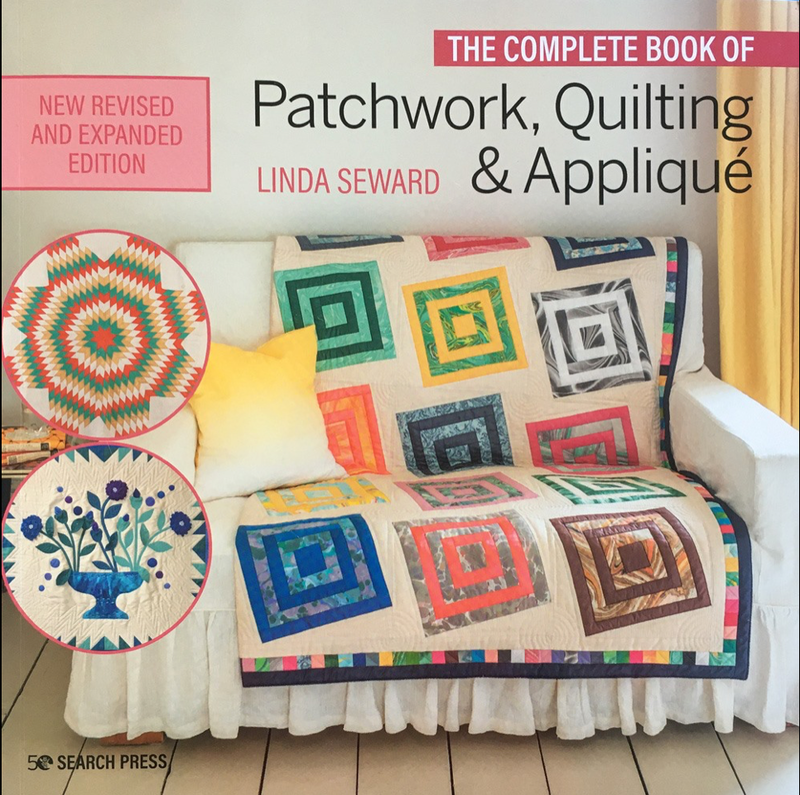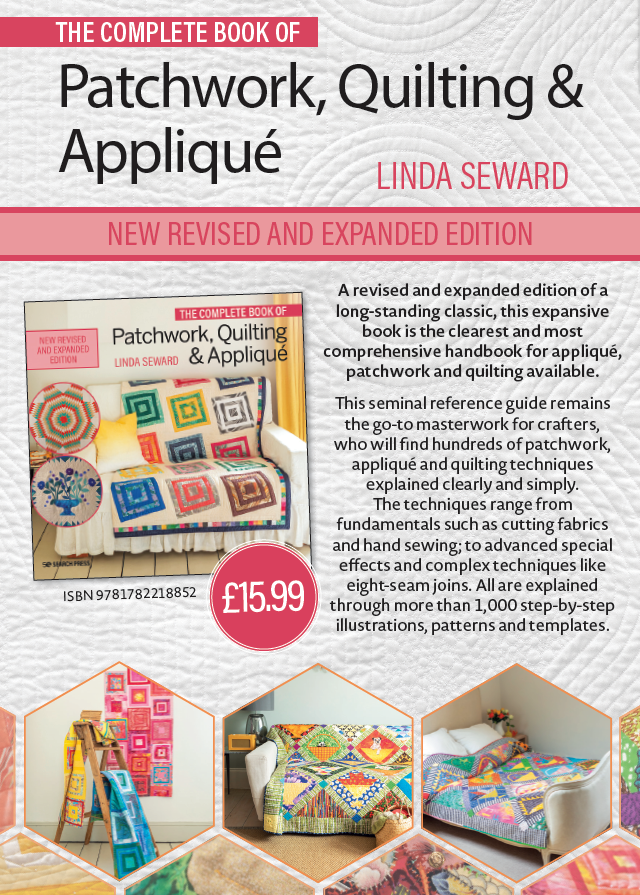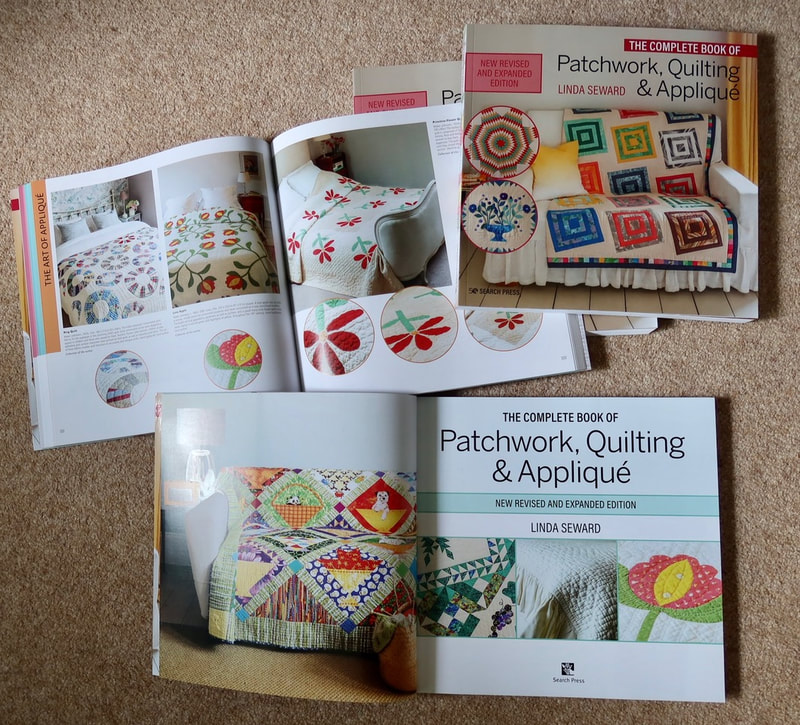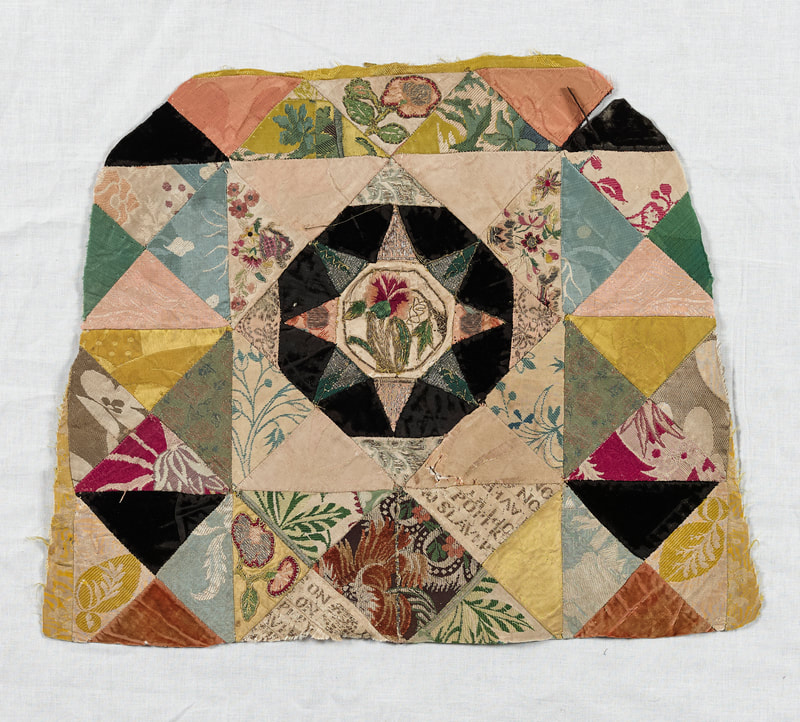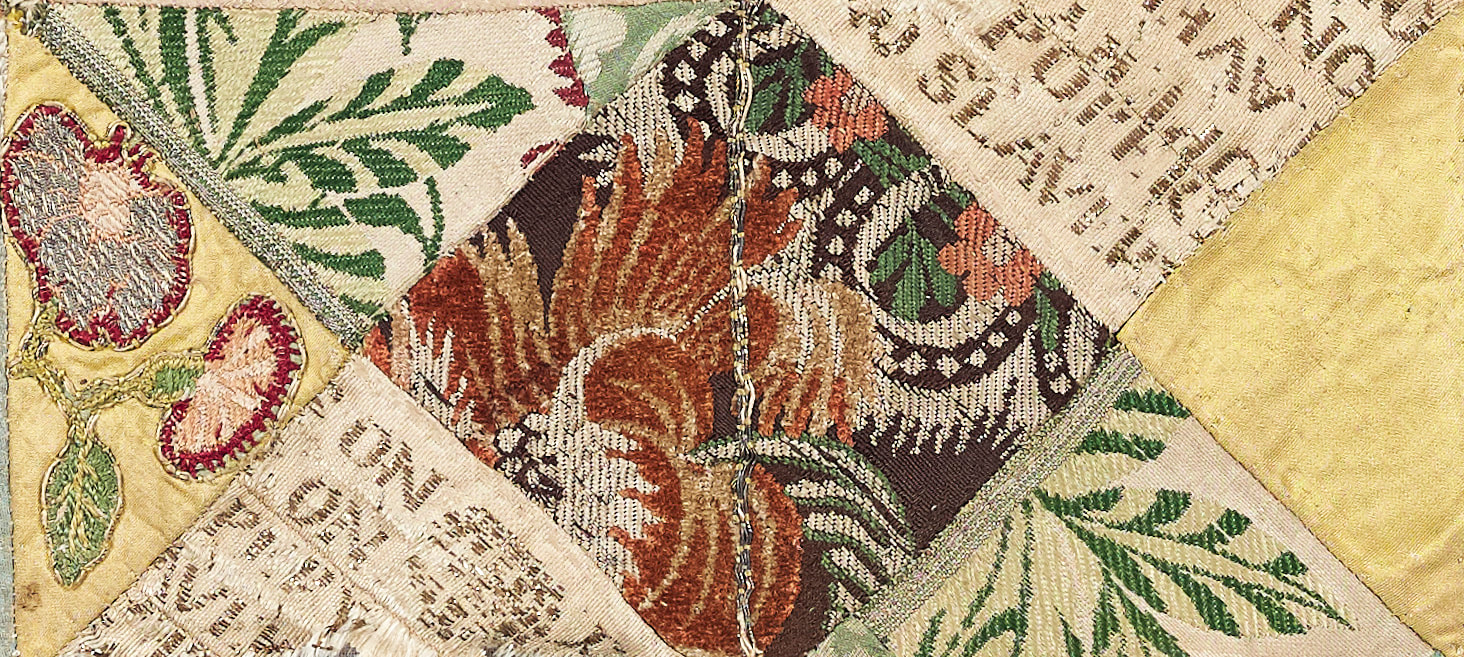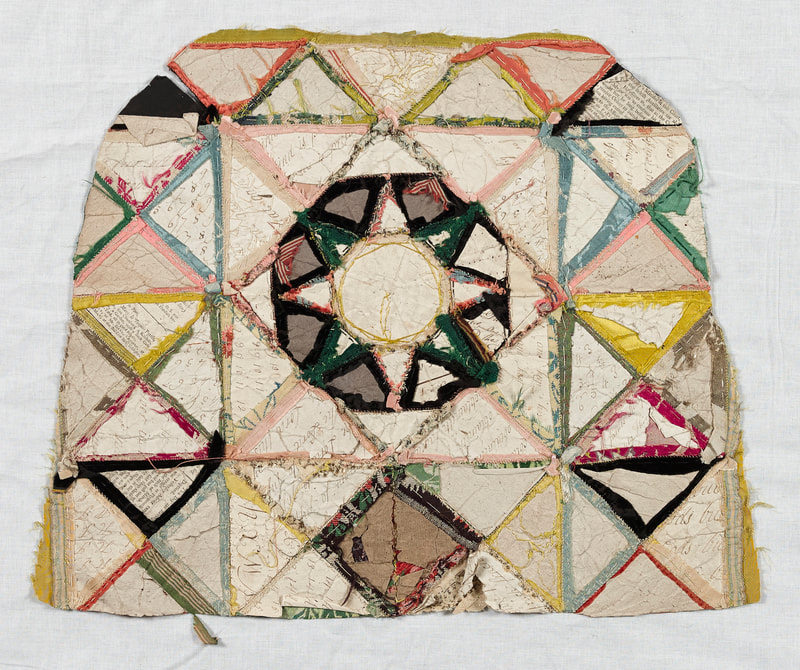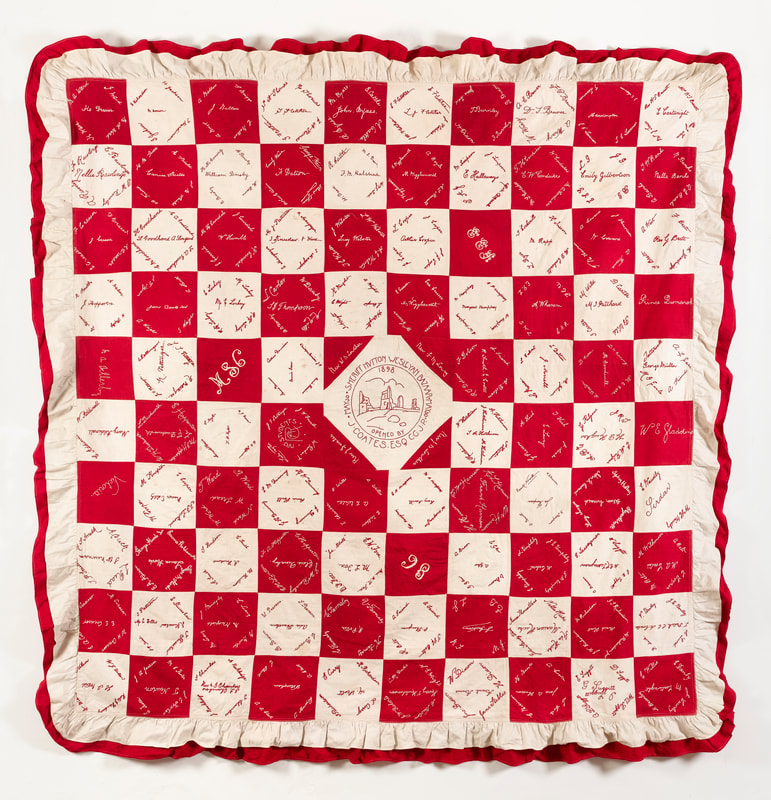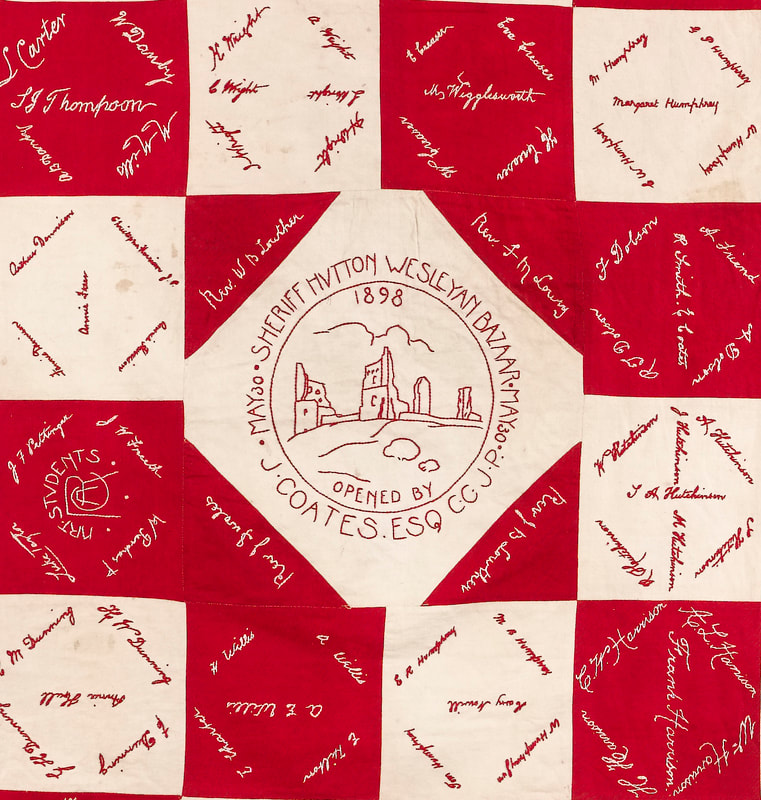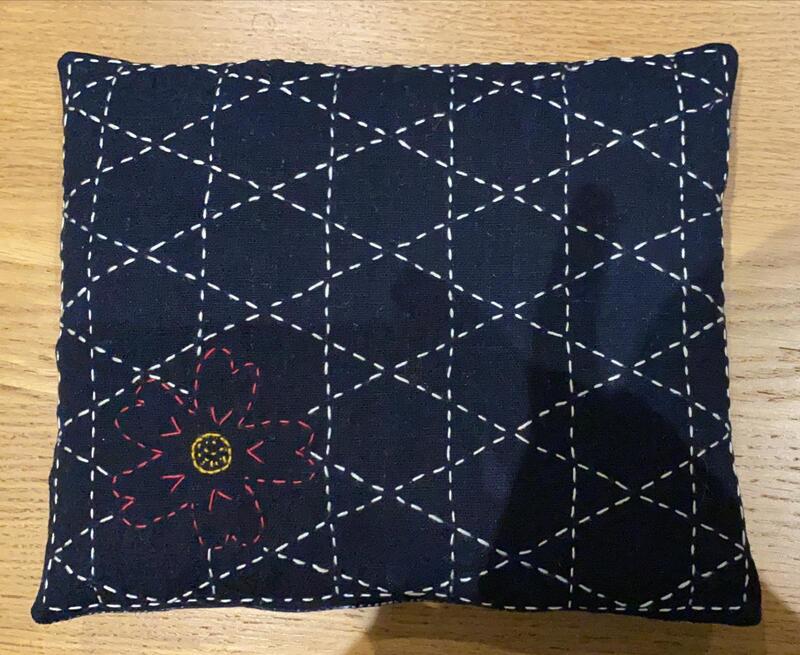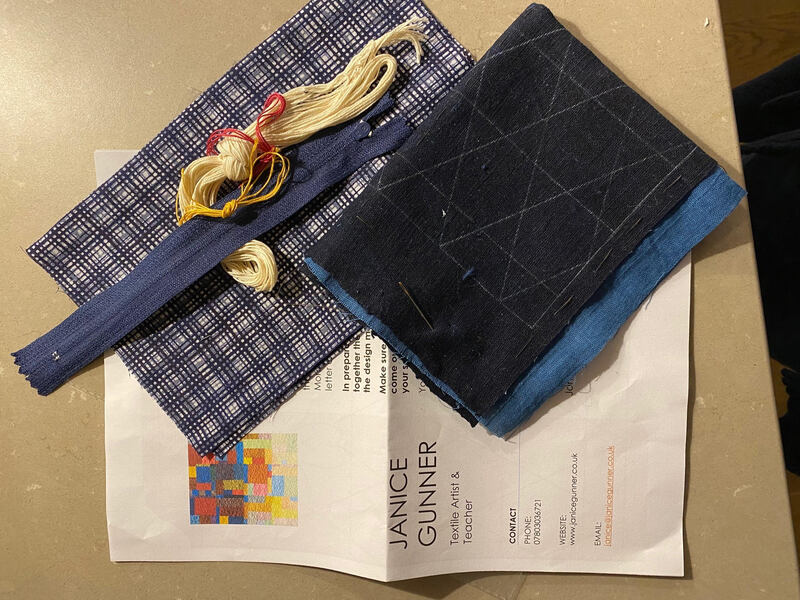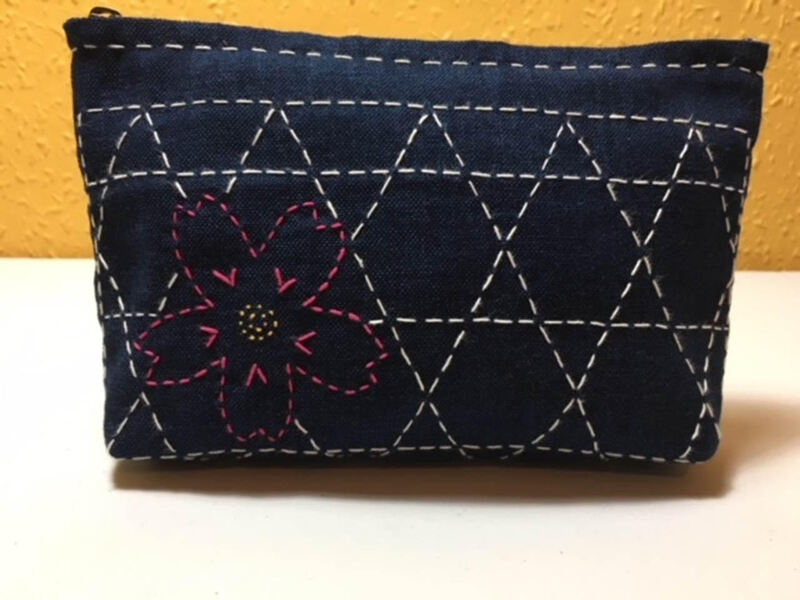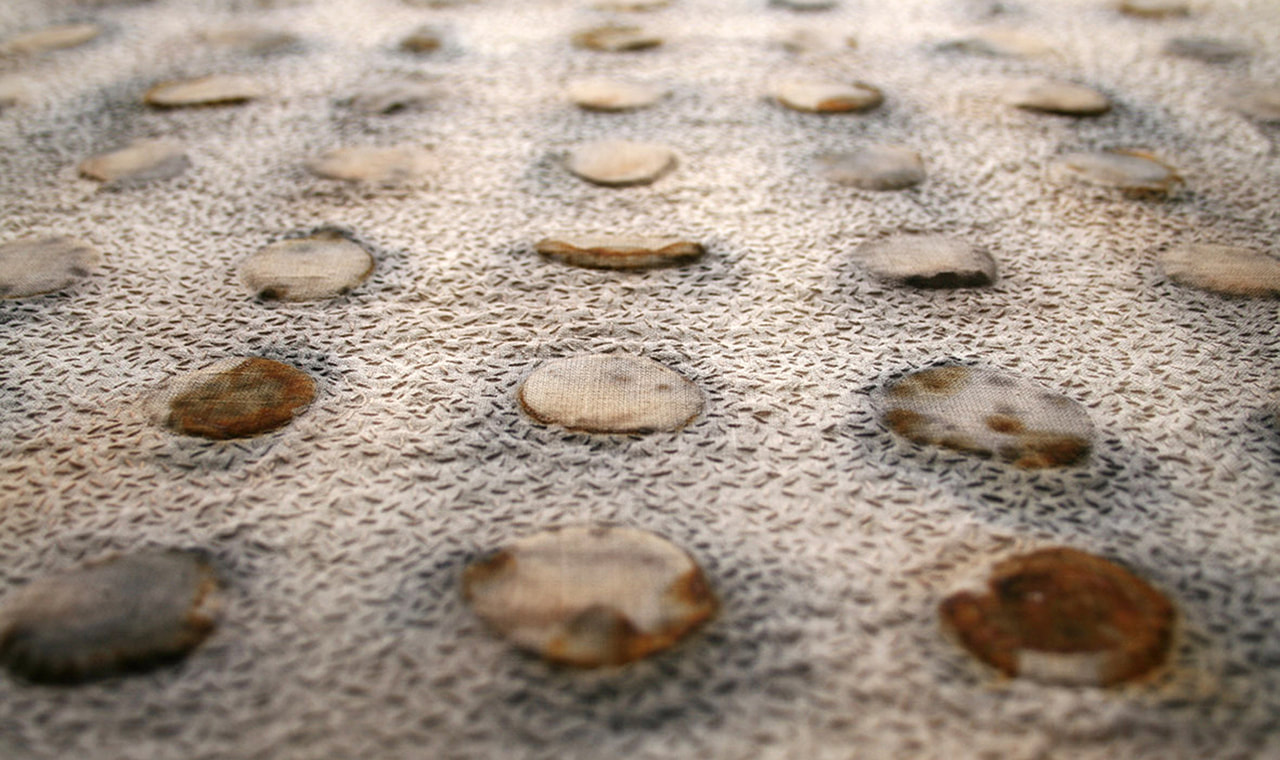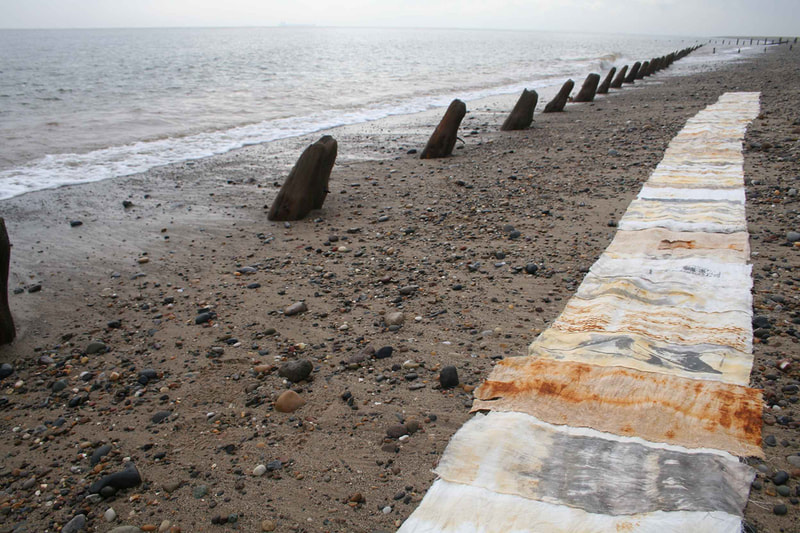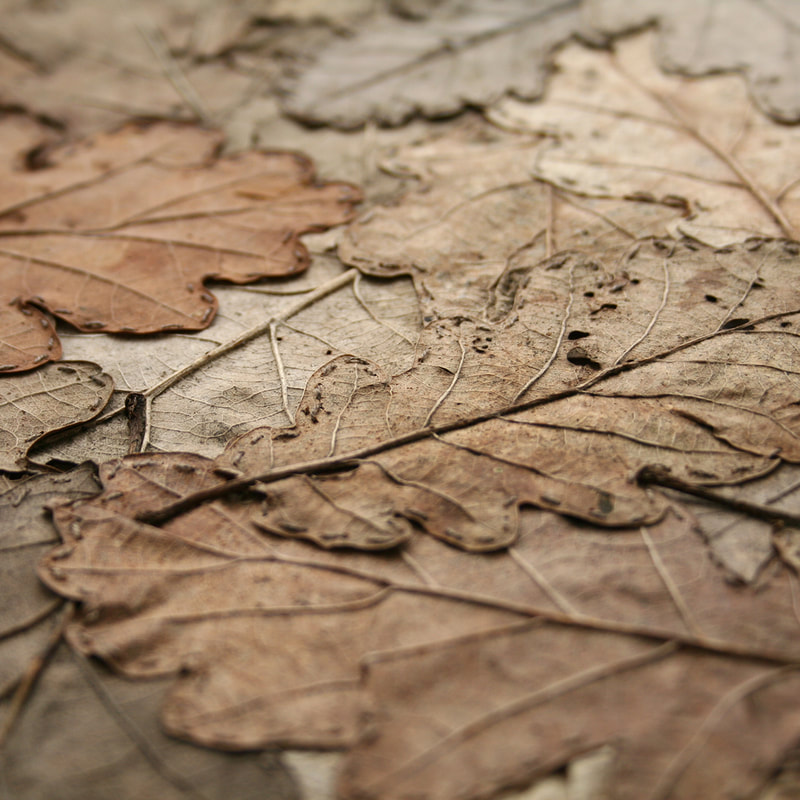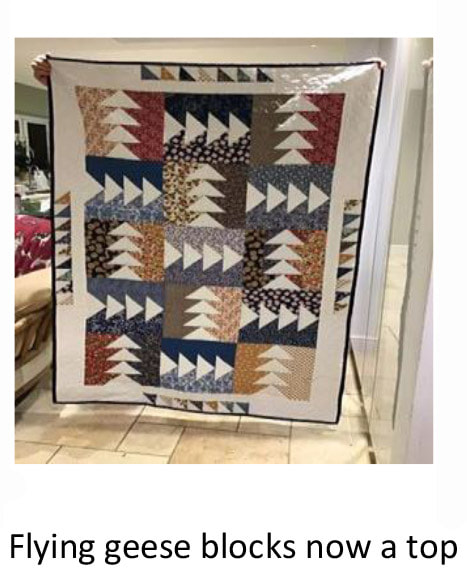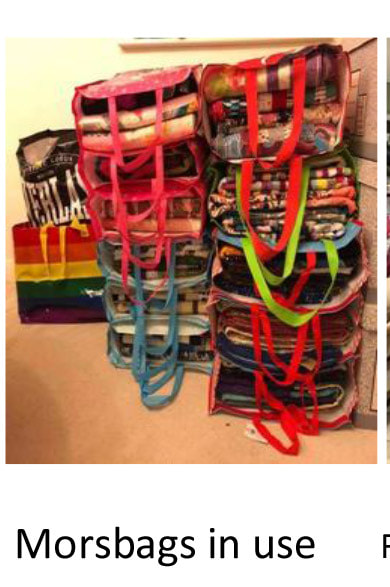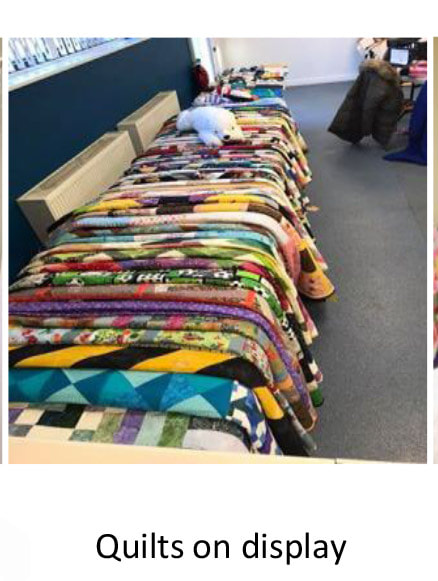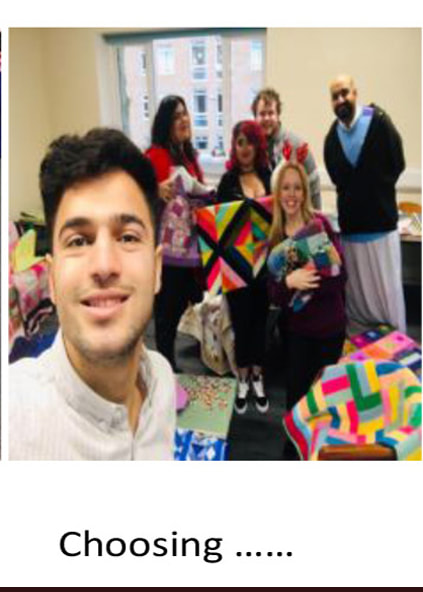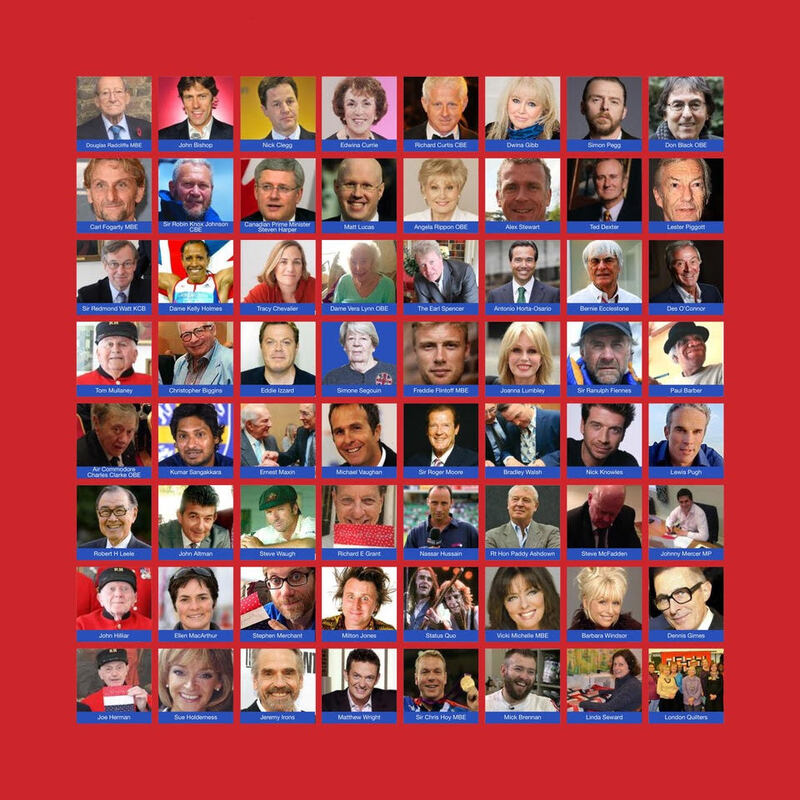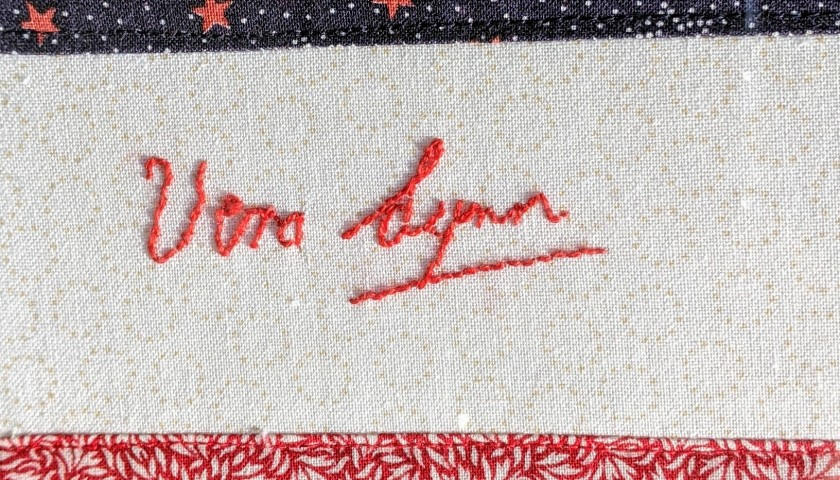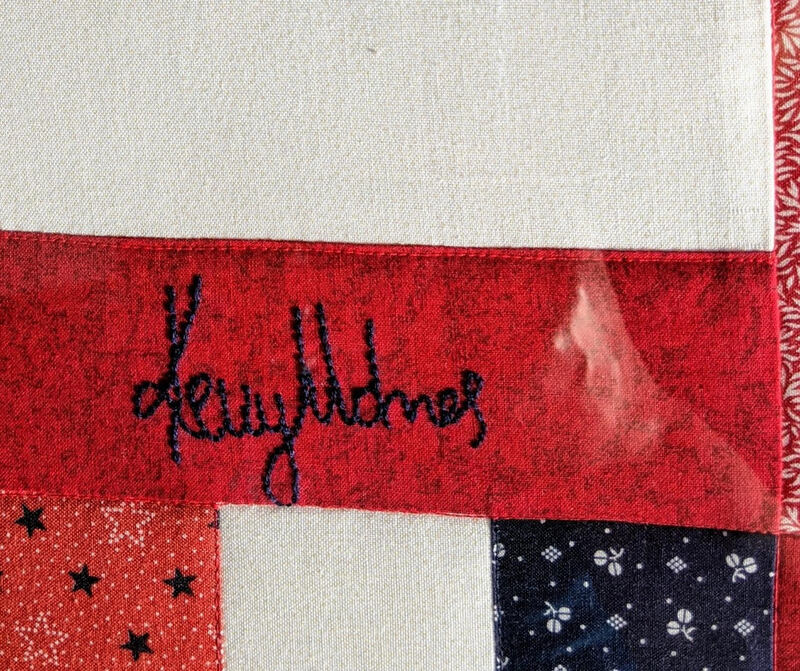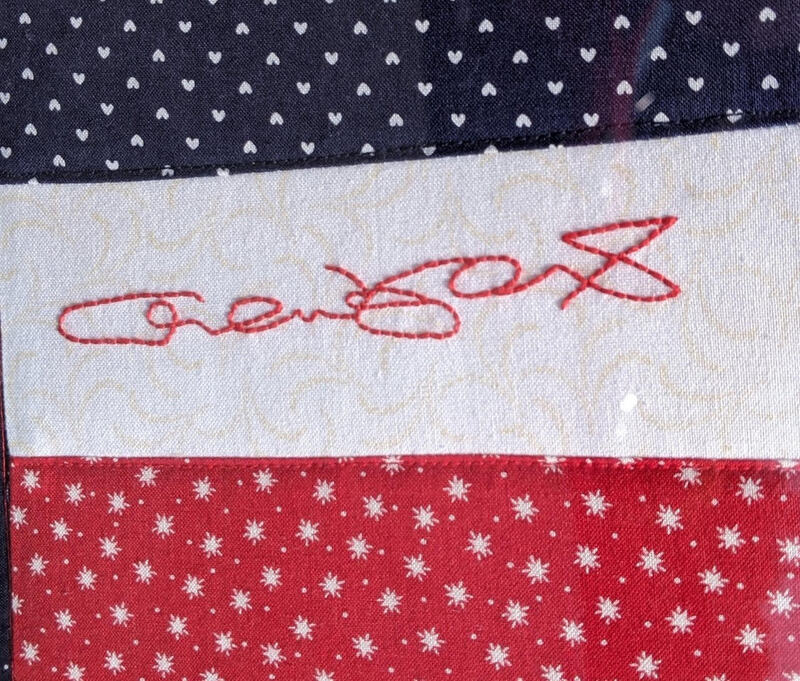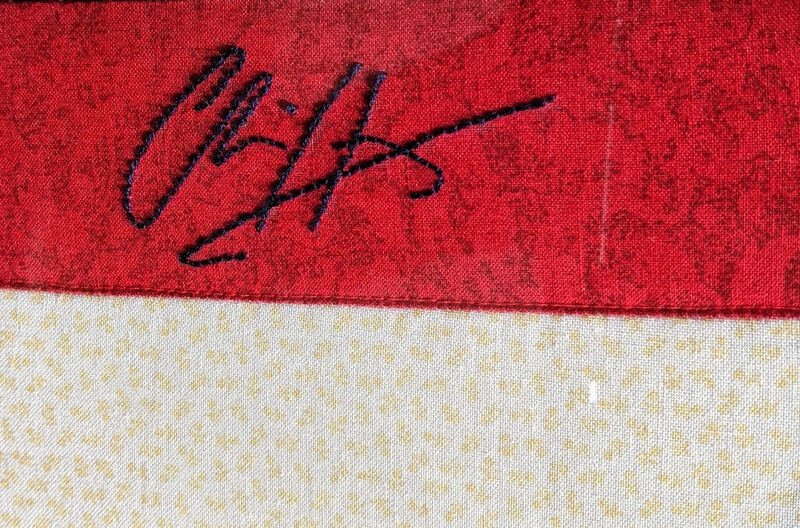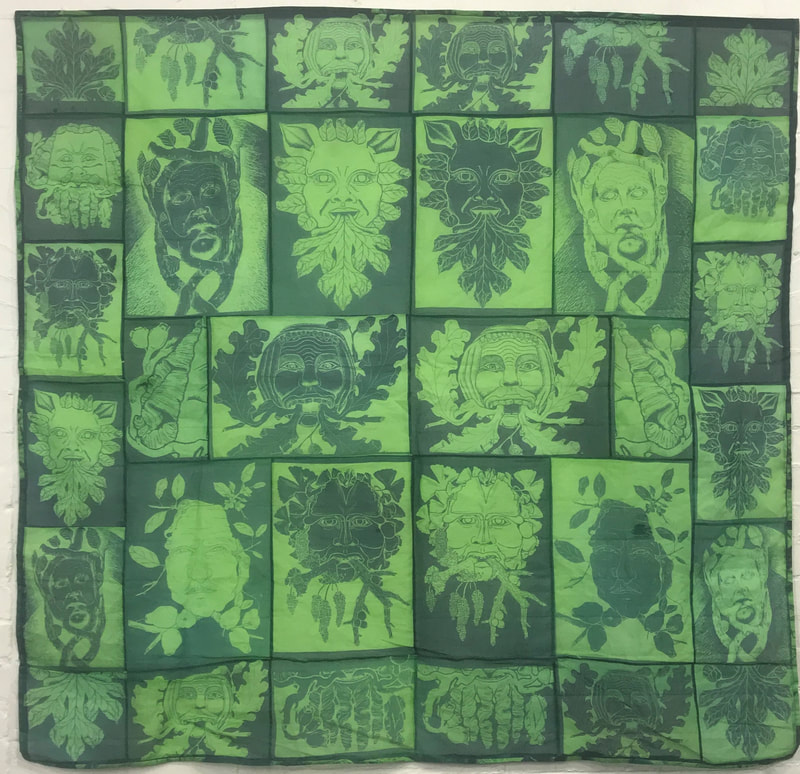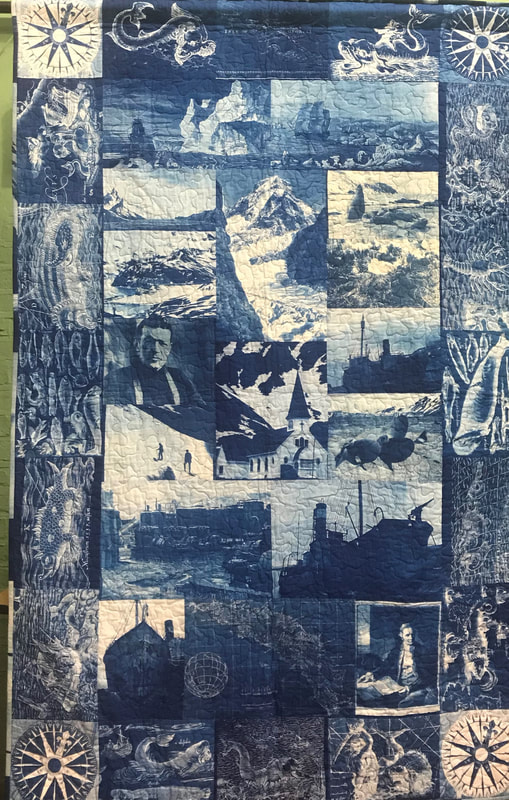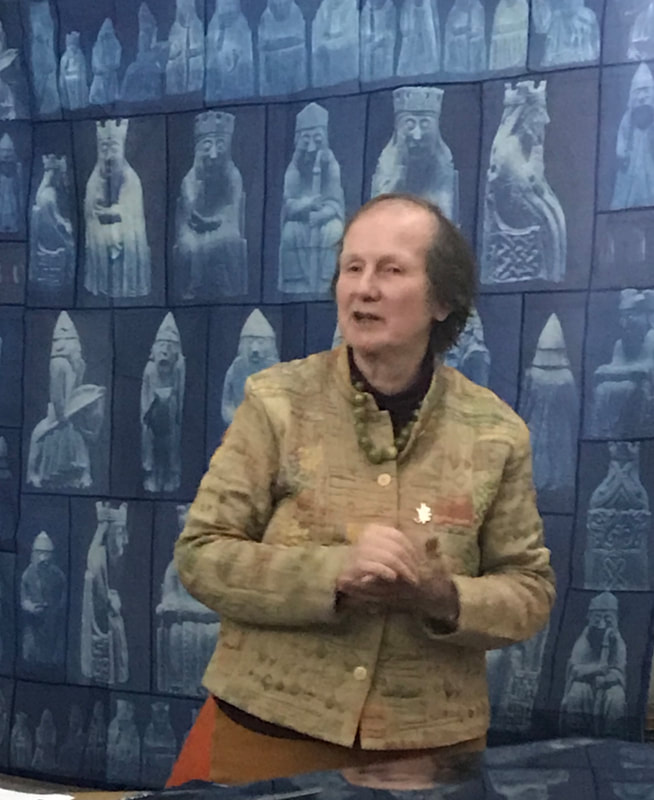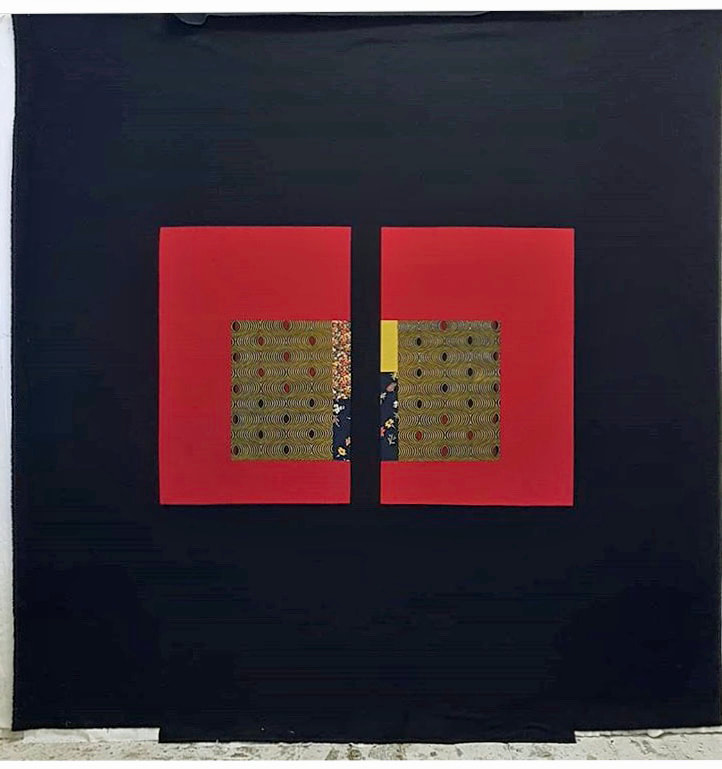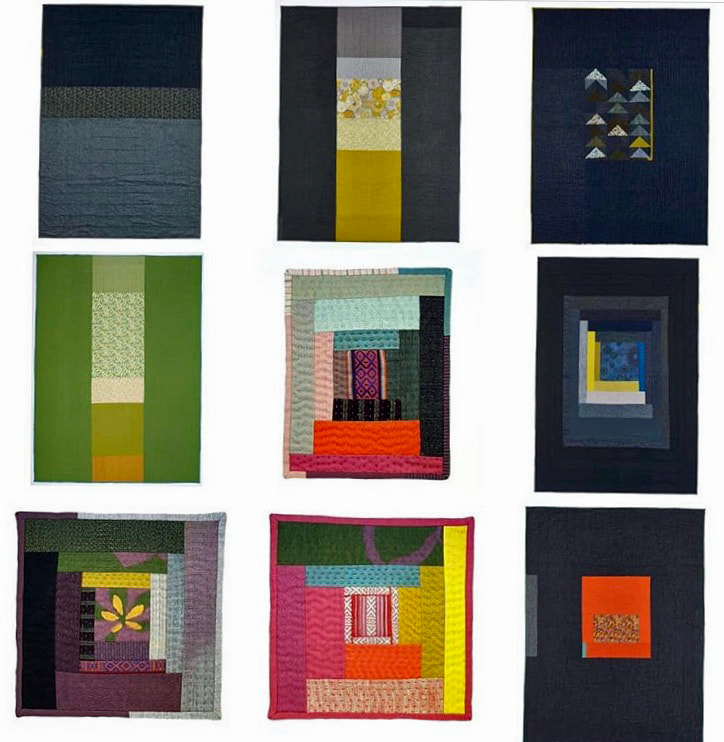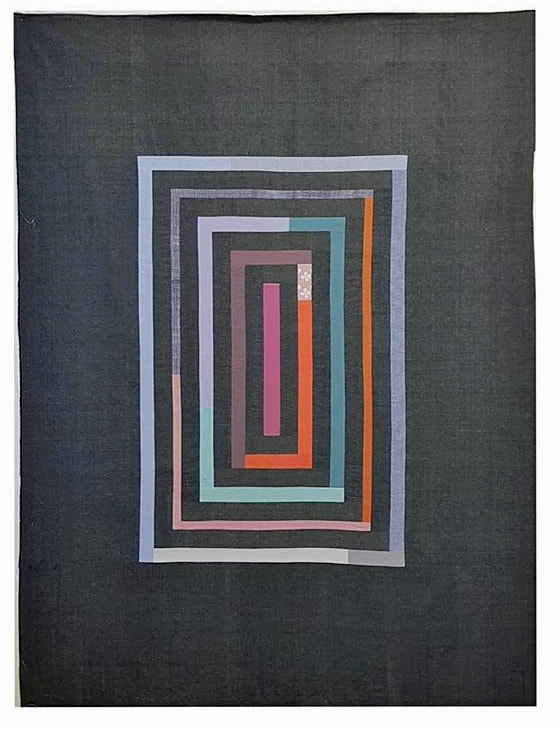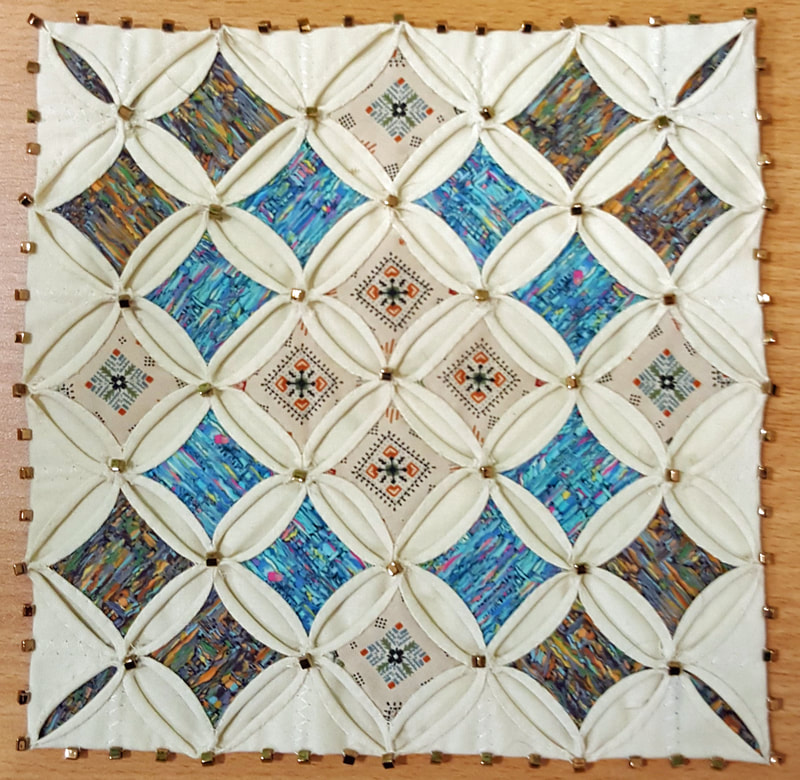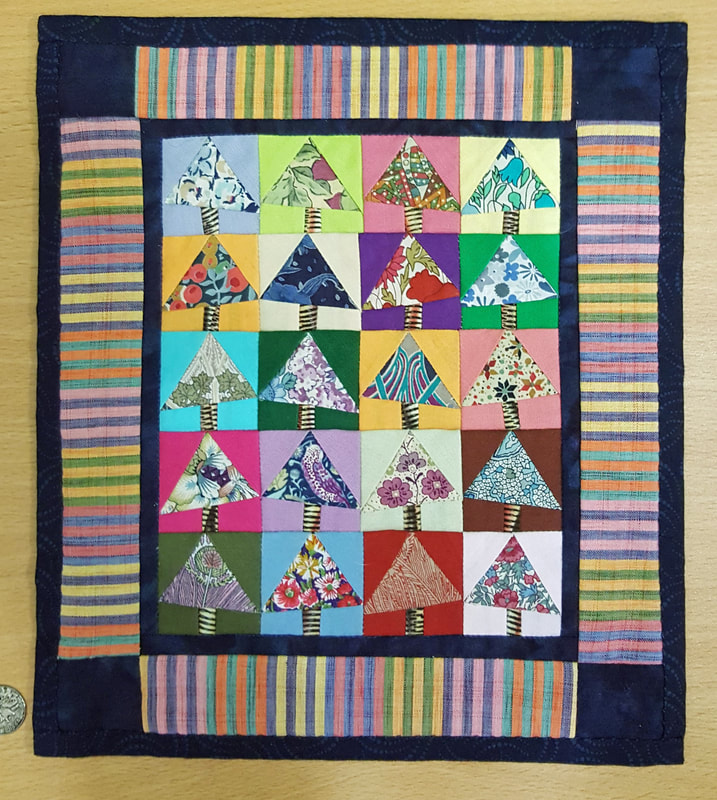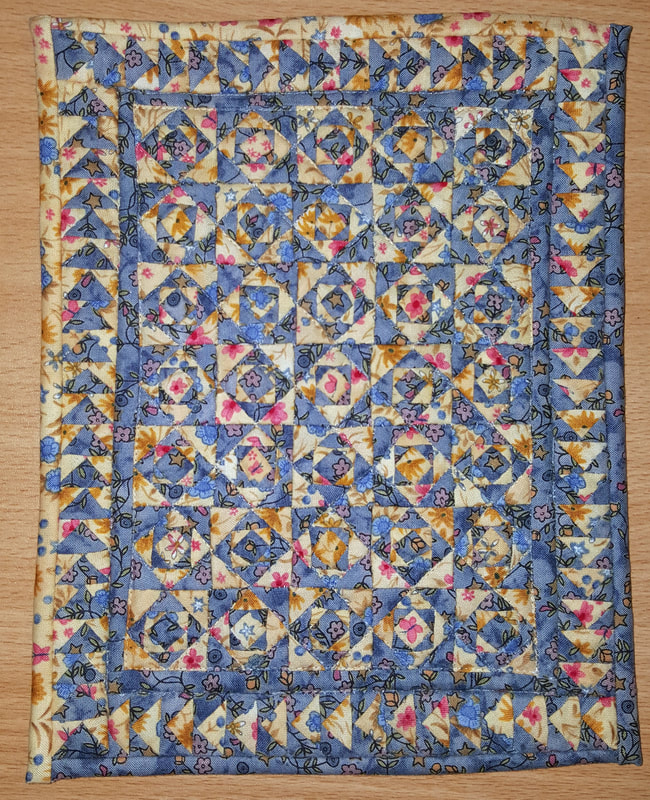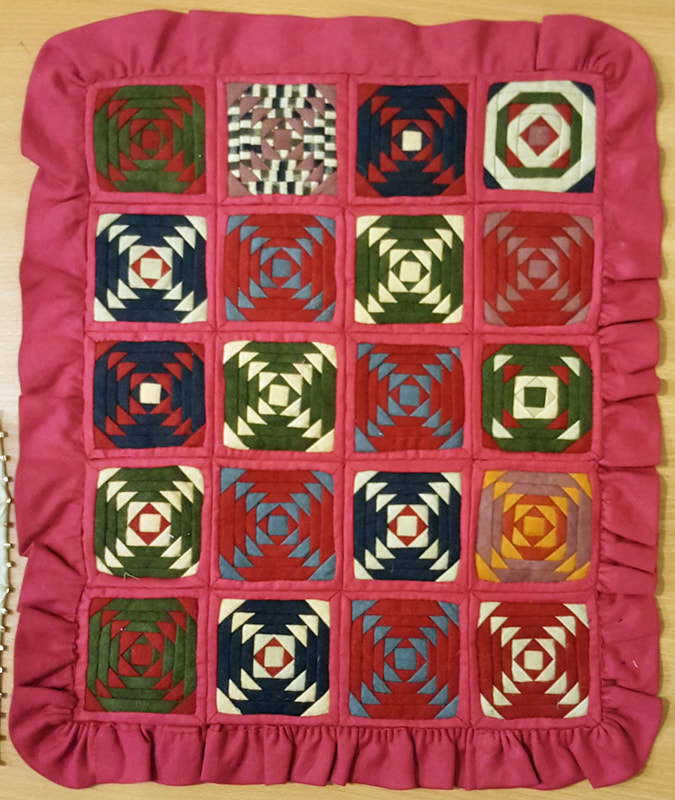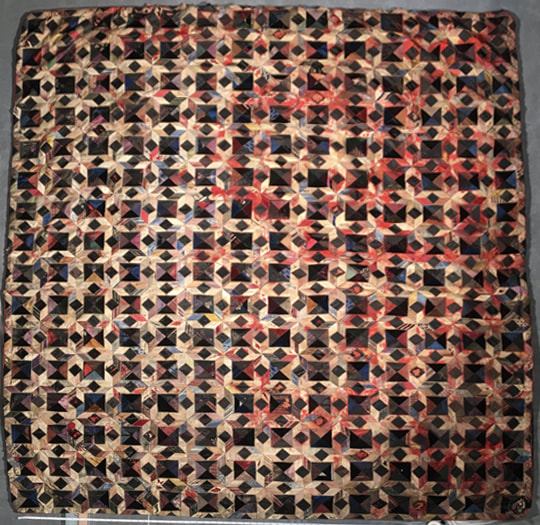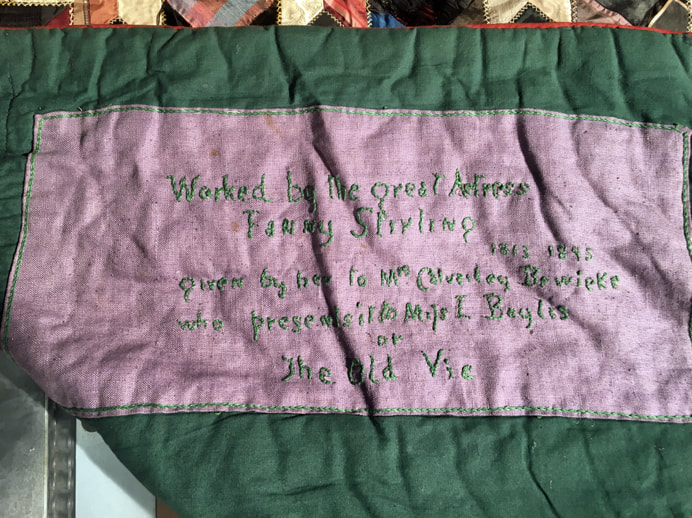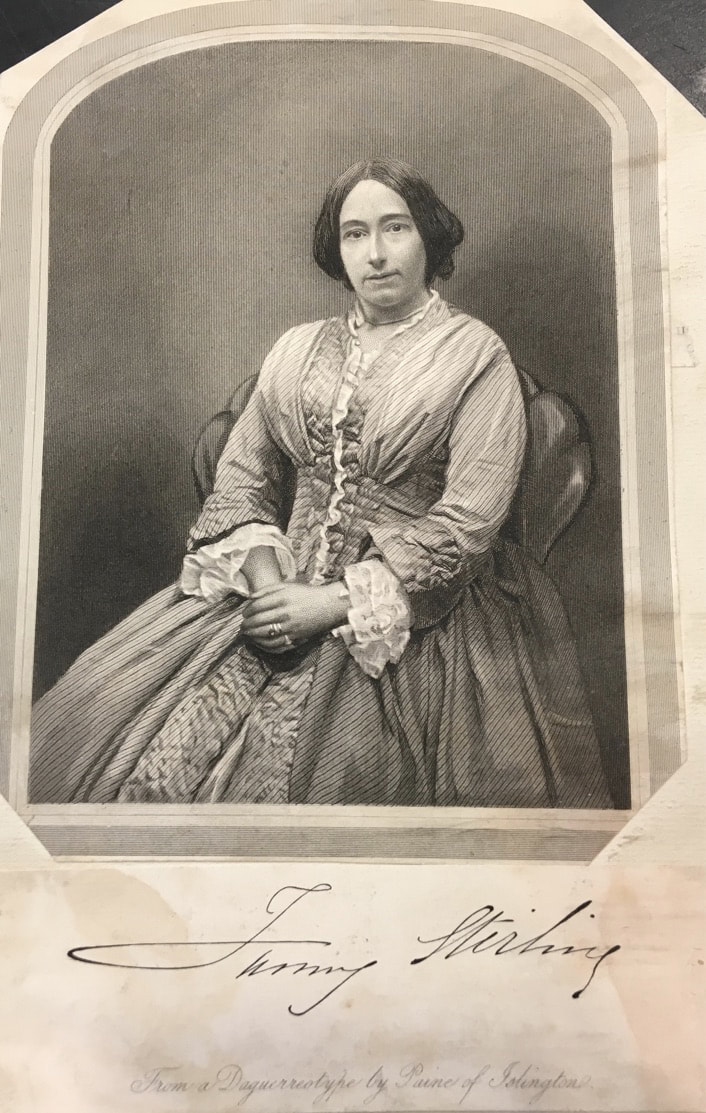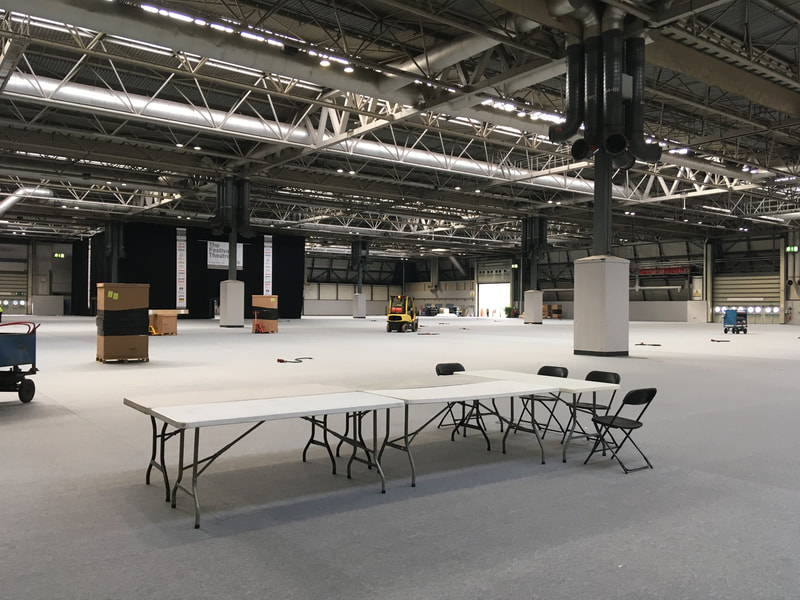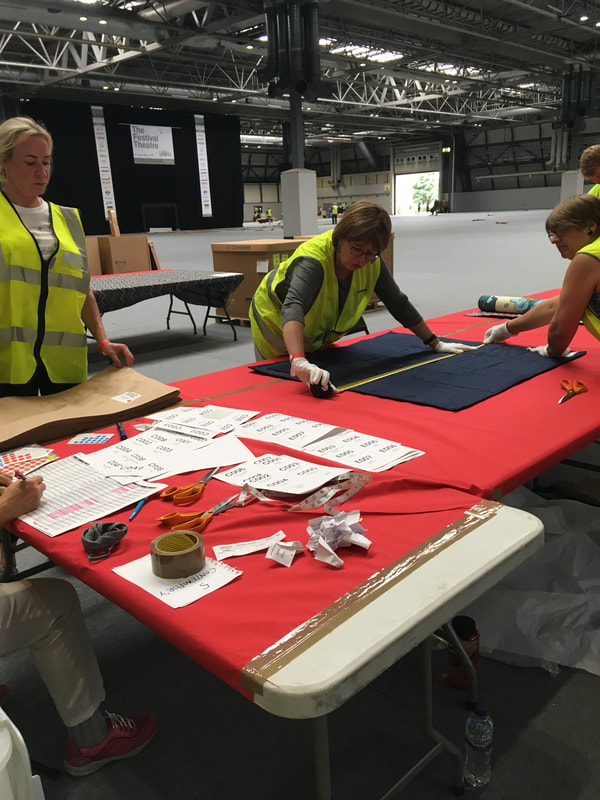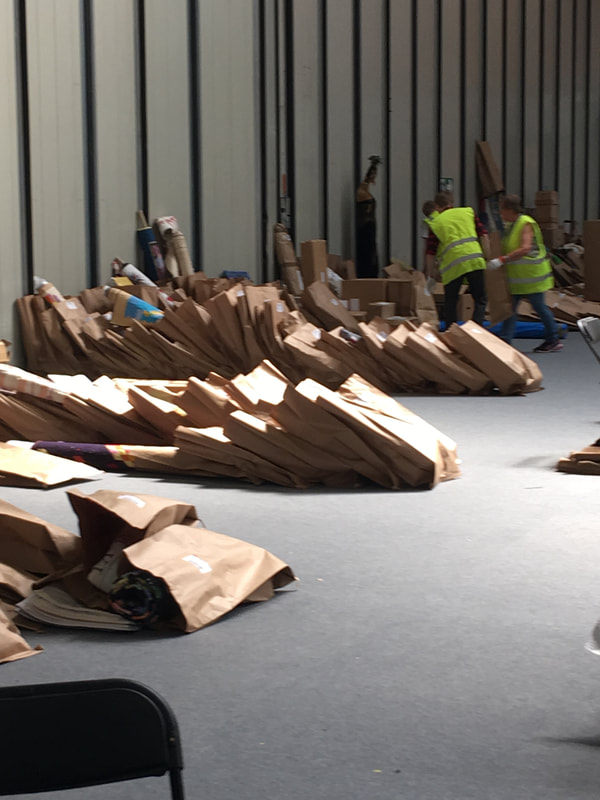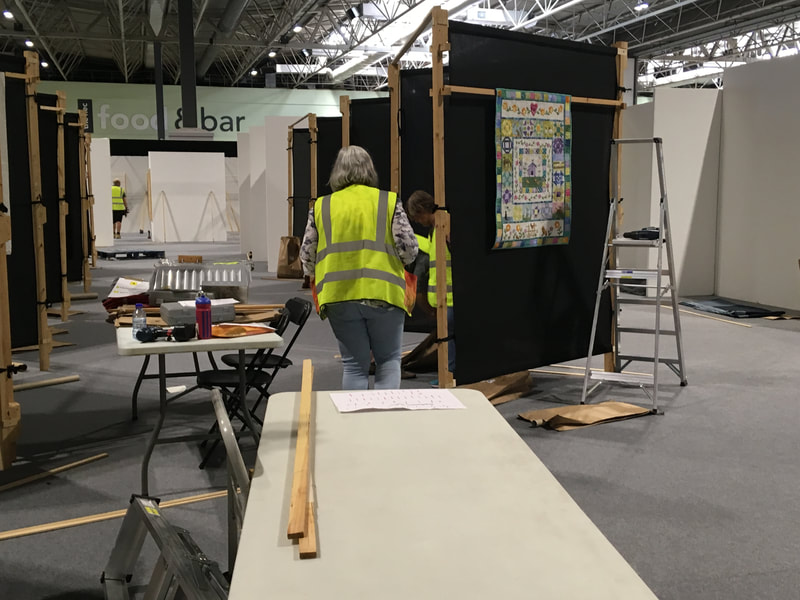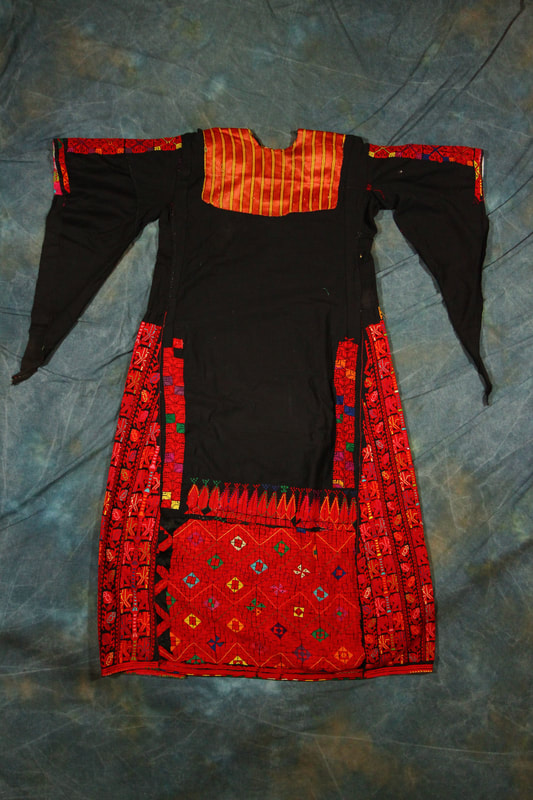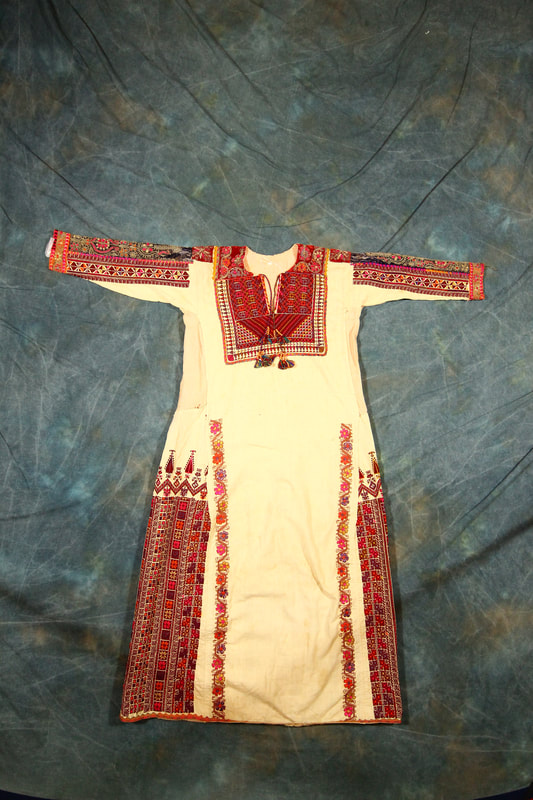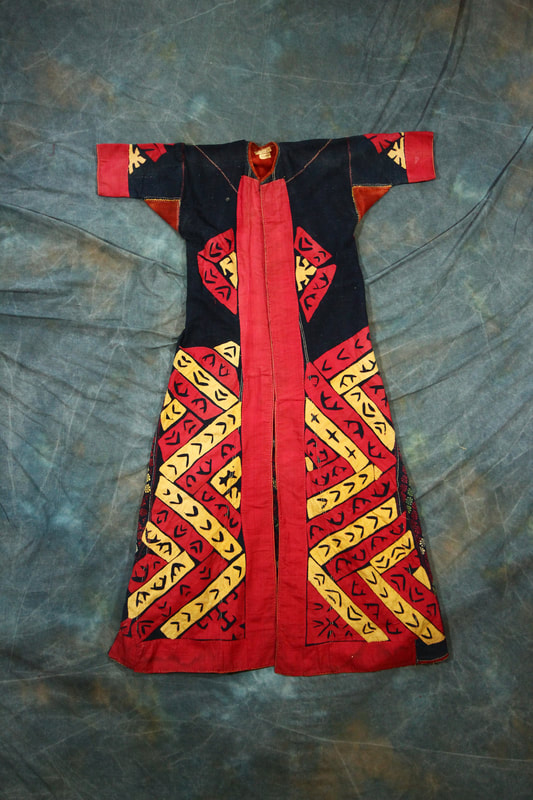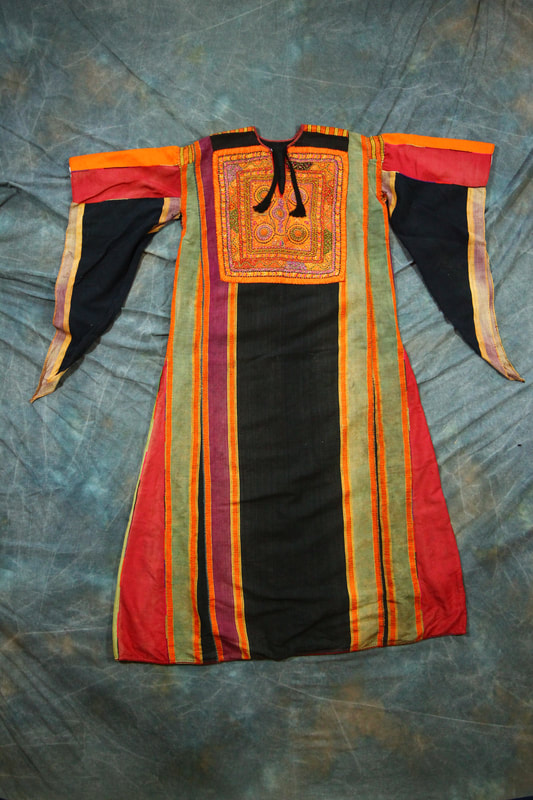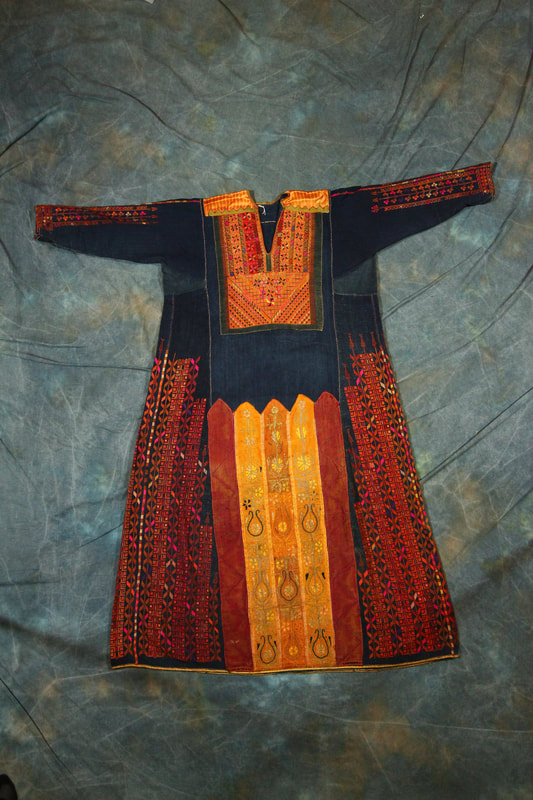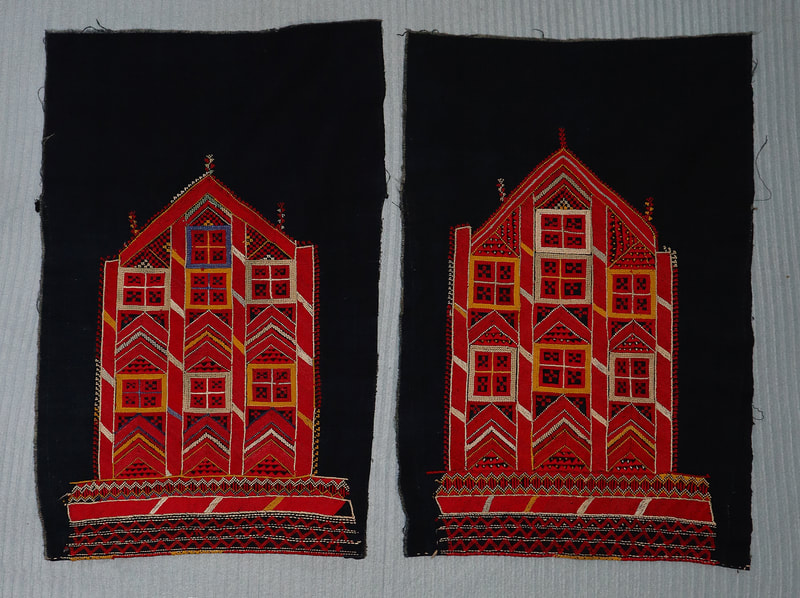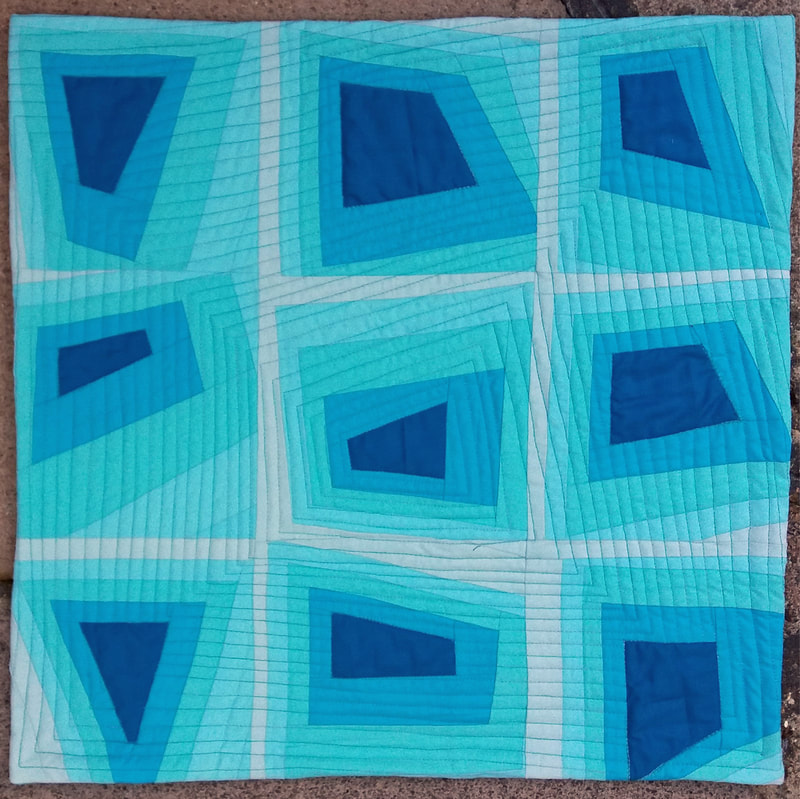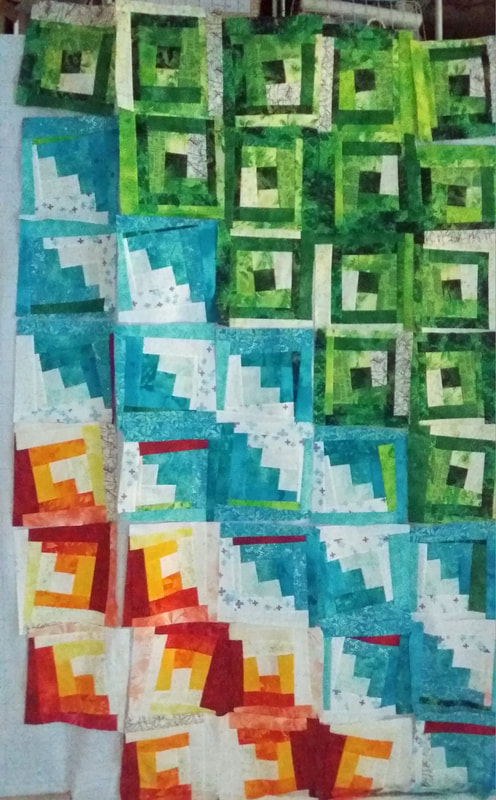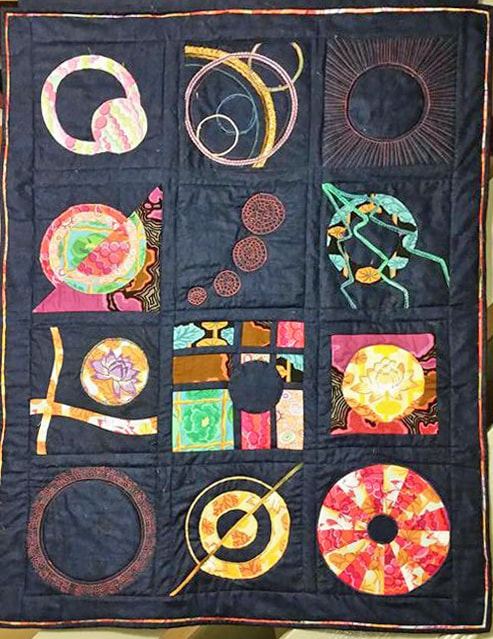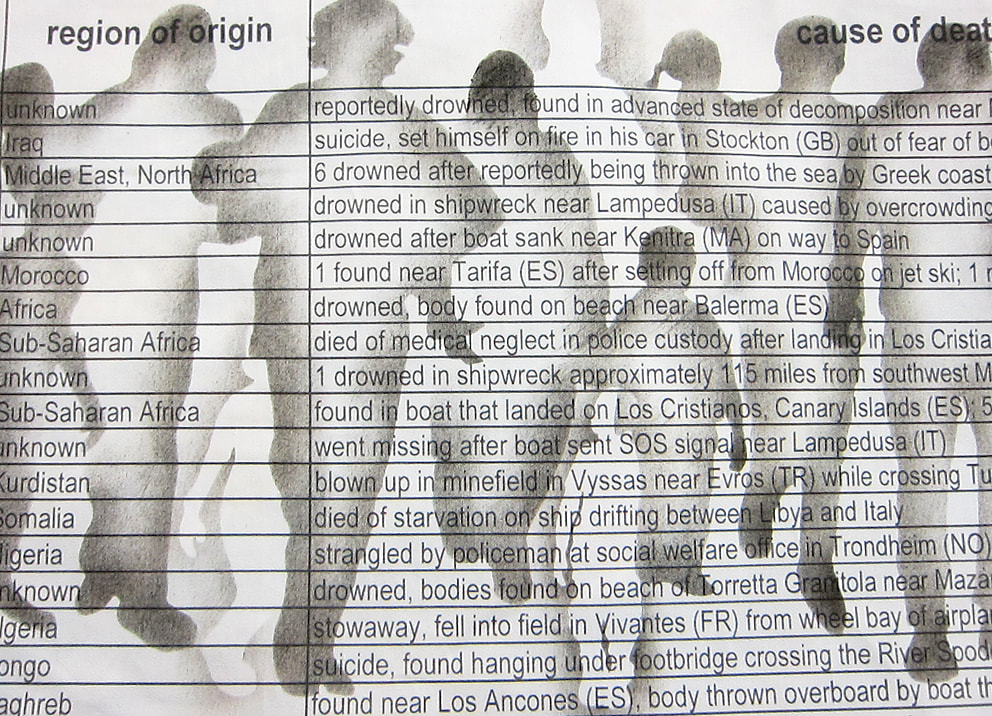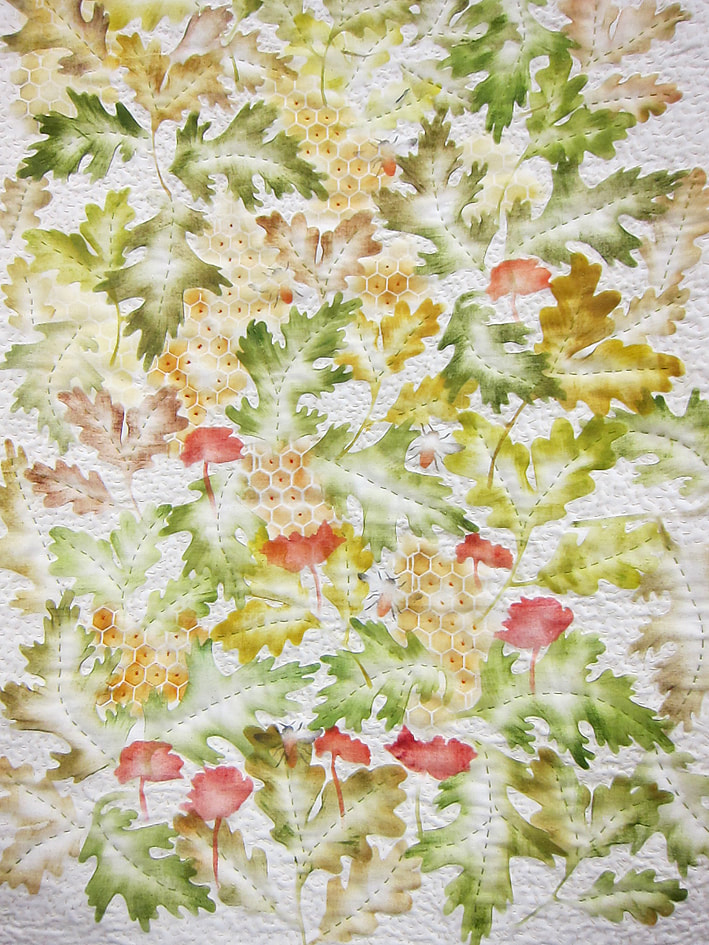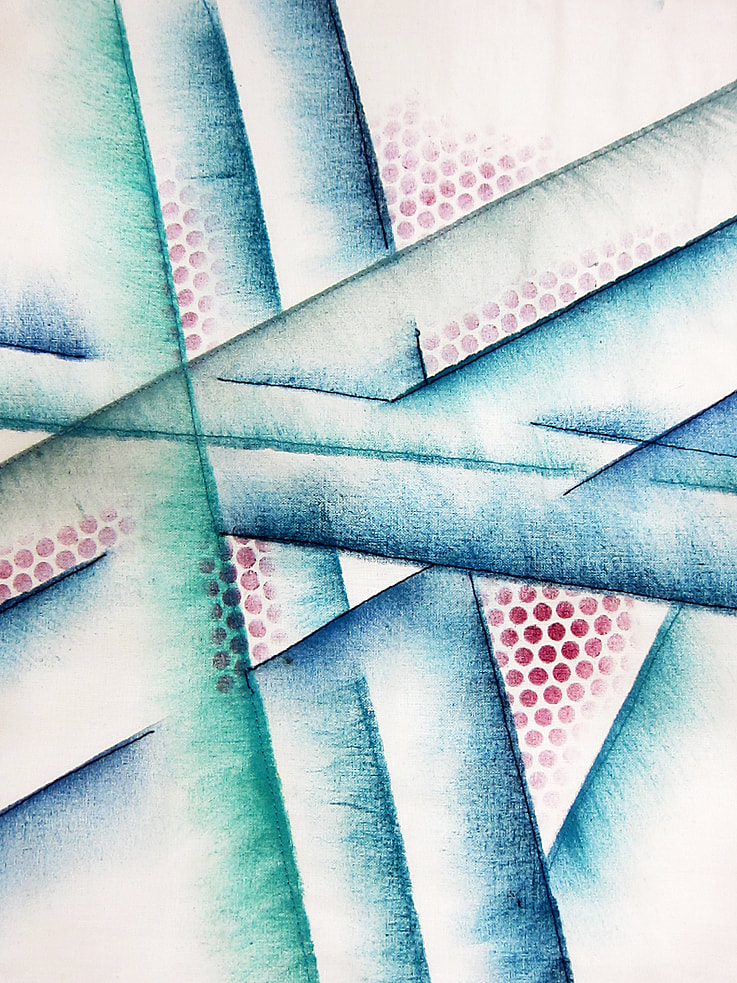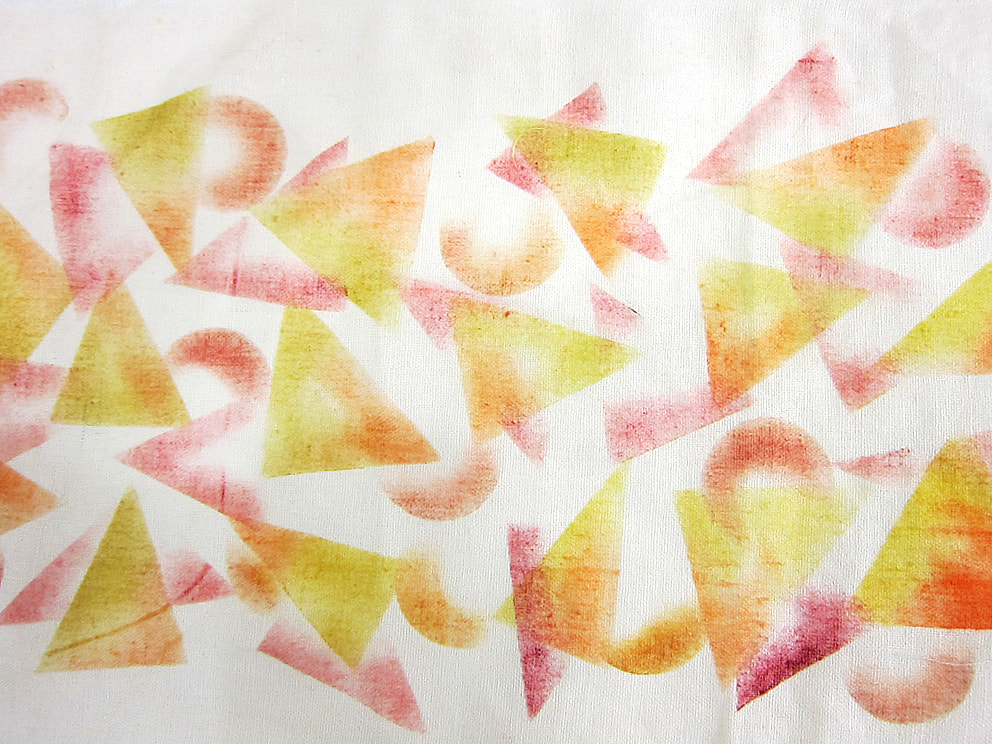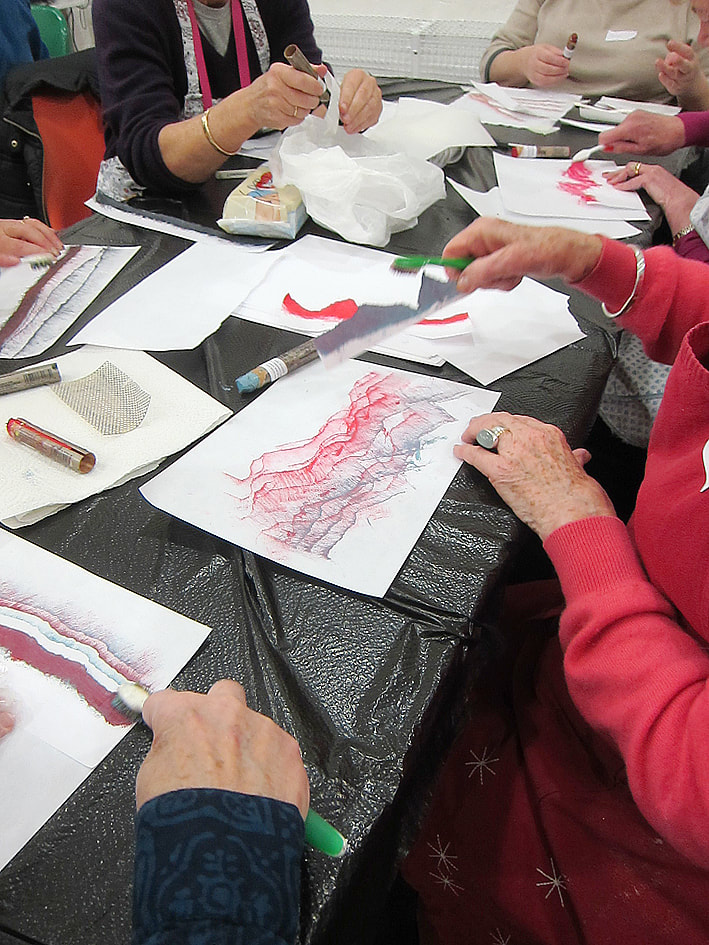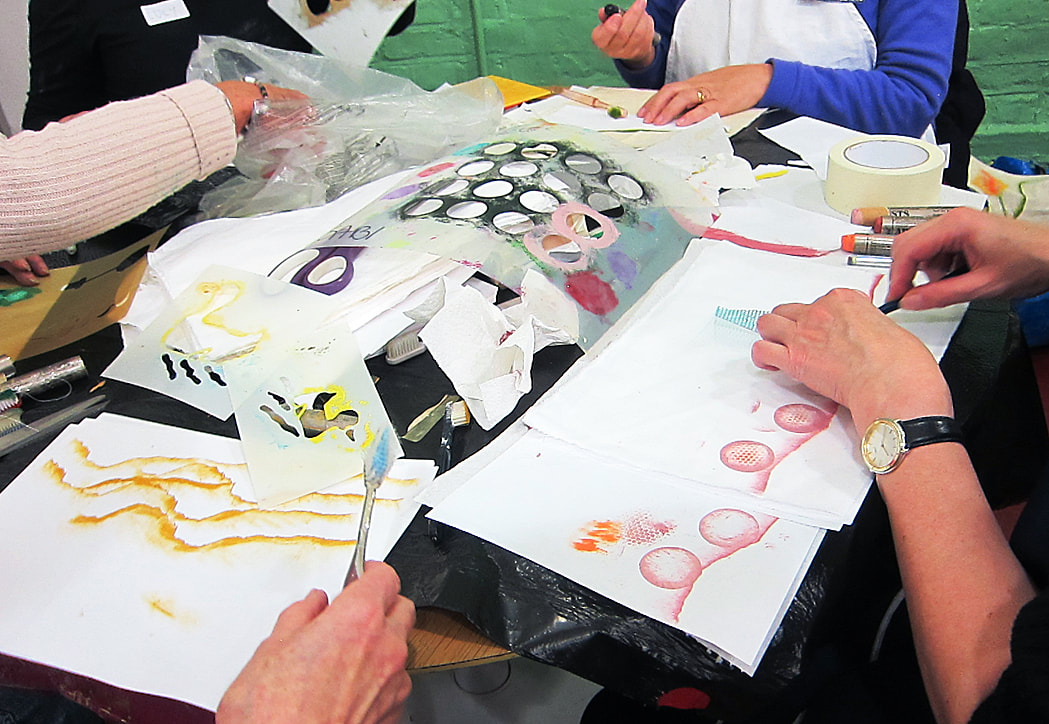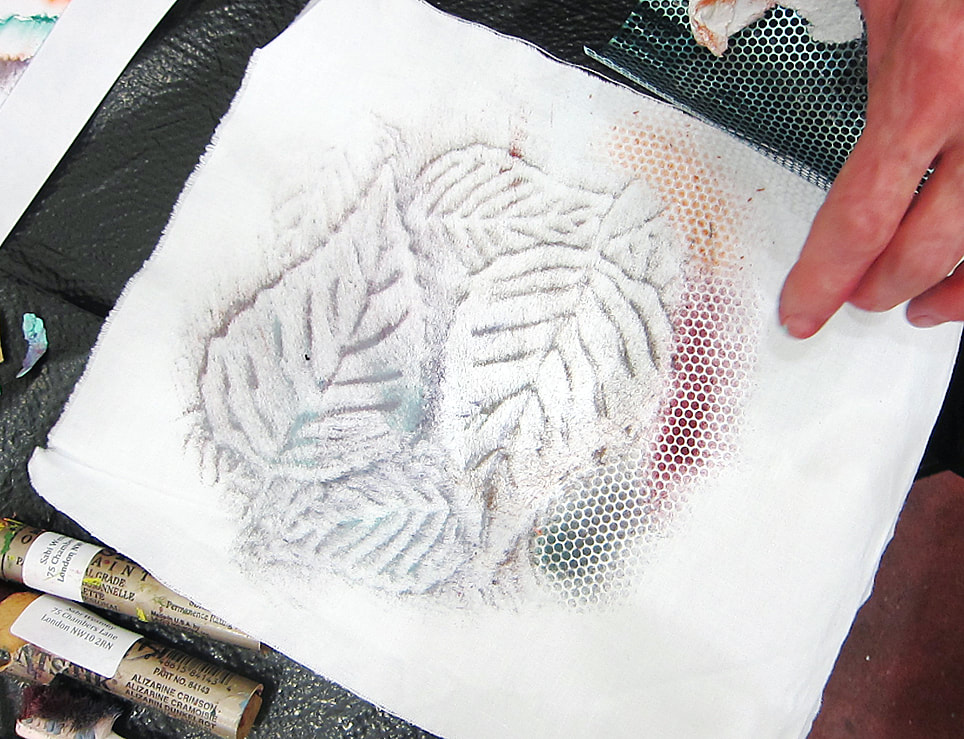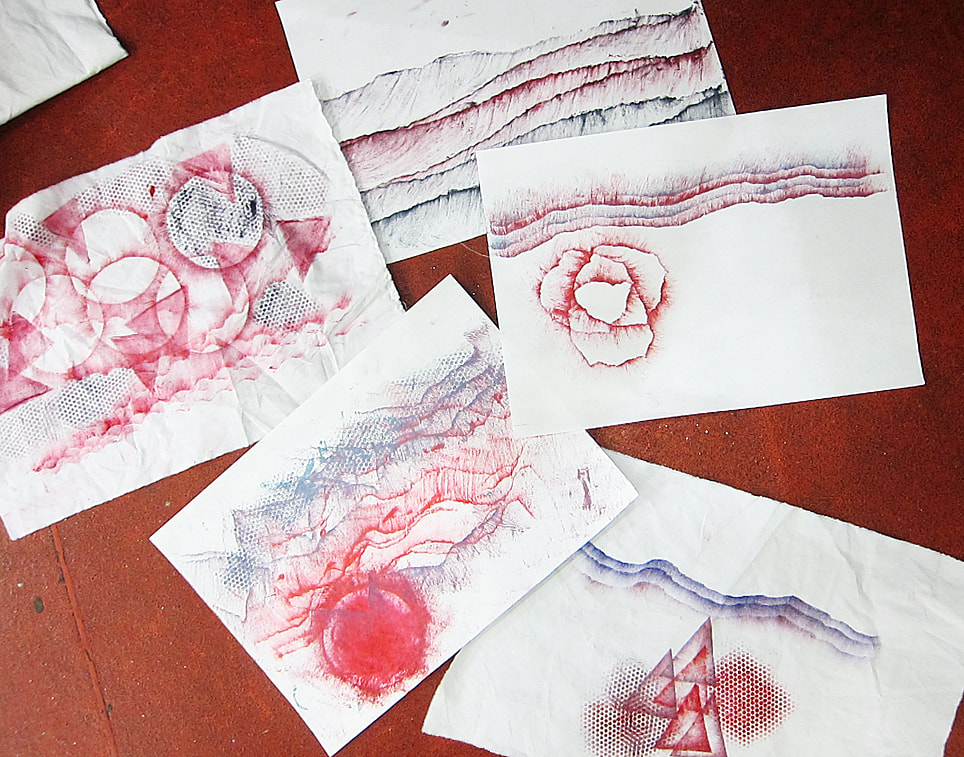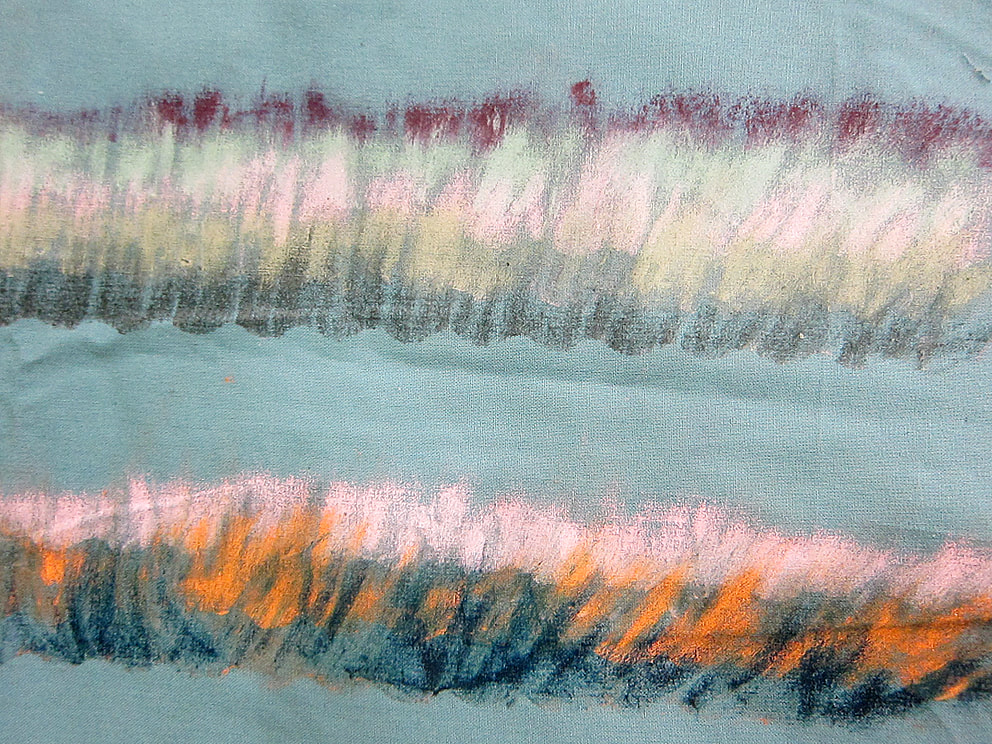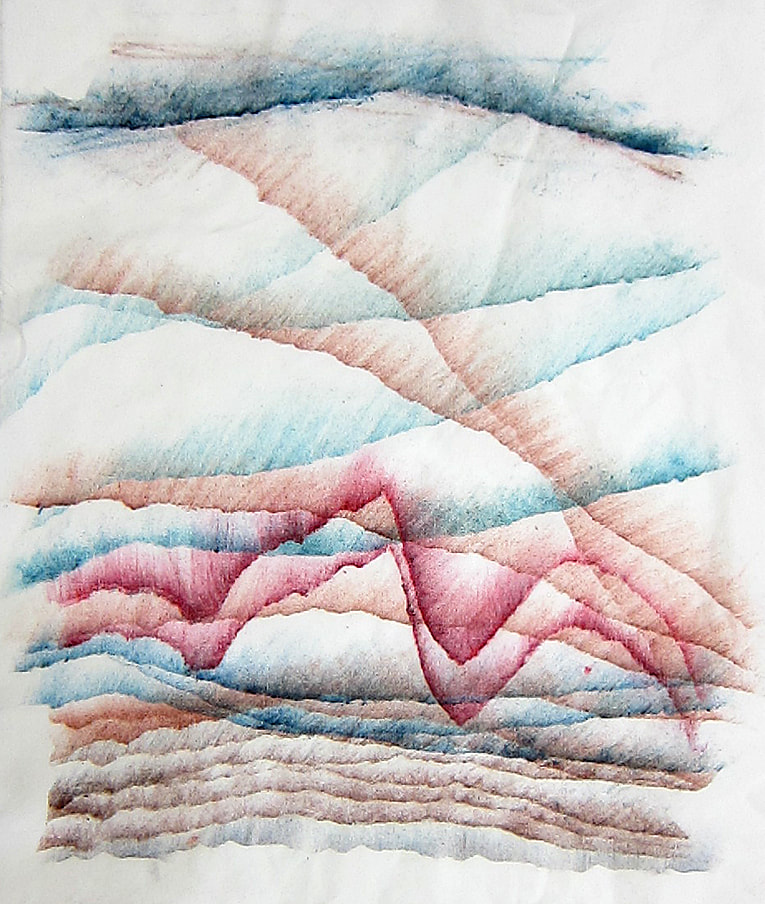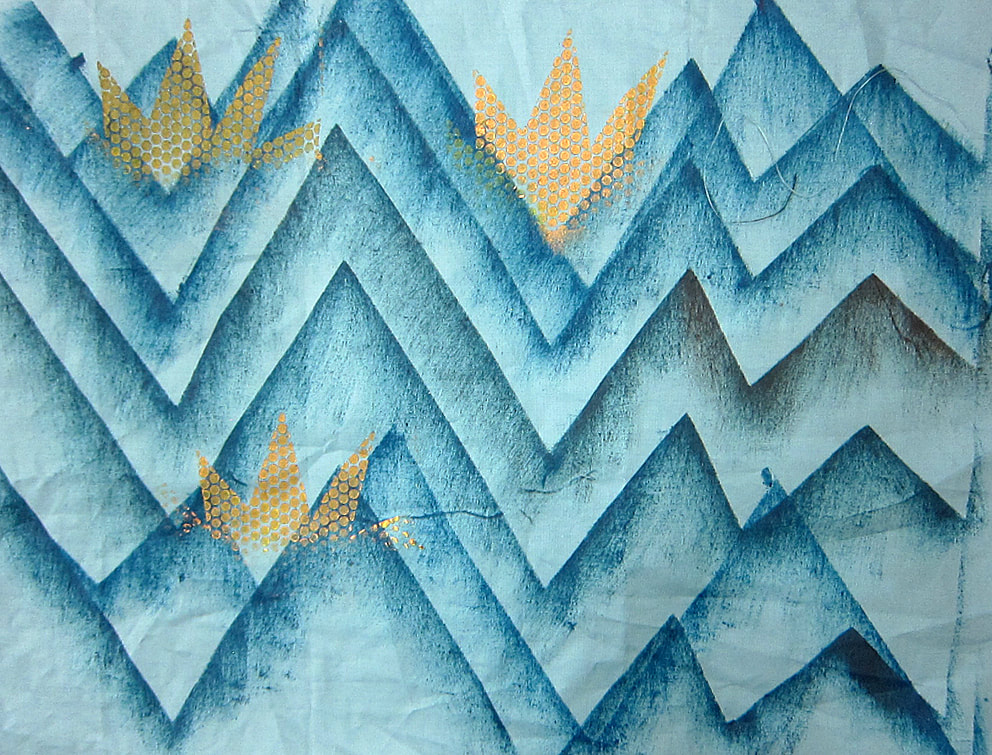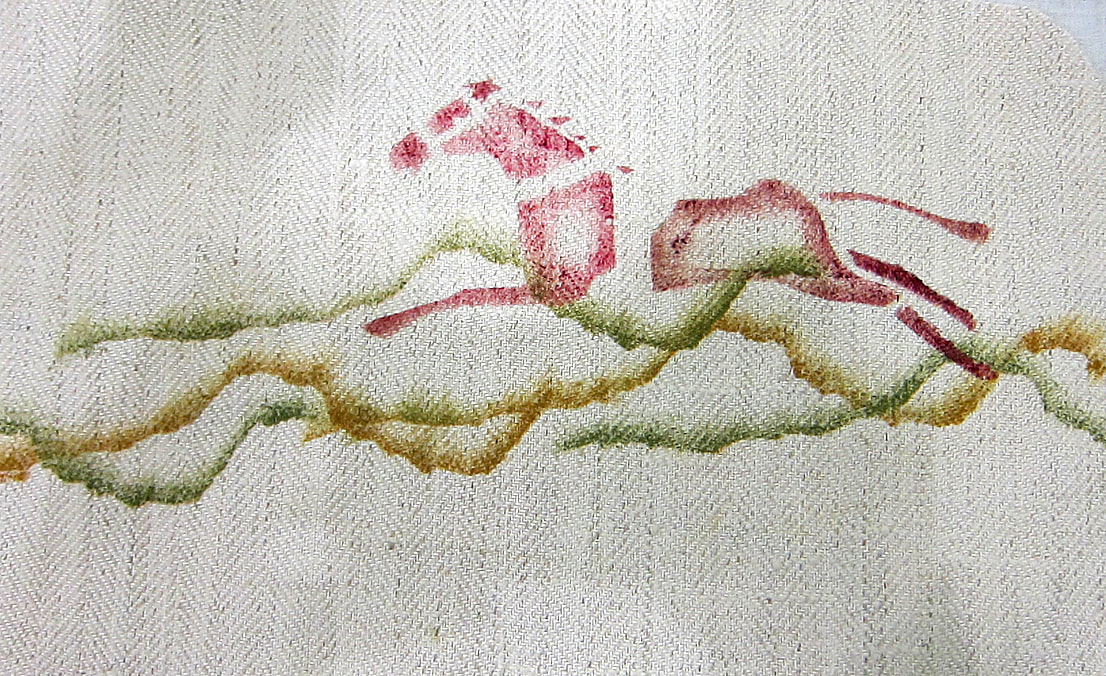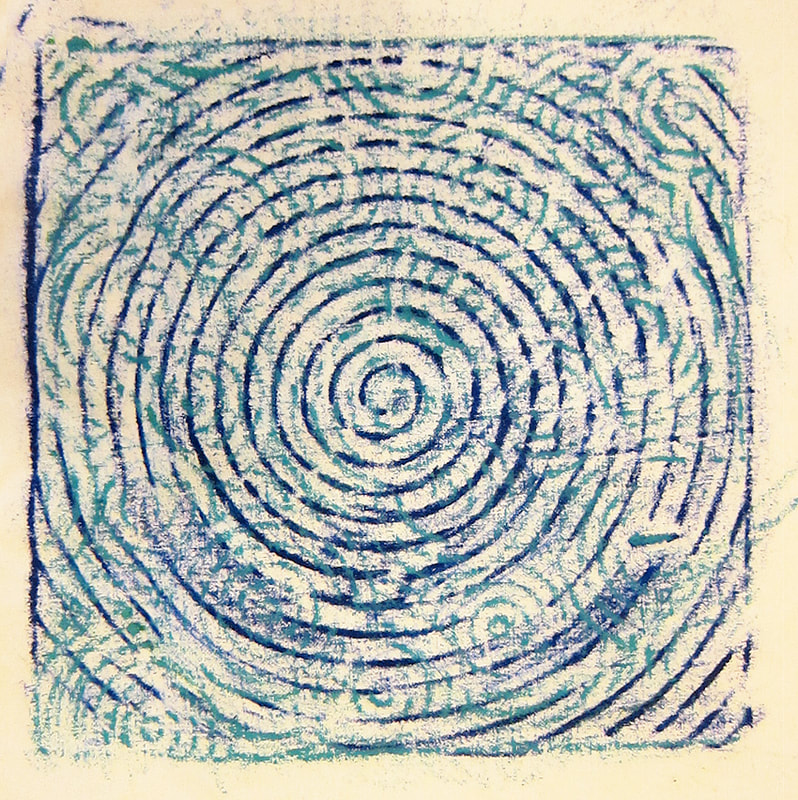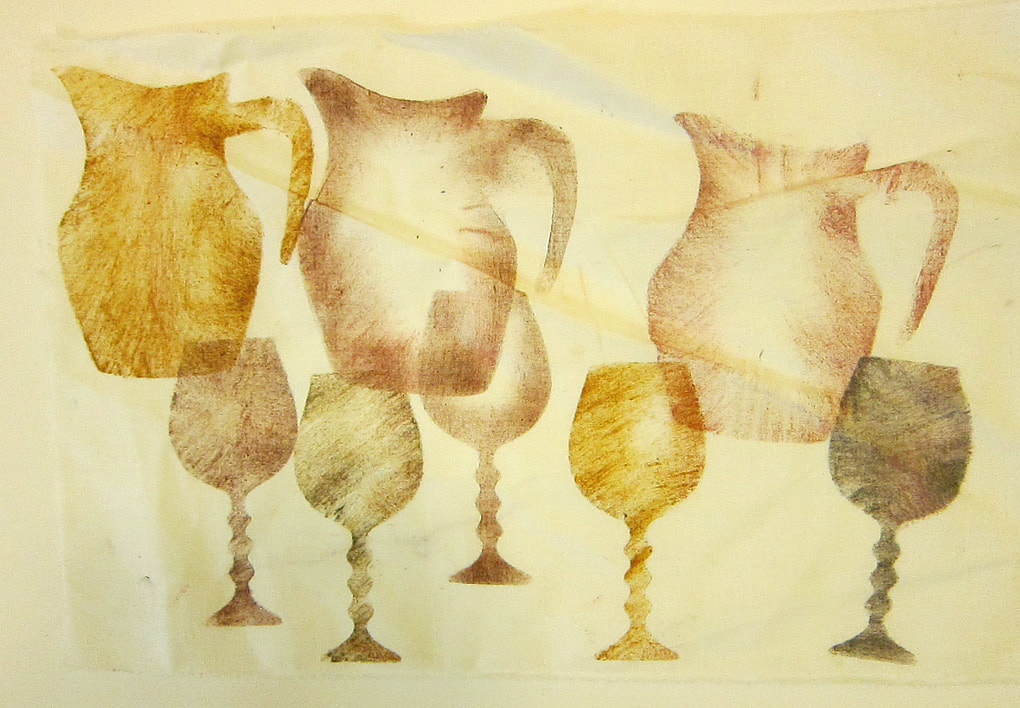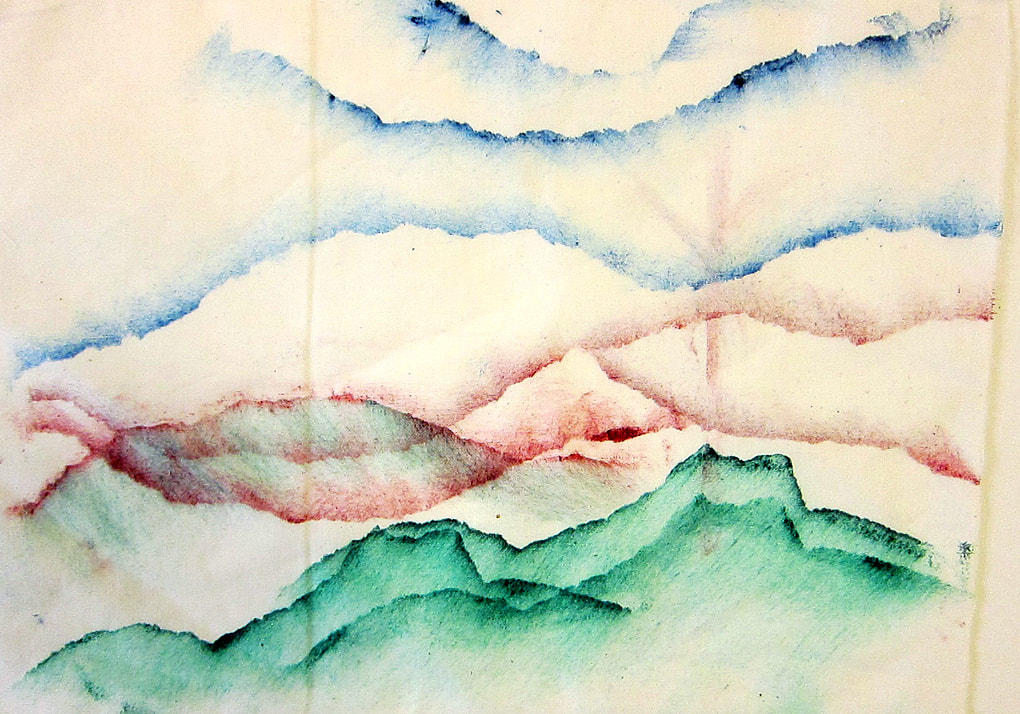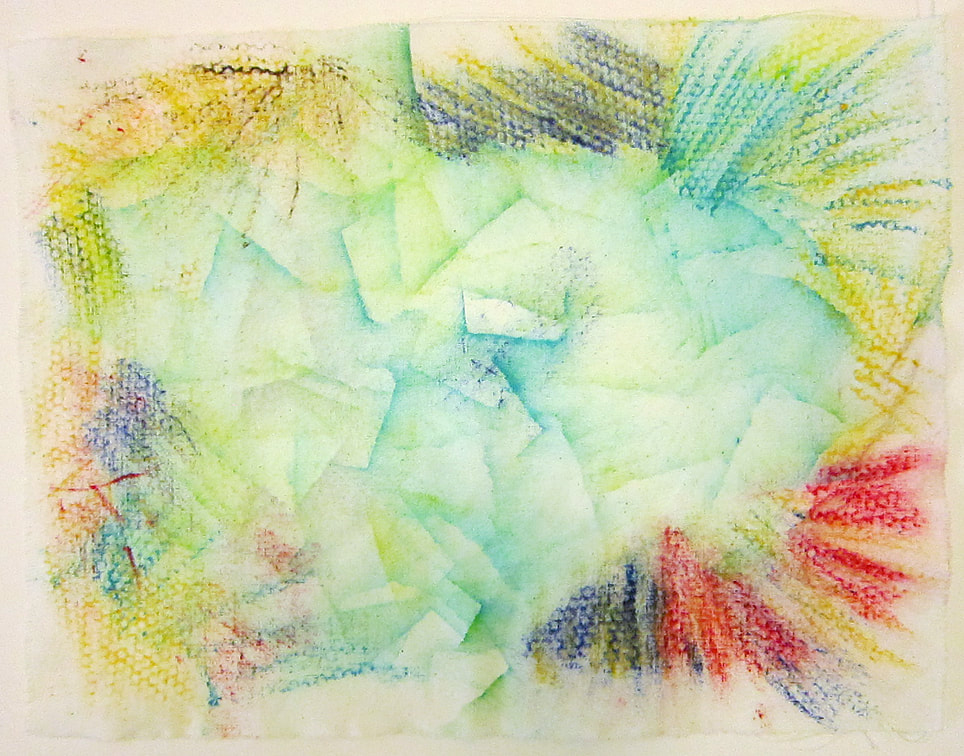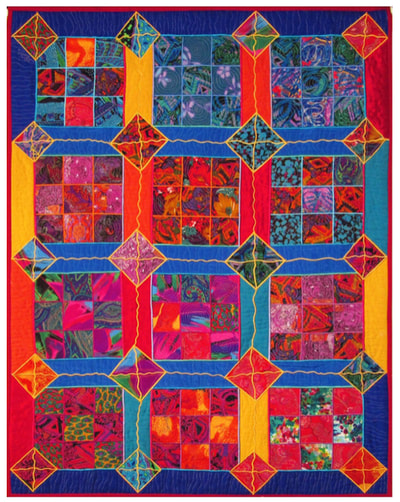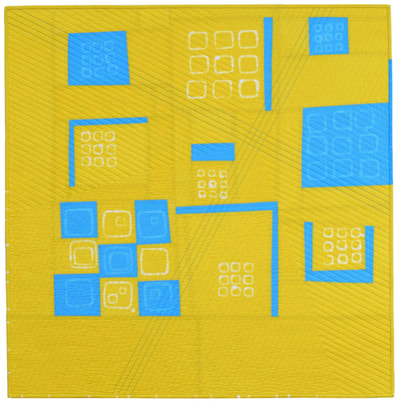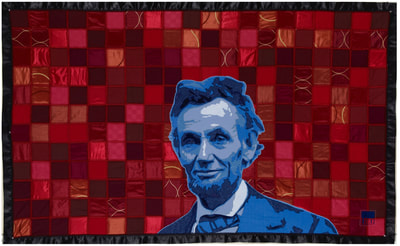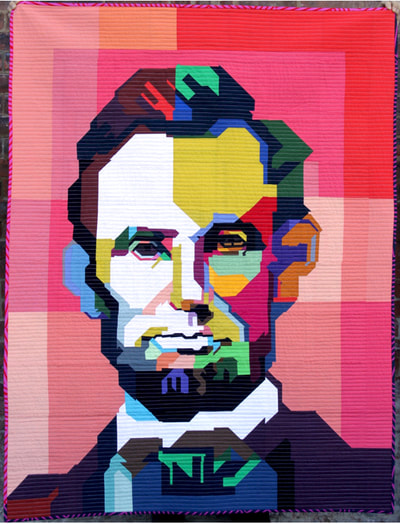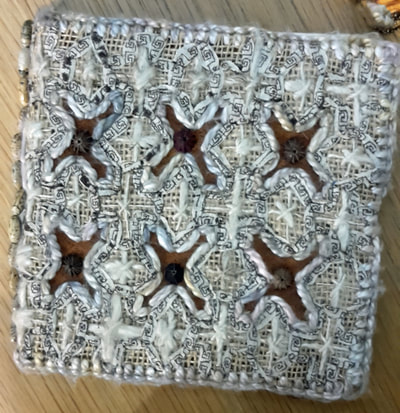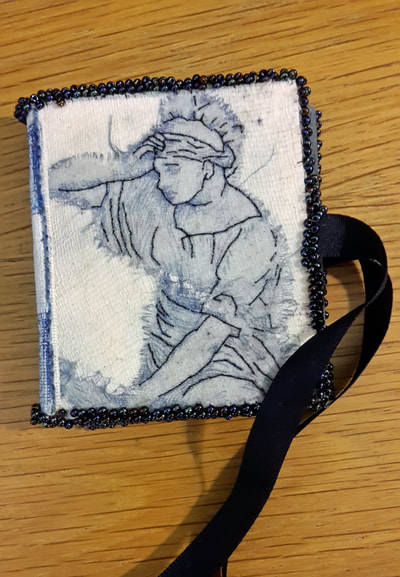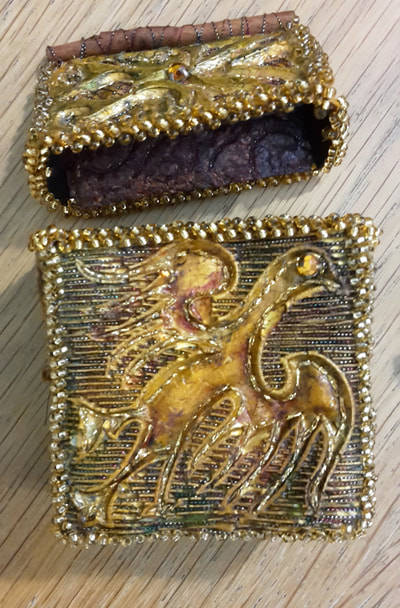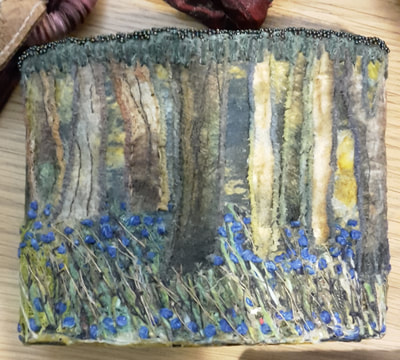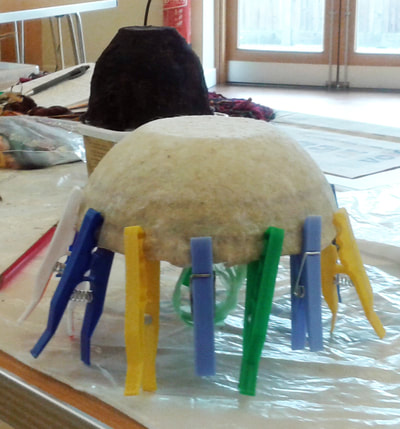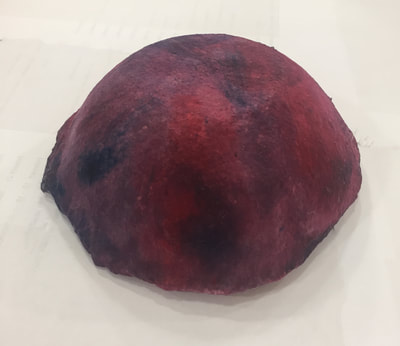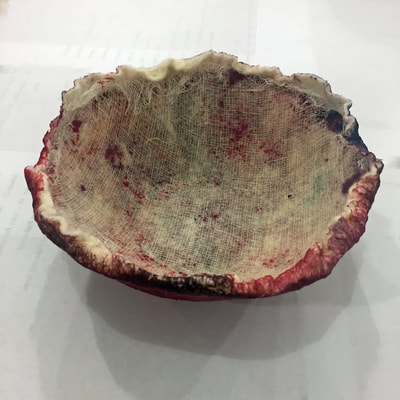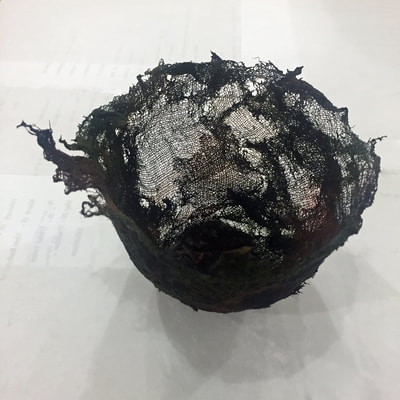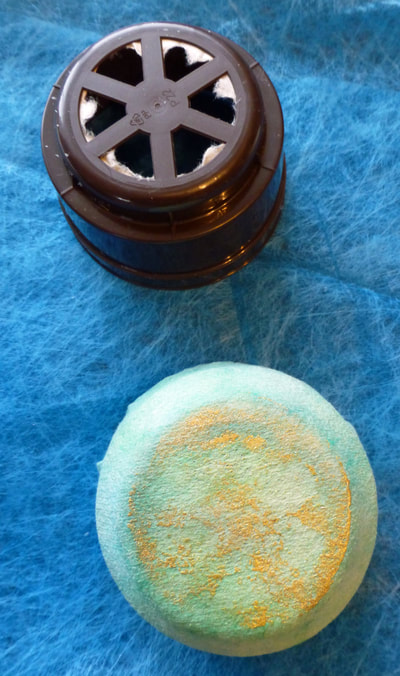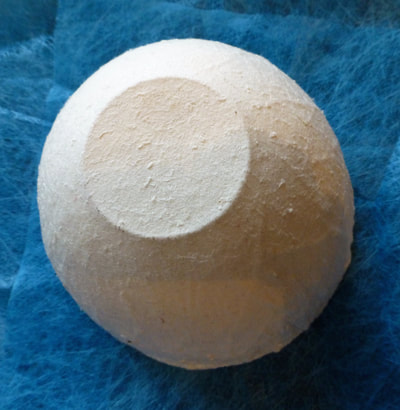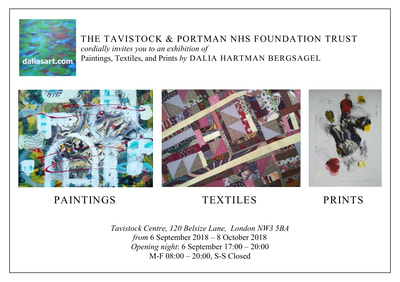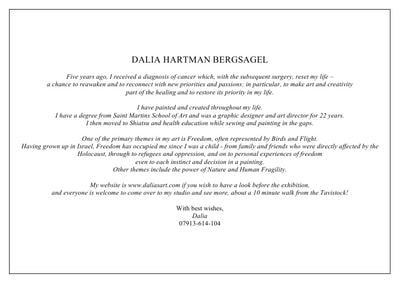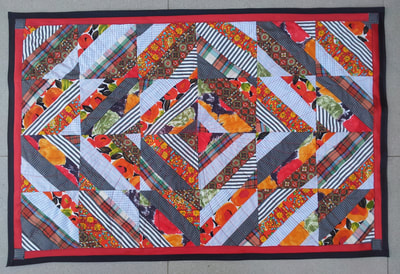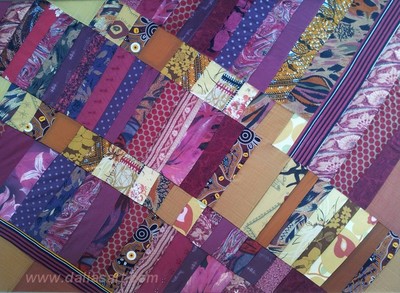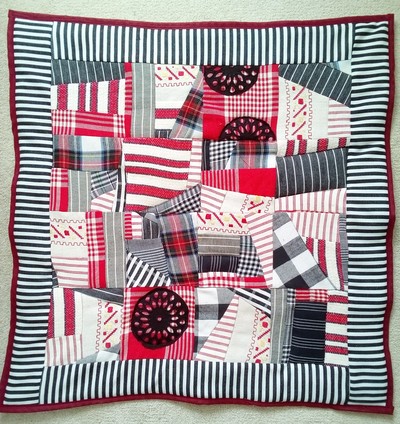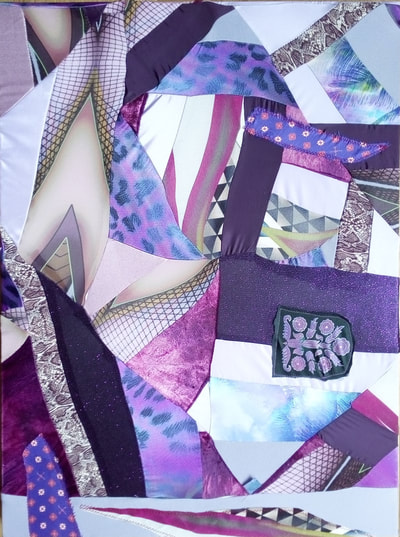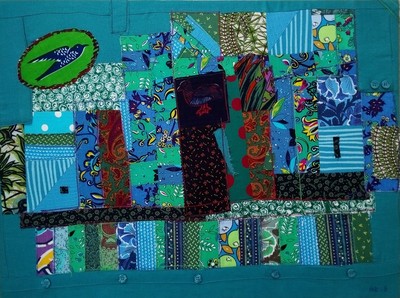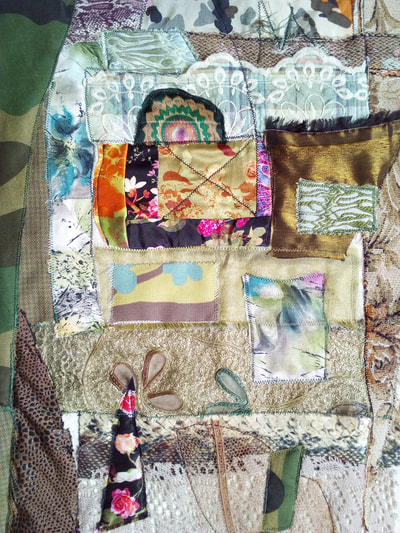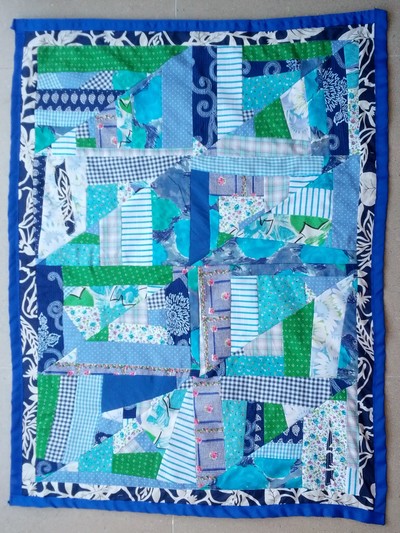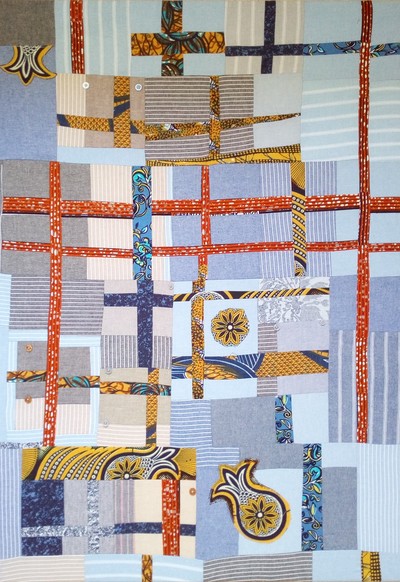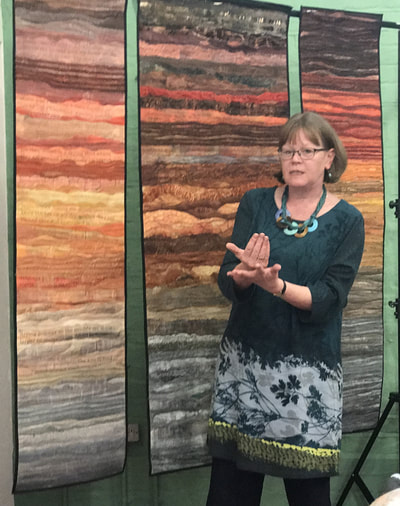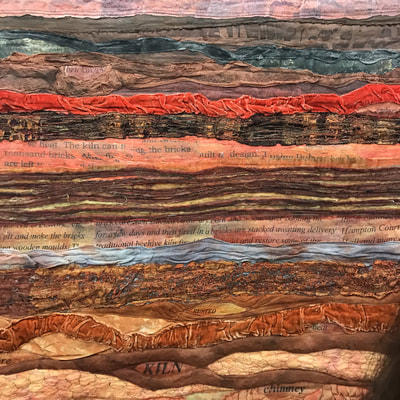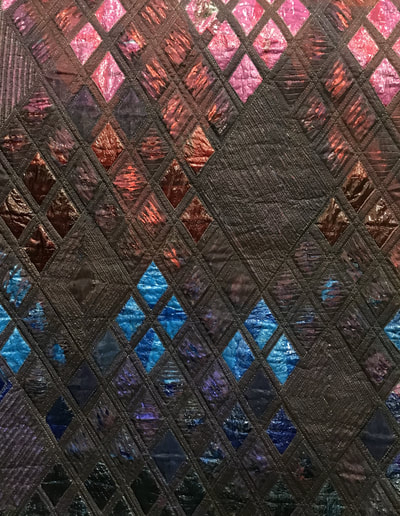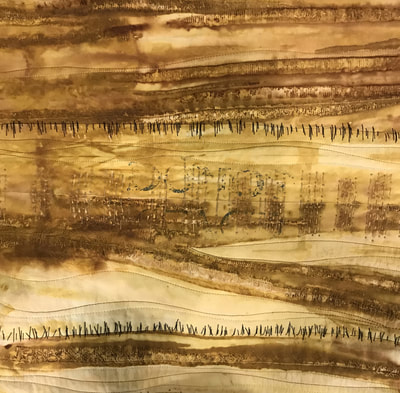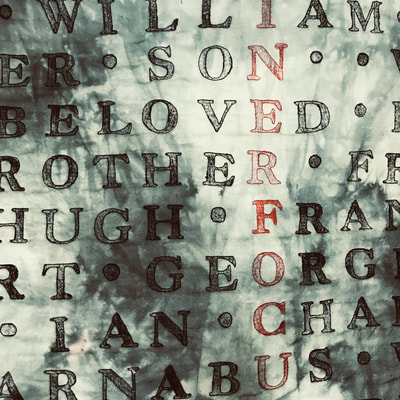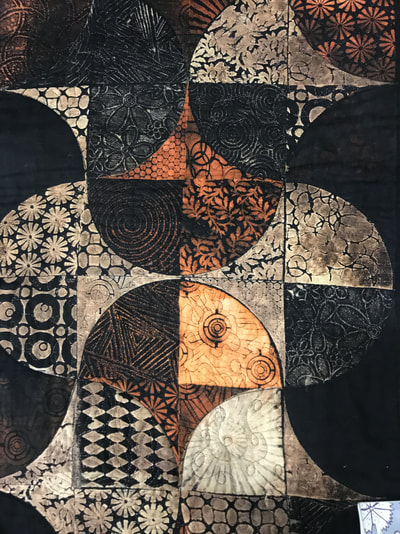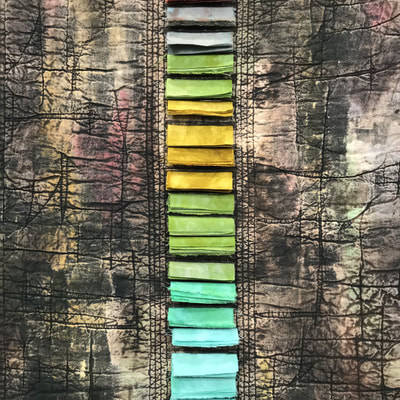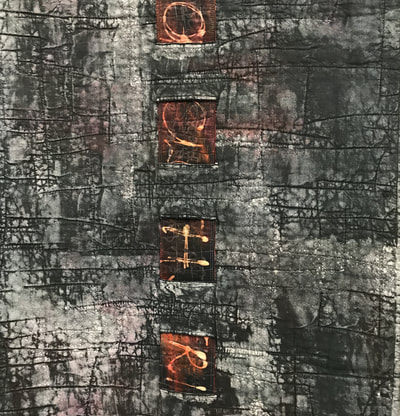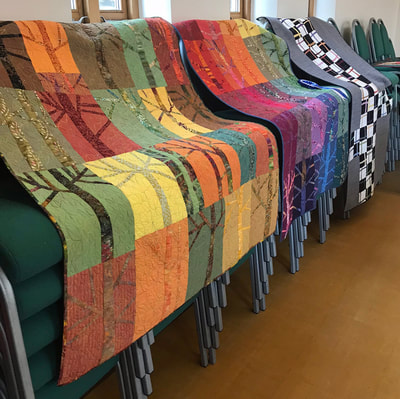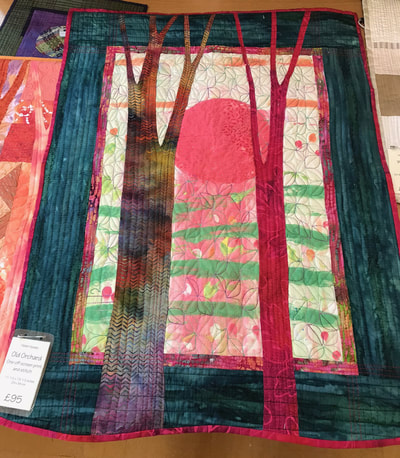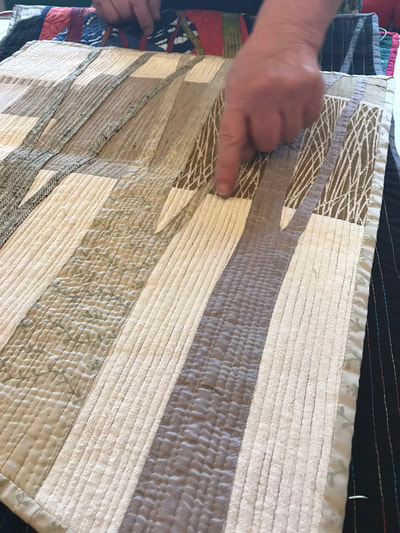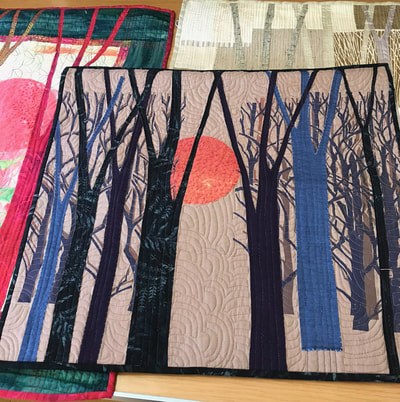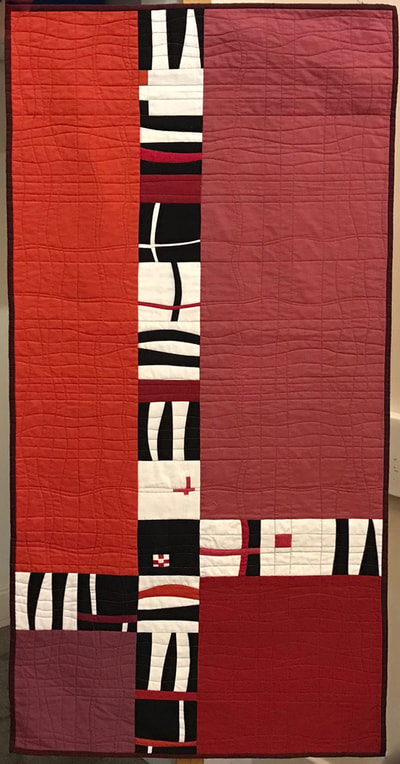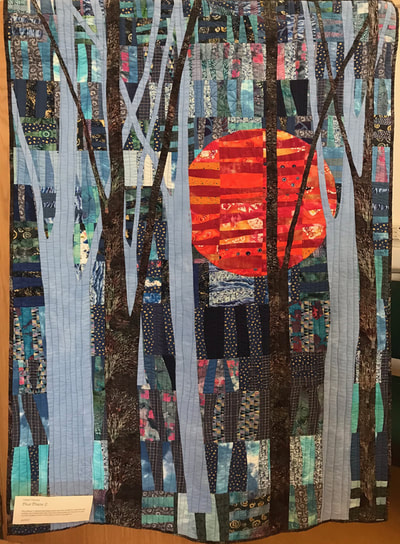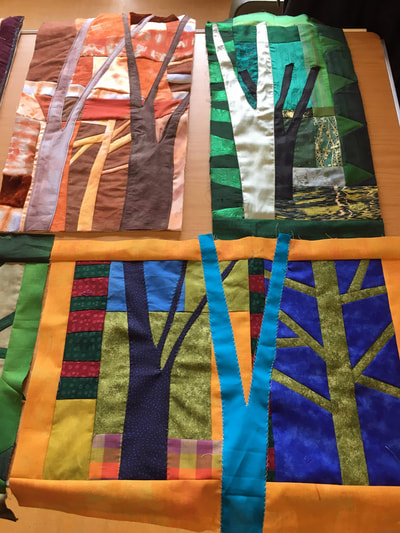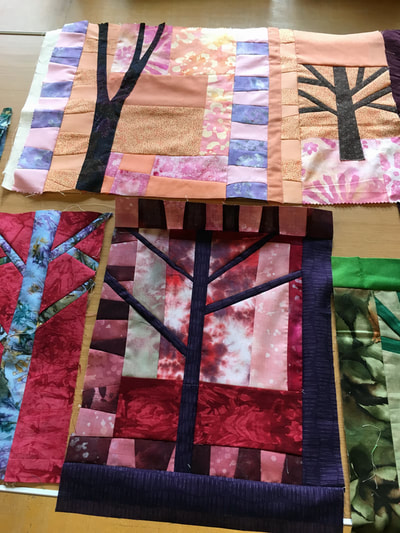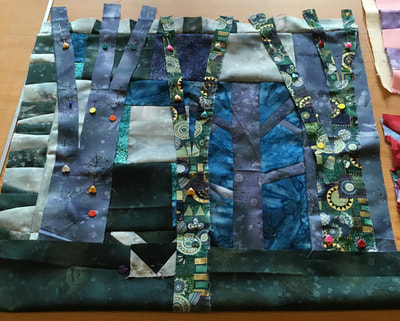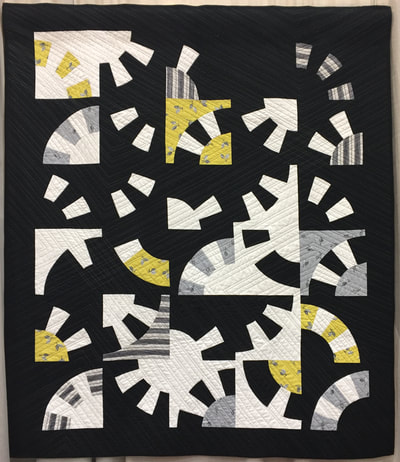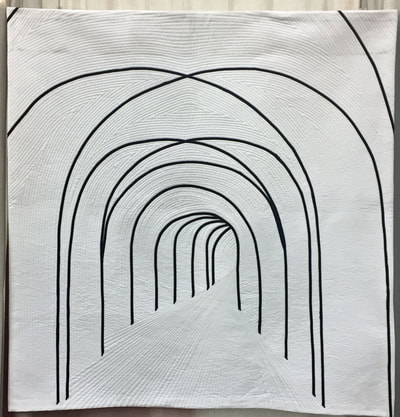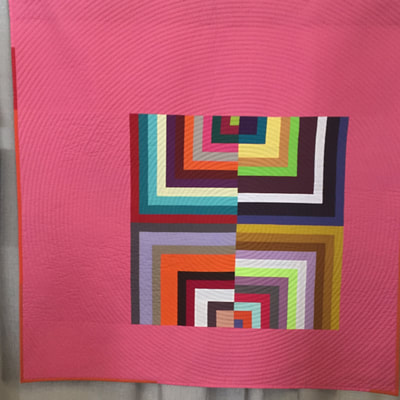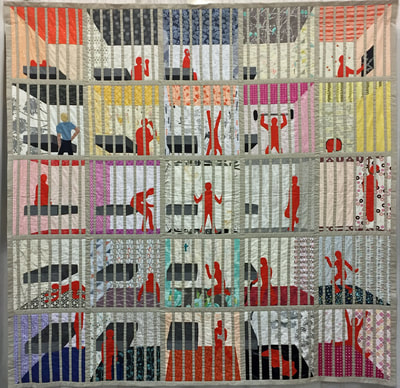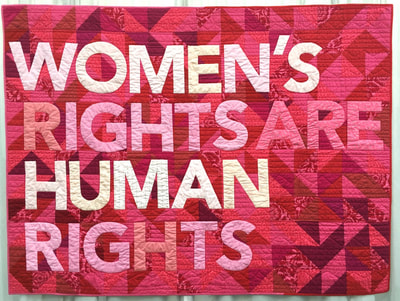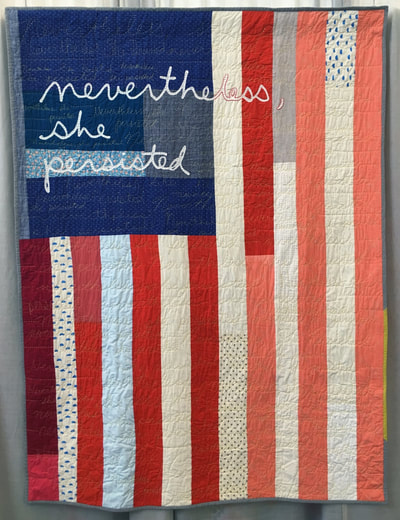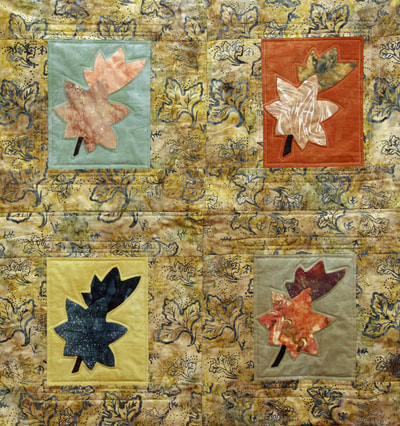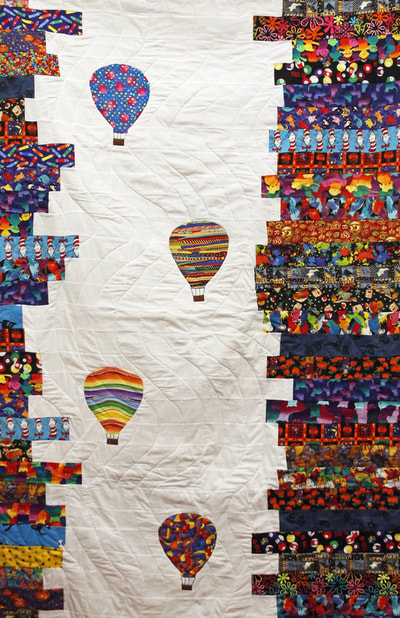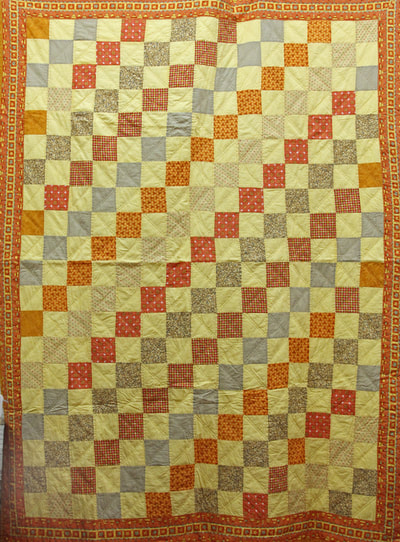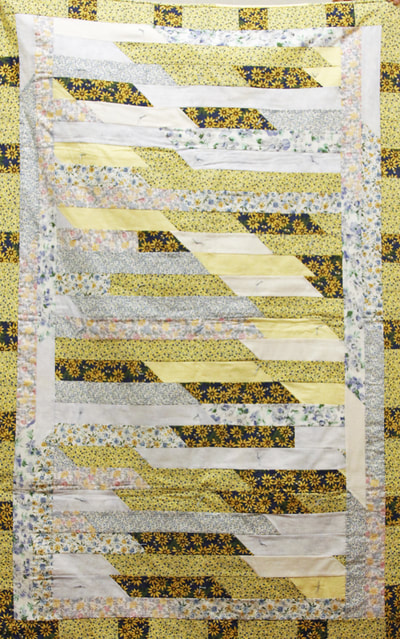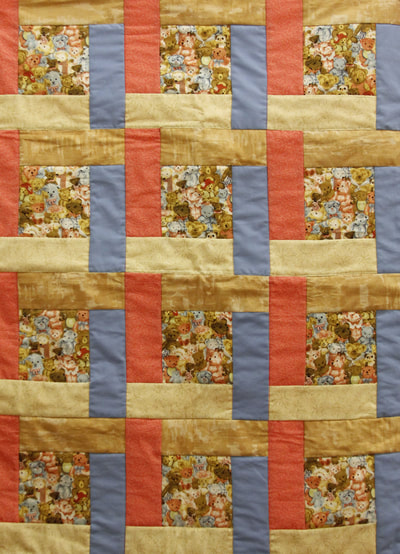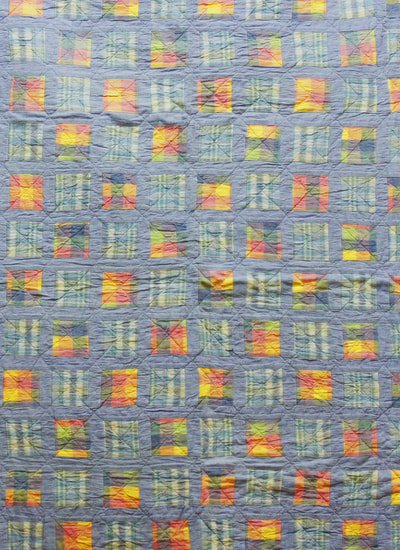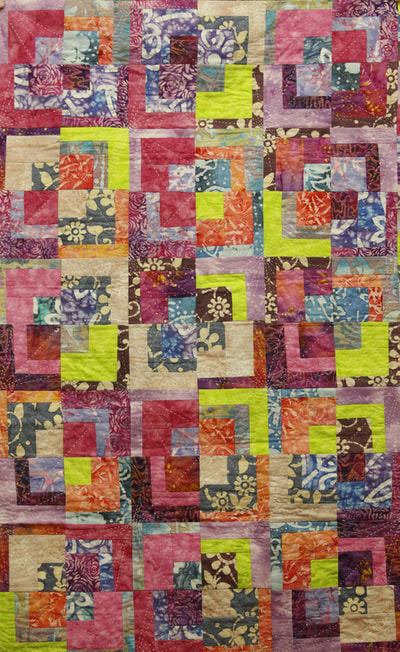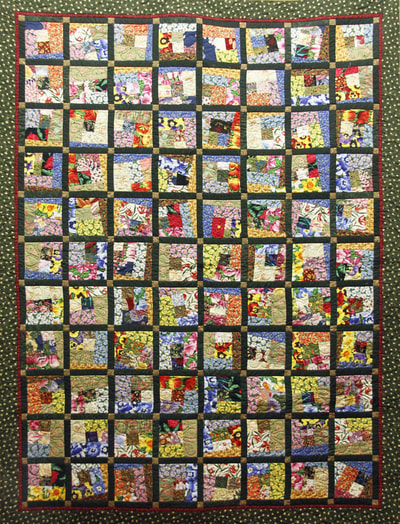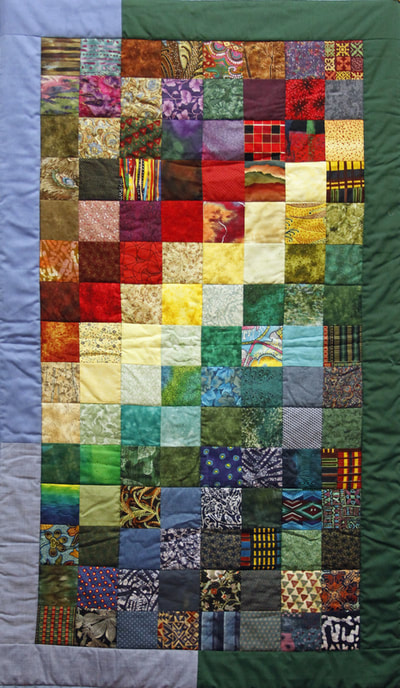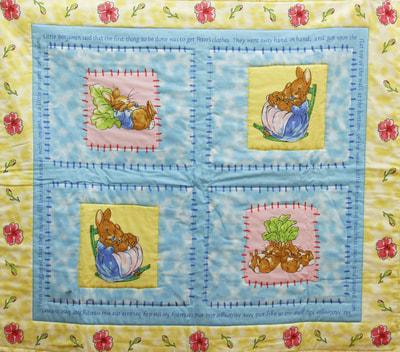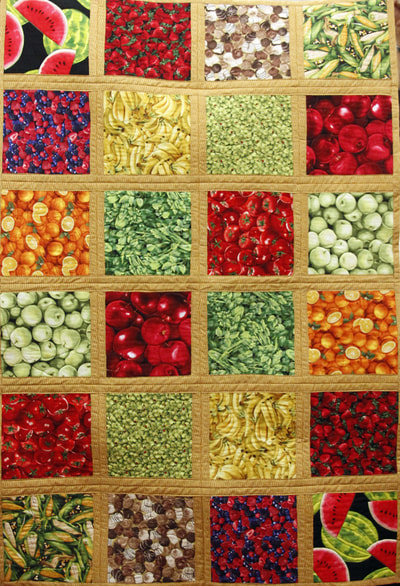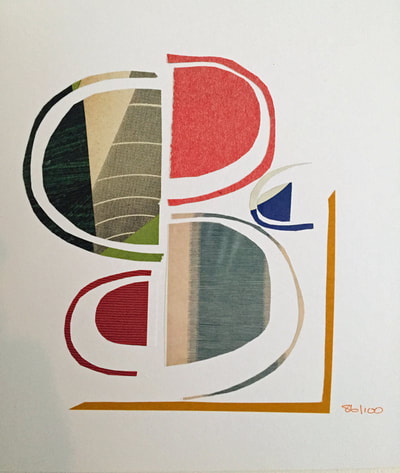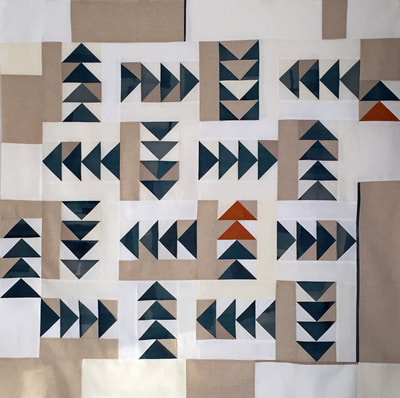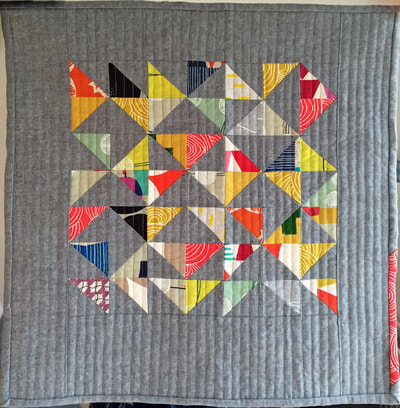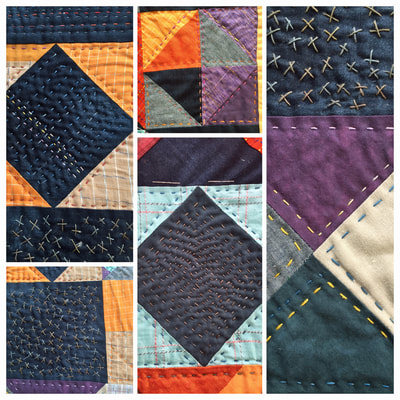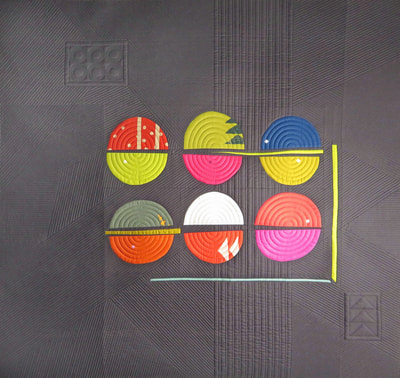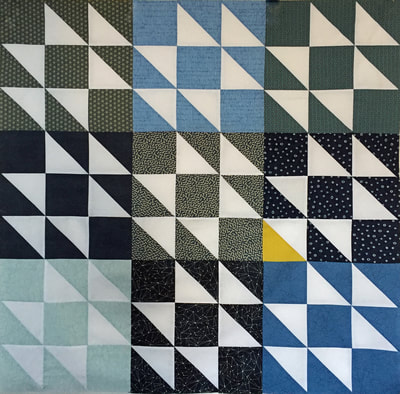Festival of Quilts 2024
This year two London Quilters, Janice Gunner and Sarah Hibbert, will have galleries at the Festival of Quilts at the NEC in Birmingham which runs from 1-4 August. Doubtless many other London Quilters will also be exhibiting their work at Festival.
Festival of Quilts is the largest exhibition of quilts in Europe with over 800 competition quilts by quilters from across the world, ten quilt galleries, 150 traders and a wide range of workshops for all levels of interest and skill.
www.thefestivalofquilts.co.uk/textile-galleries/
Tickets to the Festival can be booked at
thefestivalofquilts.seetickets.com/content/ticket-options?_ga=2.37986219.969509433.1713259817-2068030255.1713170694&_gl=1*m47ci8*_ga*MjA2ODAzMDI1NS4xNzEzMTcwNjk0*_ga_XFK8HR2H6F*MTcxMzI1OTgxNi4yLjEuMTcxMzI2MDkwMS4wLjAuMA..
Festival of Quilts is the largest exhibition of quilts in Europe with over 800 competition quilts by quilters from across the world, ten quilt galleries, 150 traders and a wide range of workshops for all levels of interest and skill.
www.thefestivalofquilts.co.uk/textile-galleries/
Tickets to the Festival can be booked at
thefestivalofquilts.seetickets.com/content/ticket-options?_ga=2.37986219.969509433.1713259817-2068030255.1713170694&_gl=1*m47ci8*_ga*MjA2ODAzMDI1NS4xNzEzMTcwNjk0*_ga_XFK8HR2H6F*MTcxMzI1OTgxNi4yLjEuMTcxMzI2MDkwMS4wLjAuMA..
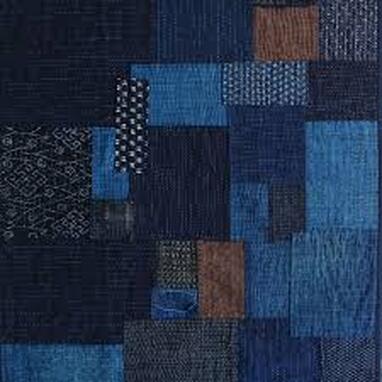
Janice Gunner - A Lifetime in Textiles
Janice Gunner has been stitching for as long as she can remember. This exhibition showcases a wide variety of work made during the 50 years that Janice has been working as a textile artist and quilter, and includes work from public and private collections.
Janice Gunner is a leading textile artist, quilter, author, and a former teacher in adult education and quilt judge. A lifelong stitcher for over 50 years, Janice presents a major retrospective of her portfolio. Always striving to produce work of a high standard, Janice prefers to experiment with a wide range of styles and techniques.
If there is one technique she is most known for, it is probably Shibori, also the title of one of her books. Her exhibition takes you on a journey celebrating 50 years in textiles and quilting from her first ‘quilt’ in 1974 to the present day.
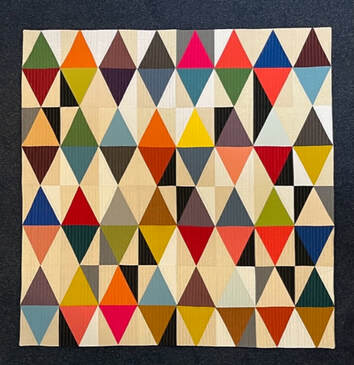
Sarah Hibbert and Jaeyoung Eom
- The Space Between
This is the story of two quilters who live 8,854km apart and have never met: Sarah Hibbert in London and Jaeyoung Eom in Seoul. Like many quilters they follow each other on social media. They were strongly attracted to each other’s styles and there followed many online exchanges – this is where the story of this unique exhibit begins.
Sarah Hibbert is a modern British quilter influenced as much by art and architecture as quilting heritage. She has made a significant name for herself on both sides of the Atlantic, exhibiting widely and with her work being acquired by both public and private collections. She published her first book From Collage to Quilt: Inspirational Quilting from What You Have in 2022.
Sarah loves the combination of old and new; of the traditional and contemporary. She uses patterns passed down through the generations but always adds a twist of her own. Working mainly in textural, linen fabric, with hand stitch and natural, rich tones and clever but limited use of prints, her modern quilts aim to create a conversation between the fabrics.
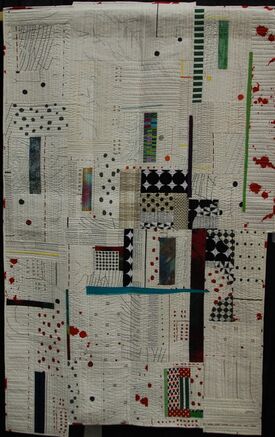
Jaeyoung Eom is a Korean quilter who majored in industrial design and worked as a designer for many years. She learned hand quilting when quilts were first introduced to Korea, and was also a pathfinder in machine quilting. She played an important role in several institutions when they were first were established in Korea, among them Corea Quilt Associates and Art Quilt Community, and she still participates in annual membership exhibitions.
Jaeyoung is known for her contemporary design. She enjoys making her own fabrics, using every kind of craft technique, from stamping and hand-dyeing, to collage and print. She then juxtaposes her designs with commercial fabric to create unique and unexpected effects in her quilts. Jaeyoung’s interest in textiles is not limited to wall hung quilts. As an expert in handmade bag design, she has made various kinds of bags using quilting techniques and is a co-author of two books in this area.
Member's Exhibition
Connected Threads - Sabi Westoby
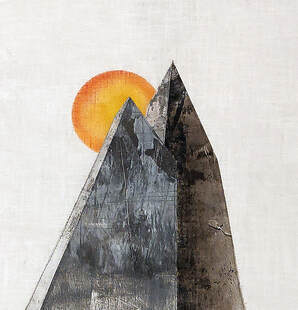 July
July
20 November – 16 December 2023
The Library at Willesden Green, Ground floor, 95 High Road, Willesden, London NW10 2SF
Weekdays: 10.30am-8pm, Sat: 10.30am-5pm, Sun: 12pm-5pm.The gallery is closed for public holidays.
Transport: 10 minutes walk from Willesden Green, Jubilee Line
The artist will be in attendance on Saturdays.
This exhibition draws together for the first time selected artworks made by Sabi Westoby during her career.
Sabi’s art practice is focussed on making series of works inspired by a diverse range of subjects from both the natural and man-made worlds; sources of inspiration have included the Great War, a construction site and hedgerows. When considering a new set of work, the first step is to open a dedicated sketchbook. An initial idea, sown in fresh ground, is developed through research, experimentation and worked samples. If it takes root, it may grow to fruition as a collection of artworks – fully formed textile wall hangings connected by the common thread of each subject.
Artworks in this exhibition, selected from several series, show the range of materials and techniques used by Sabi. Watercolours, acrylics and oil paint sticks were painted, printed and stencilled onto fabric. Collage and raw edge appliqué created the concrete brutalist forms in that series. The use of text extracts from The Georgics added an extra layer of colour and texture. Hand or machine stitching completed each piece, giving body and definition.
The Library at Willesden Green, Ground floor, 95 High Road, Willesden, London NW10 2SF
Weekdays: 10.30am-8pm, Sat: 10.30am-5pm, Sun: 12pm-5pm.The gallery is closed for public holidays.
Transport: 10 minutes walk from Willesden Green, Jubilee Line
The artist will be in attendance on Saturdays.
This exhibition draws together for the first time selected artworks made by Sabi Westoby during her career.
Sabi’s art practice is focussed on making series of works inspired by a diverse range of subjects from both the natural and man-made worlds; sources of inspiration have included the Great War, a construction site and hedgerows. When considering a new set of work, the first step is to open a dedicated sketchbook. An initial idea, sown in fresh ground, is developed through research, experimentation and worked samples. If it takes root, it may grow to fruition as a collection of artworks – fully formed textile wall hangings connected by the common thread of each subject.
Artworks in this exhibition, selected from several series, show the range of materials and techniques used by Sabi. Watercolours, acrylics and oil paint sticks were painted, printed and stencilled onto fabric. Collage and raw edge appliqué created the concrete brutalist forms in that series. The use of text extracts from The Georgics added an extra layer of colour and texture. Hand or machine stitching completed each piece, giving body and definition.
Concrete Brutalism – inspired by the architecture of London’s Southbank Centre, the colours, textures and stark forms of concrete brutalism were interpreted in fabric, each piece a dystopian scene.
Poppies – drawing on and extending her research for the Great War quilts, Sabi depicted the life cycle of the poppy, from bud to bloom to seed head, in paint, appliqué and stitch.
Georgics – the themes of agriculture and beekeeping in John Dryden’s 17th century translation of the Roman poet Virgil’s Georgics, were explored in paint, stencils and text; hand or machine stitch completed the work.
Uprooted – this was a response to the refugee crisis as shown in The Guardian’s the List of reported refugee deaths over a 25 year period. Commercially printed pages and hand-stencilled figures were outlined with hand stitch.
All images copyright Sabi Westoby
www.sabiwestoby.com @sabiwestoby
Poppies – drawing on and extending her research for the Great War quilts, Sabi depicted the life cycle of the poppy, from bud to bloom to seed head, in paint, appliqué and stitch.
Georgics – the themes of agriculture and beekeeping in John Dryden’s 17th century translation of the Roman poet Virgil’s Georgics, were explored in paint, stencils and text; hand or machine stitch completed the work.
Uprooted – this was a response to the refugee crisis as shown in The Guardian’s the List of reported refugee deaths over a 25 year period. Commercially printed pages and hand-stencilled figures were outlined with hand stitch.
All images copyright Sabi Westoby
www.sabiwestoby.com @sabiwestoby
20 February 2023 - Zoom
Red and White Quilts in the International Quilt Museum’s collection
Carolyn Ducey, Head of Collections
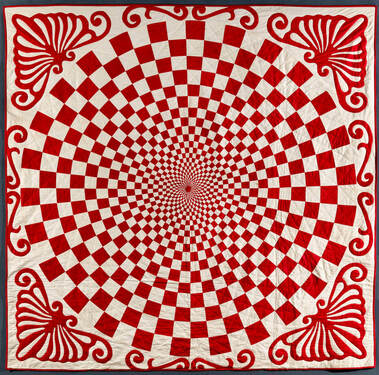 Kaleidoscope. Maker, location unidentifie. c. 1900.
Cotton; hand pieced and quilted
82” x 80”. International Quilt Museum, The Joanna S. Rose Collection
Kaleidoscope. Maker, location unidentifie. c. 1900.
Cotton; hand pieced and quilted
82” x 80”. International Quilt Museum, The Joanna S. Rose Collection
Carolyn Ducey gave us a fascinating insight into the Joanna S. Rose collection of 651 red and white quilts which arrived at the International Quilt Museum (IQM), Nebraska, in 2022. The quilts date mainly from the period 1880 to 1920 and are varied in style and technique.
The quilts came to prominence when they were first displayed in 2011 in the innovative show Infinite Variety – Three Centuries of Red and White Quilts at the Park Avenue Armory, New York. It was accompanied by a publication which included all 651 quilts. Though the show only lasted four days, it achieved legendary status in the quilting community.
Joanna S. Rose had been a supporter and lender to the IQM since 2000. In 2018 the museum put on a show of her so-called ‘Cheddar’ quilts, which was very successful and led her to decide to donate her collection of red and white quilts to the museum.
The collection arrived at the museum in 2022, and 80 of them were selected for the museum’s largest ever exhibition, The Joanna S. Rose Red and White Collection, which ran from April to September 2022.
The popularity of red and white quilts arose out of quilters’ love of the fabric known as Turkey Red. This madder-based dyed fabric became very popular in the late 1700s. Expensively produced through a complicated process, the rich red was famous for its vibrancy and its colourfastness. Rather than being absorbed into the fibres, the dye sits on top of the fabric, which can cause it to flake off over time. In the 1850s, with the advent of synthetic dyes, Turkey Red became cheaper and more affordable, and the number of red and white quilts increased dramatically. The appetite for the colour also led to cheaper imitations including so-called ‘Congo Red’, which at first sight looked like Turkey Red but did not have its colourfastness. Carolyn said this could be seen in quilts where the maker had clearly run out of Turkey Red and had to use Congo Red to complete the quilt. Over time, the Congo Red parts of the quilt fade to pink, whereas the Turkey Red retains its colour.
The quilts came to prominence when they were first displayed in 2011 in the innovative show Infinite Variety – Three Centuries of Red and White Quilts at the Park Avenue Armory, New York. It was accompanied by a publication which included all 651 quilts. Though the show only lasted four days, it achieved legendary status in the quilting community.
Joanna S. Rose had been a supporter and lender to the IQM since 2000. In 2018 the museum put on a show of her so-called ‘Cheddar’ quilts, which was very successful and led her to decide to donate her collection of red and white quilts to the museum.
The collection arrived at the museum in 2022, and 80 of them were selected for the museum’s largest ever exhibition, The Joanna S. Rose Red and White Collection, which ran from April to September 2022.
The popularity of red and white quilts arose out of quilters’ love of the fabric known as Turkey Red. This madder-based dyed fabric became very popular in the late 1700s. Expensively produced through a complicated process, the rich red was famous for its vibrancy and its colourfastness. Rather than being absorbed into the fibres, the dye sits on top of the fabric, which can cause it to flake off over time. In the 1850s, with the advent of synthetic dyes, Turkey Red became cheaper and more affordable, and the number of red and white quilts increased dramatically. The appetite for the colour also led to cheaper imitations including so-called ‘Congo Red’, which at first sight looked like Turkey Red but did not have its colourfastness. Carolyn said this could be seen in quilts where the maker had clearly run out of Turkey Red and had to use Congo Red to complete the quilt. Over time, the Congo Red parts of the quilt fade to pink, whereas the Turkey Red retains its colour.
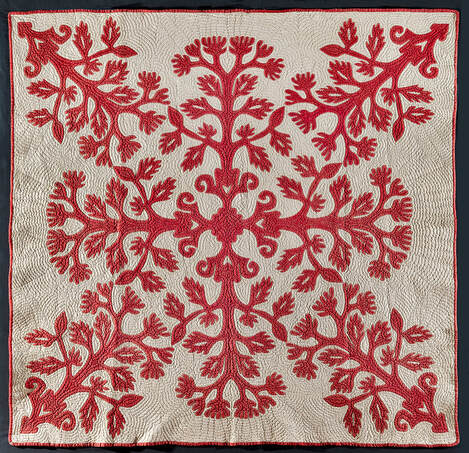 Maker unidentified.
Made in Hawai'i.
Hand appliqued
Dimensions (LxW)
85 x 80.5 inches: 216 x 204 cm.
Date Range, 1880-1920
The Joanna S. Rose Collection
Maker unidentified.
Made in Hawai'i.
Hand appliqued
Dimensions (LxW)
85 x 80.5 inches: 216 x 204 cm.
Date Range, 1880-1920
The Joanna S. Rose Collection
The quilts in the collection range from simple strippy quilts to quilts made of hexagons, appliqued quilts to complex quilts such as Kaleidoscope (see above). Like many quilts in Joanna’s collection, the maker is anonymous. The museum is slowly accessioning the collection and recording the full details of each quilt. From the 120 which have been recorded so far, researchers have found that 31 were wholly or partly machine pieced but all were hand quilted.
Red and white quilts were particularly popular in certain parts of the country. In Kansas City, the Kansas City Star newspaper put out a new quilt pattern every week to increase readership. In Hawaii, red and white was also a very popular combination and appeared in the cutaway designs, with echo quilting for which Hawaiian quilts are famous.
Another group within the collection which Carolyn discussed were the Red Cross quilts produced in 1917-18. It is estimated that at least a million quilts were made either to send to men at the front or to raise funds. Quilters paid for blocks within quilts, onto which they would embroider images or names of men.
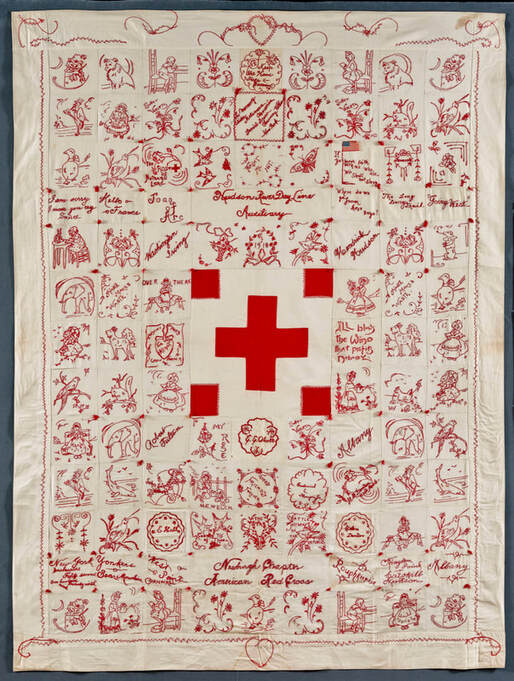 Maker: Hudson River Day Line Auxiliary, Newburgh Chapter of the American Red Cross, New York. Dimensions (LxW) 80.25 x 60.25 inches, 204 x 153 cm. Date: 1918
The Joanna S. Rose Collection
Maker: Hudson River Day Line Auxiliary, Newburgh Chapter of the American Red Cross, New York. Dimensions (LxW) 80.25 x 60.25 inches, 204 x 153 cm. Date: 1918
The Joanna S. Rose Collection
All the squares on the example Carolyn showed related to the Hudson River shipping line. Research has revealed that the names of the men on the quilt had all served with the company and some lost their lives in the conflict. It is estimated that $215 million was raised through Red Cross quilts, which equates to over $1 billion today.
Occasionally, the museum and its researchers are able to identify the makers and build the provenance of particular quilts. This is the case with the two quilts made by Lavinia Rose for her children in 1856 and 1860.
This year, four quilts from the Joanna S. Rose collection will be part of a display from the IQM’s display at the Festival of Quilts in Birmingham from 3-6 August 2023.
Further information on quilts collected by Joanna S. Rose
The museum continues the task of listing all 651 quilts from the collection on its online database. These can be viewed by searching under ‘Collection’. www.internationalquiltmuseum.org/collections/search
The Joanna S. Rose collection currently appears at the top of the list of collections.
The exhibition of 80 quilts from the Joanna S. Rose collection can be viewed at
https://www.internationalquiltmuseum.org/exhibition/joanna-s-rose-red-white-collection
You can also see the 2018/9 exhibition of Joanna S. Rose’s cheddar quilts at
www.internationalquiltmuseum.org/exhibition/cheddar-quilts-joanna-s-rose-collection
If you missed Carolyn’s talk and would like to learn more about the Joanna S. Rose collection, you can view her online talk given at the time of the 2022 exhibition. www.youtube.com/watch?v=qVeH43fWaE8
Occasionally, the museum and its researchers are able to identify the makers and build the provenance of particular quilts. This is the case with the two quilts made by Lavinia Rose for her children in 1856 and 1860.
This year, four quilts from the Joanna S. Rose collection will be part of a display from the IQM’s display at the Festival of Quilts in Birmingham from 3-6 August 2023.
Further information on quilts collected by Joanna S. Rose
The museum continues the task of listing all 651 quilts from the collection on its online database. These can be viewed by searching under ‘Collection’. www.internationalquiltmuseum.org/collections/search
The Joanna S. Rose collection currently appears at the top of the list of collections.
The exhibition of 80 quilts from the Joanna S. Rose collection can be viewed at
https://www.internationalquiltmuseum.org/exhibition/joanna-s-rose-red-white-collection
You can also see the 2018/9 exhibition of Joanna S. Rose’s cheddar quilts at
www.internationalquiltmuseum.org/exhibition/cheddar-quilts-joanna-s-rose-collection
If you missed Carolyn’s talk and would like to learn more about the Joanna S. Rose collection, you can view her online talk given at the time of the 2022 exhibition. www.youtube.com/watch?v=qVeH43fWaE8
17 January 2023 - Zoom
Who gives a flying FQ about Accuracy? Krista Hennebury
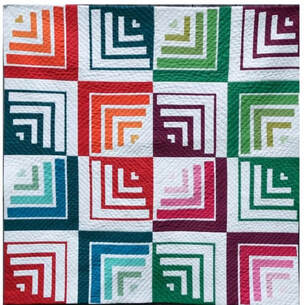 Square peg round hole
© Krista Hennebury
Square peg round hole
© Krista Hennebury
Krista Hennebury has been quilting since the year 2000 and has taught quilting for eighteen years. She has a technical background and at one time worked as a geologist. Though measurement is important to her, she insists she is not a perfectionist but will occasionally go back and redo something she is cannot live with.
Her aim in this talk was to help quilters to achieve more accurate and efficient results, thus reducing the frustration of having to redo work. Even in improv quilting, accuracy can help preserve sharp corner points and neat intersections helping to create visual dynamics and impact which she calls ‘skilful technique and creative play’.
Accuracy starts before sewing
Small improvements at every stage of quilting combine to ensure accuracy, even the way the fabric is prepared is important. After the fabric is washed and dried, she advises, square up by holding the selvedges together until the two layers hang straight (without any diagonal drag) before ironing the fabric parallel to the selvedge rather than across the grain. This will result in the least amount of distortion to the fabric.
Helpful equipment which aids accuracy includes using sharp rotary blades, a stiletto or another sharp or pointed object such as a long pin, which will help guide fabric to the needle, a seam guide, and fine pins which do not distort fabric.
Her aim in this talk was to help quilters to achieve more accurate and efficient results, thus reducing the frustration of having to redo work. Even in improv quilting, accuracy can help preserve sharp corner points and neat intersections helping to create visual dynamics and impact which she calls ‘skilful technique and creative play’.
Accuracy starts before sewing
Small improvements at every stage of quilting combine to ensure accuracy, even the way the fabric is prepared is important. After the fabric is washed and dried, she advises, square up by holding the selvedges together until the two layers hang straight (without any diagonal drag) before ironing the fabric parallel to the selvedge rather than across the grain. This will result in the least amount of distortion to the fabric.
Helpful equipment which aids accuracy includes using sharp rotary blades, a stiletto or another sharp or pointed object such as a long pin, which will help guide fabric to the needle, a seam guide, and fine pins which do not distort fabric.
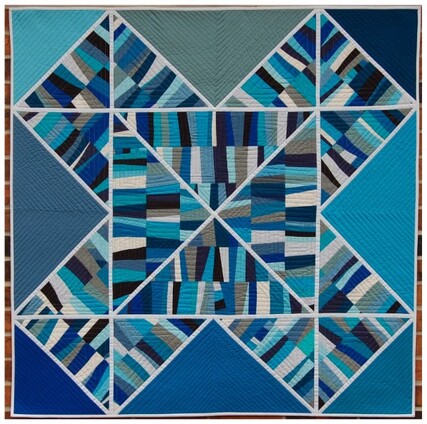 Ice Road
© Krista Hennebury
Ice Road
© Krista Hennebury
Krista also recommends using the same brand of ruler for a project, as one’s eye becomes used to the style of marking and this will aid more accurate cutting. When cutting, ‘tent’ your fingers on the ruler rather than laying the hand flat. Try not to cut past your hand as this can cause the ruler to move, rather walk your hand further along the ruler.
Using a scant ¼ inch seam allowance, which is about 1 thread smaller than ¼ inch, allows for the fold in the fabric when the seam allowance is pressed to the dark side. Krista usually presses to the side rather than pressing open and provided a list of pros for this approach and cons for pressing open, though she does admit that sometimes pressing seams open is the best option.
Other useful aids include using a straight/single hole stitch plate instead of the wider hole stitch plate which is usually supplied with machines, and using a scrap of cloth as a leader at the beginning and end of sewing to ensure a smooth transition and help avoid thread tangles. A commercially available seam guide or a stack of sticky notes can help keep the fabric on track.
In Krista’s book, not all ¼ inch seam machine feet are created equal, and she suggests testing for accuracy, especially before starting a project. This involves sewing five 2½ inch squares in a row and measuring the end result. If the length is more or less than ⅛ inch out, a readjustment will be necessary.
Final tip:
To avoid a quilt with wavy edges, measure from the centre and make the border to that size. This will help the quilt to lie flat.
For more information about Krista, tutorials and patterns go to:
Blog: poppyprintcreates.blogspot.com/
Instagram: @poppyprint
17 October 2022
Jam Jar Dyeing with Rachel Tyndall
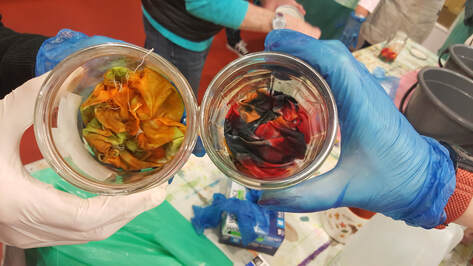
One of the most enjoyable meetings of the year was hosted by our very own Rachel Tyndall, who introduced us to the delights of ‘jam-jar dyeing’.
One of the most enjoyable meetings of the year was hosted by our very own Rachel Tyndall, who introduced us to the delights of ‘jam-jar dyeing’.
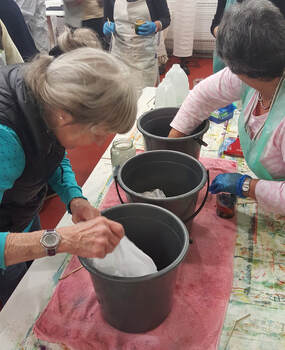
Members brought their own jam jars and five or six pieces of white cotton, 10-12 inches square. Rachel provided the dye solutions in a selection of colours, as well as buckets containing soda ash solution.
Rachel explained that the first piece of fabric needs to soak in the soda ash solution for ten minutes to prepare it for dyeing. It is then removed and the excess solution squeezed out.
The fabric is then pushed down into the bottom of the jam jar and the fun begins. Each person selected the colour or colours they wanted from the pots of dye and, using a pipette, added them to the top of the damp fabric or allowed it to dribble down the sides of the jar.
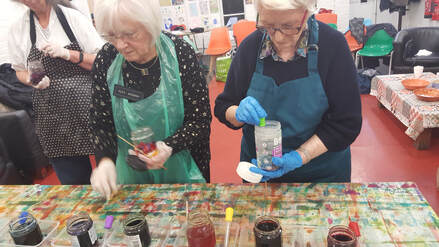
The process was then repeated, with each successive piece being soaked in soda ash, wrung out, pressed down into the jar and a new selection of dye added. We were advised to avoid adding too many colours as this could have resulted in a disappointing muddy brown.
Dyeing completed, everyone took their jam jars home, being advised to keep them in a warm room for a minimum of 24 hours, or longer if they wanted. The pieces were then rinsed in hot and cold water until the water ran clear.
Here is a gallery of what some members created.
Dyeing completed, everyone took their jam jars home, being advised to keep them in a warm room for a minimum of 24 hours, or longer if they wanted. The pieces were then rinsed in hot and cold water until the water ran clear.
Here is a gallery of what some members created.
11 April 2022 17 October 2022
Sarah Hibbert: From Collage to Quilt
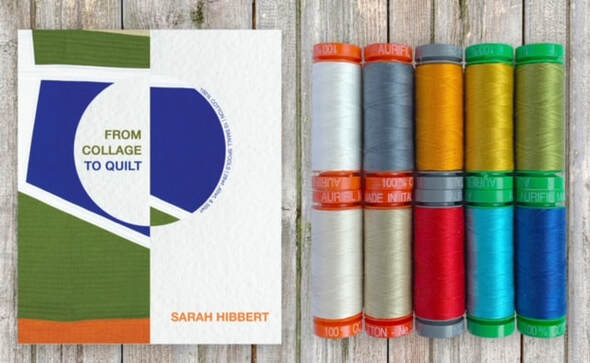
Spring brought us a presentation by long-time London Quilters’ member Sarah Hibbert about her new book From Collage to Quilt. Only a few days before the talk, Sarah had finally taken delivery of the actual hardcopy books in advance of publication. The talk revealed the challenges she faced along the way, from the initial idea to holding the final product in her hand.
Sarah has been quilting for over thirty years. Her quilts are regularly accepted at Quilt Con, the largest modern quilt convention in the world, and have been acquired by the Quilters’ Guild collection. She grew up in a home where design was a part of family life. Though she never studied design as a subject, she absorbed many of its principles from her typographer father. Her love of collage began in her teenage years, and cut and stick has remained a constant in her creative process.
In 2017, Sarah decided to take part in the 100 Day project. Participants create something every day for 100 days. Working full time, Sarah realised that fifteen minutes was probably the maximum she could commit to on a daily basis. She decided to cut out 8” pieces of card and create a mini-collage using scrap paper every morning which she then posted on Instagram.
Newspapers and magazines provide the scrap paper for Sarah’s collages. One collage was created from a torn up advertisement for Gap. Having created her 100 collages, Sarah wondered how it would be to create a quilt inspired by one of them. Sometimes the colours of the quilt are similar to the collage, sometimes they are different.
Having admired a number of books published by Lucky Spool, a publisher in the US, Sarah sent a speculative email explaining her idea of collage to quilt. She received a very positive response from the founder, Suzanne Woods, and her husband, Bruce, who shepherded the project to completion.
Sarah outlined how the book took shape through multiple phone and Zoom calls. The book is based around fourteen quilts inspired by fourteen collages created by Sarah. Each quilt uses a different skill, be it quilt as you go, or creating circles using bias strips. She was very clear about how she wanted the book to look, from the photography, to the fonts used for the text and the inclusion of coloured collage papers at the back of the book. There is even a piece of template plastic which helps the quilter to size up their designs from collage design to full-size quilt.
As if this wasn’t already enough, Sarah has also collaborated with Aurifil to create her own Aurifil Designer thread collection, which complements her modern designs.
Sarah’s quilts and collages can be seen on Instagram on
Quilts @quiltscornerstone
Collages @cornerstonecollages
Signed copies of From Collage to Quilt are available from
https://www.sarahhibbertquilts.com/shop/p/fromcollagetoquilt
21 March 2022
Pauline Macaulay
‘I thought I was the only one’: The British quilt revival during the 1970s
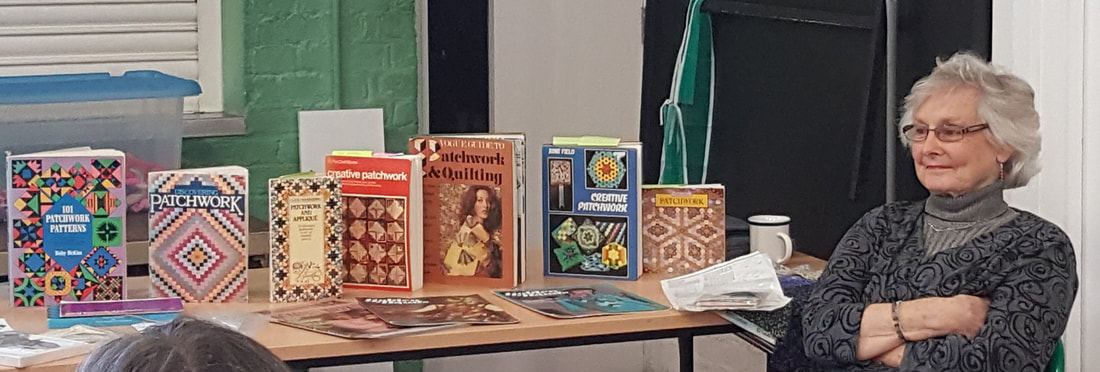
Pauline gave London Quilters a fascinating and entertaining account of the revival of quilting in Britain in the post-war period. The talk was the result of a great deal of research undertaken by Pauline between 2013 and 2018. It involved her interviewing twenty-seven ‘movers and shakers’ in the British quilting world, as well as gleaning experiences and anecdotes from thirty-five grassroots quilters about their experiences during the 1960s to the 1980s. As well as speaking to the quilters, Pauline interviewed shop owners, collectors and others active during the period. Pauline also surveyed the documentary evidence in archives, the press and wider literature.
Sewing and needlework was part and parcel of women’s domestic experience in 1950s Britain. The country was only slowly coming out of rationing. Readymade clothes were expensive, and most women made, altered and mended their own and their family’s clothes. The decade saw a revival of interest in crafts led by the Women’s Institute, who published a sixpenny leaflet entitled Patchwork in 1958. The same year, Averil Colby published her first book on the subject, also called Patchwork. These guides gave instructions on how to create mosaic patchwork by folding fabric over paper and then sewing them together by hand.
Quilters remembered the ‘ubiquitous’ and ‘dreaded’ hexagon – quilting was hexagons. In this era, wadding and quilting were almost unknown. An early Vogue article showed cushions, curtains and a whole decorative scheme covered in hexagons.
In the 1960s, many women, who had married and given up work, found their craft activities therapeutic and relaxing. In most cases, they were working in isolation with whatever meagre instructions and tools they could source. Through trial and error, using whatever fabric they had at their disposal, they made bed coverlets, skirts and other items. The increasing interest in crafts resulted in more books such as Averil Colby’s second book, Patchwork for Beginners (1969), a second leaflet on the subject by the WI, and even an item on Blue Peter – once more featuring hexagons.
In 1972, the WI were also one of the first to put on an exhibition of textiles at Somerset House. Of the 800 items on display 350 were quilts, including the newsworthy patchwork bikini by Jean Amsden, now in the Quilters Guild collection. Further exhibitions followed in the mid-1970s, several featuring North American quilts which built on the renewed interest in quilting in the US around the time of the Bicentennial.
The early 1970s saw more opportunities for quilters to discover each other, share skills and ideas and expand their horizons. Shops such as Strawberry Fayre (1972), in Stockbridge, Hampshire, The Patchwork Dog and the Calico Cat (1975) in Camden, London, and The Quiltery (1976), Tacolneston, Norfolk, encouraged and inspired quilters, providing them with kits, fabrics – some imported from the US – books and workshops.
In this period, American quilting was finally having an impact through British women who had learnt quilting while living in the US, as well as some American women living in the UK who shared their knowledge of machine piecing and American block patterns.
Around the country, groups began to form, initially meeting in people’s homes and later through shops and short courses where more experienced quilters shared their skills with others. Quilting groups were formed in the mid-1970s in Newcastle, York, Leeds and Cambridge. Norfolk Quilters formed in 1980, and in 1981 the first open air Quiltery day was organised in Tacolneston, Norfolk.
In the mid to late 1970s and early 1980s, shops such as Strawberry Fayre began bringing over American teachers such as Beth Gutcheon and Michael James who introduced the idea of the Art Quilt. These ideas inspired quilters who were also art graduates, including Deirdre Amsden, Pauline Burbidge, Mary Fogg and Michele Walker, to expand their quilting in more expressive ways.
In 1978, the BBC reflected the burgeoning interest in the craft with their programme Discovering Patchwork. The programme was accompanied by a booklet which gave practical instruction and introduced many to the craft.
By the late 1970s, quilters were connecting with each other and groups were expanding. In 1978, Quilt Circle was formed, and though it was short lived, its list of members would form the basis for the group who would found The Quilters’ Guild in London in August 1979. In 1980, the Guild held its first AGM in Winchester. Members brought examples of their work, which were hung on clothes lines. The diversity of the quilts on display showed just how far British quilting had come.
At the end of Pauline’s talk, several members brought examples of quilts/coverlets they had made during the period and shared them with the group.
A fuller account of Pauline’s research was published as
‘“I thought I was the only one”: The British quilt revival during the 1970s’ by Pauline W. Macaulay, in
Quilt Studies 20 (2019), The Journal of the British Quilt Study Group
https://bqsg.quiltersguild.org.uk/publications/quilt-studies-20
Sewing and needlework was part and parcel of women’s domestic experience in 1950s Britain. The country was only slowly coming out of rationing. Readymade clothes were expensive, and most women made, altered and mended their own and their family’s clothes. The decade saw a revival of interest in crafts led by the Women’s Institute, who published a sixpenny leaflet entitled Patchwork in 1958. The same year, Averil Colby published her first book on the subject, also called Patchwork. These guides gave instructions on how to create mosaic patchwork by folding fabric over paper and then sewing them together by hand.
Quilters remembered the ‘ubiquitous’ and ‘dreaded’ hexagon – quilting was hexagons. In this era, wadding and quilting were almost unknown. An early Vogue article showed cushions, curtains and a whole decorative scheme covered in hexagons.
In the 1960s, many women, who had married and given up work, found their craft activities therapeutic and relaxing. In most cases, they were working in isolation with whatever meagre instructions and tools they could source. Through trial and error, using whatever fabric they had at their disposal, they made bed coverlets, skirts and other items. The increasing interest in crafts resulted in more books such as Averil Colby’s second book, Patchwork for Beginners (1969), a second leaflet on the subject by the WI, and even an item on Blue Peter – once more featuring hexagons.
In 1972, the WI were also one of the first to put on an exhibition of textiles at Somerset House. Of the 800 items on display 350 were quilts, including the newsworthy patchwork bikini by Jean Amsden, now in the Quilters Guild collection. Further exhibitions followed in the mid-1970s, several featuring North American quilts which built on the renewed interest in quilting in the US around the time of the Bicentennial.
The early 1970s saw more opportunities for quilters to discover each other, share skills and ideas and expand their horizons. Shops such as Strawberry Fayre (1972), in Stockbridge, Hampshire, The Patchwork Dog and the Calico Cat (1975) in Camden, London, and The Quiltery (1976), Tacolneston, Norfolk, encouraged and inspired quilters, providing them with kits, fabrics – some imported from the US – books and workshops.
In this period, American quilting was finally having an impact through British women who had learnt quilting while living in the US, as well as some American women living in the UK who shared their knowledge of machine piecing and American block patterns.
Around the country, groups began to form, initially meeting in people’s homes and later through shops and short courses where more experienced quilters shared their skills with others. Quilting groups were formed in the mid-1970s in Newcastle, York, Leeds and Cambridge. Norfolk Quilters formed in 1980, and in 1981 the first open air Quiltery day was organised in Tacolneston, Norfolk.
In the mid to late 1970s and early 1980s, shops such as Strawberry Fayre began bringing over American teachers such as Beth Gutcheon and Michael James who introduced the idea of the Art Quilt. These ideas inspired quilters who were also art graduates, including Deirdre Amsden, Pauline Burbidge, Mary Fogg and Michele Walker, to expand their quilting in more expressive ways.
In 1978, the BBC reflected the burgeoning interest in the craft with their programme Discovering Patchwork. The programme was accompanied by a booklet which gave practical instruction and introduced many to the craft.
By the late 1970s, quilters were connecting with each other and groups were expanding. In 1978, Quilt Circle was formed, and though it was short lived, its list of members would form the basis for the group who would found The Quilters’ Guild in London in August 1979. In 1980, the Guild held its first AGM in Winchester. Members brought examples of their work, which were hung on clothes lines. The diversity of the quilts on display showed just how far British quilting had come.
At the end of Pauline’s talk, several members brought examples of quilts/coverlets they had made during the period and shared them with the group.
A fuller account of Pauline’s research was published as
‘“I thought I was the only one”: The British quilt revival during the 1970s’ by Pauline W. Macaulay, in
Quilt Studies 20 (2019), The Journal of the British Quilt Study Group
https://bqsg.quiltersguild.org.uk/publications/quilt-studies-20
17 January Tara Faughnan: Colour and Design
Tara Faughnan began quilting in 2001. Originally her quilts were very precise, but gradually through her career she has been moving towards a freer approach, though she admitted she would never be ‘a wonky quilt person’. During her talk she took us through some of the key principles which underpin her approach to design.
Gathering ideas and getting inspired
Tara finds ideas everywhere, even in the most everyday things, such as marks on a telegraph pole. She is often inspired by vintage quilts and by fabrics from other cultures. At a quilt show, she came across Nigerian Aso Oke fabric for the first time. She loved the beautiful handwoven Yoruban fabric, but couldn’t afford it and set out to try and recreate the effect in her piecing. She was also influenced by seeing two vintage double wedding ring quilts by an anonymous African American quilter. These inspired her to produce her own interpretations using a simpler palette of colours.
Tara often does quick sketches on her phone, and emphasised the importance of play in design. Focusing exclusively on the final result can dampen our creativity; playful experiment brings us back to the joy of the process.
One technique favoured by Tara is to cut up cheap coloured paper to play with ideas and change scale. ‘What if I tried this or this?’ This play may not lead anywhere, but sometimes it can show a new way forward.
Colour and shape
Colour selection creates a mood and tells the story. One colour palette can be bright and fun, another subtle and subdued, or dark and moody. Tara worked with Michael Miller fabrics for over ten years. This involved creating new colour schemes and designs which she would not normally use, such as dusty or pastel shades. Spending time working with these colours, which she initially disliked, led her to change her mind and understand what they had to offer.
She often uses rectangles in her quilt designs, and discussed how sequences of low contrast punctuated with high contrast allows the eye to glide over some sequences and then stop, creating rhythm across the quilt. Changing the shape but using the same colours creates a different effect. It can be difficult to assess the overall effect close up, so she takes images on her phone as she goes along so she can see the overall image reduced.
One way to modernise a traditional pattern is either to change the scale, e.g. make the blocks larger, or reduce the amount of information by using plain fabrics or reducing the number of colours. Making the same quilt design but varying these elements creates totally different moods. Likewise, the amount of a certain colour in a composition can dramatically change the feeling, for example the same pattern against a light- or a dark-coloured background.
Tara’s experiments with colour and shape have taught her that not every block is right for every colour. From time to time she makes black-and-white quilts as ‘palate cleansers’.
Different design approaches
Start small, she says, and let the design evolve. Make a few blocks, allow room for change, look at the relationship between blocks and how changes in contrast might affect the design. Some designs, such as string piecing, force you to commit as you sew without knowing what the final result will look like.
Sometimes, imposing limitations, for example starting with pale pink and pale yellow, forces her to try out a number of approaches to solve a problem. Much of the time, she doesn’t know where she is going, but, she says, if you don’t like something it is important to look at it over and over again. Walking the line between harmony and disharmony can lead to awkward but beautiful quilts.
The end use of a quilt can determine the colour choice or design. She compared a lone star quilt made in more subdued colours with small corner stars made for a bed with one made in brighter colours without the corner stars made purely for display purposes.
She often finds it helpful to lay down background fabrics first and refine details as she goes along. Finally, Tara urged her audience to ‘make bad quilts’ as experiments. She showed a range of projects which never led anywhere and were consigned to her scrap box, but sometimes led her in a new direction.
To find out more about Tara and her work see www.tarafaughnan.com/
Gathering ideas and getting inspired
Tara finds ideas everywhere, even in the most everyday things, such as marks on a telegraph pole. She is often inspired by vintage quilts and by fabrics from other cultures. At a quilt show, she came across Nigerian Aso Oke fabric for the first time. She loved the beautiful handwoven Yoruban fabric, but couldn’t afford it and set out to try and recreate the effect in her piecing. She was also influenced by seeing two vintage double wedding ring quilts by an anonymous African American quilter. These inspired her to produce her own interpretations using a simpler palette of colours.
Tara often does quick sketches on her phone, and emphasised the importance of play in design. Focusing exclusively on the final result can dampen our creativity; playful experiment brings us back to the joy of the process.
One technique favoured by Tara is to cut up cheap coloured paper to play with ideas and change scale. ‘What if I tried this or this?’ This play may not lead anywhere, but sometimes it can show a new way forward.
Colour and shape
Colour selection creates a mood and tells the story. One colour palette can be bright and fun, another subtle and subdued, or dark and moody. Tara worked with Michael Miller fabrics for over ten years. This involved creating new colour schemes and designs which she would not normally use, such as dusty or pastel shades. Spending time working with these colours, which she initially disliked, led her to change her mind and understand what they had to offer.
She often uses rectangles in her quilt designs, and discussed how sequences of low contrast punctuated with high contrast allows the eye to glide over some sequences and then stop, creating rhythm across the quilt. Changing the shape but using the same colours creates a different effect. It can be difficult to assess the overall effect close up, so she takes images on her phone as she goes along so she can see the overall image reduced.
One way to modernise a traditional pattern is either to change the scale, e.g. make the blocks larger, or reduce the amount of information by using plain fabrics or reducing the number of colours. Making the same quilt design but varying these elements creates totally different moods. Likewise, the amount of a certain colour in a composition can dramatically change the feeling, for example the same pattern against a light- or a dark-coloured background.
Tara’s experiments with colour and shape have taught her that not every block is right for every colour. From time to time she makes black-and-white quilts as ‘palate cleansers’.
Different design approaches
Start small, she says, and let the design evolve. Make a few blocks, allow room for change, look at the relationship between blocks and how changes in contrast might affect the design. Some designs, such as string piecing, force you to commit as you sew without knowing what the final result will look like.
Sometimes, imposing limitations, for example starting with pale pink and pale yellow, forces her to try out a number of approaches to solve a problem. Much of the time, she doesn’t know where she is going, but, she says, if you don’t like something it is important to look at it over and over again. Walking the line between harmony and disharmony can lead to awkward but beautiful quilts.
The end use of a quilt can determine the colour choice or design. She compared a lone star quilt made in more subdued colours with small corner stars made for a bed with one made in brighter colours without the corner stars made purely for display purposes.
She often finds it helpful to lay down background fabrics first and refine details as she goes along. Finally, Tara urged her audience to ‘make bad quilts’ as experiments. She showed a range of projects which never led anywhere and were consigned to her scrap box, but sometimes led her in a new direction.
To find out more about Tara and her work see www.tarafaughnan.com/
Exhibition
This exhibition includes work by LQ member Janice Gunner.
For more information about the exhibition and related events go to
www.csc.uca.ac.uk/programme/31/5/2021/tansa-anglo-japenese-textile-exhibition
For more information about the exhibition and related events go to
www.csc.uca.ac.uk/programme/31/5/2021/tansa-anglo-japenese-textile-exhibition
15 November 2021: How to take a good photograph of your quilt - Mark Robertson
Photographer Mark Robertson gave the group some pointers on how to take better and more interesting photographs of quilts using a smart phone. Many of us have smart phones but rarely take the time to familiarise ourselves with all the features of the camera. Mark pointed out what is possible by exploring the various buttons and options available on even basic smart phones.
Things to consider when taking your photograph include the available light, the difficulty photographing a whole quilt in the space available, and the limitations of your phone. What are the colours in the quilt? Are there backdrops or objects in contrasting colours that might enhance it? Is there a concept behind the quilt and if so how might you bring that out in the photograph?
Getting the shot
Think about the location: a more interesting photograph may be possible if the quilt is draped or hung over something, even something as prosaic as a door or chair. Is it possible to photograph it outside? Be brave and take a risk. Play with different ideas, have fun and don't be afraid to do something silly.
One striking photograph involved taking the quilt to a narrow passage with high buildings on either side, throwing the quilt up in the air over and over until everything came together in exactly the right shot.
Think about the angle from which you take the shot, photographing from above or below could result in a more interesting image.
Editing
A lot of editing can be done on the phone. How and where to crop the image depends on the purpose of the image and what you are trying to highlight. Some features on smart phones or graphics software allow you to alter the colour and contrast. It is possible to straighten the image if it is foreshortened or to create different effects using filters or by focusing on the highlights or shadows.
Finally get feedback from others; another pair of eyes is always useful.
Things to consider when taking your photograph include the available light, the difficulty photographing a whole quilt in the space available, and the limitations of your phone. What are the colours in the quilt? Are there backdrops or objects in contrasting colours that might enhance it? Is there a concept behind the quilt and if so how might you bring that out in the photograph?
Getting the shot
Think about the location: a more interesting photograph may be possible if the quilt is draped or hung over something, even something as prosaic as a door or chair. Is it possible to photograph it outside? Be brave and take a risk. Play with different ideas, have fun and don't be afraid to do something silly.
One striking photograph involved taking the quilt to a narrow passage with high buildings on either side, throwing the quilt up in the air over and over until everything came together in exactly the right shot.
Think about the angle from which you take the shot, photographing from above or below could result in a more interesting image.
Editing
A lot of editing can be done on the phone. How and where to crop the image depends on the purpose of the image and what you are trying to highlight. Some features on smart phones or graphics software allow you to alter the colour and contrast. It is possible to straighten the image if it is foreshortened or to create different effects using filters or by focusing on the highlights or shadows.
Finally get feedback from others; another pair of eyes is always useful.
18 October 2021: Sewing Evening and Show and Tell
On 18 October London Quilters met in person at The Hub for the first time since March 2020. It was an opportunity to meet old friends and welcome new members. Show and Tell is a regular part of every meeting and does not usually feature in our report of meetings. However, it was especially meaningful this time as it was, for many people, the first opportunity to share recent work with other members.
Below you will find a gallery of images from the evening. Other works shown on the evening can be seen on various pages of the Lockdown gallery.
Below you will find a gallery of images from the evening. Other works shown on the evening can be seen on various pages of the Lockdown gallery.
20 September 2021 : Chris English
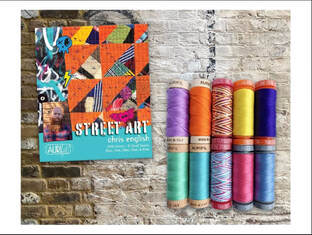
Chris gave us a colourful and inspiring talk about his inspirations and practice of making modern quilts from recycled and found fabric including orange mechanic overalls complete with silver reflective strips. Chris feels that using recycled fabrics not only helps the planet but guarantees that the end result will be totally unique.
He summarised his approach as follows:
Chris is known for his crumb block quilts. He describes the ‘Anatomy of a crumb block as’
His love of bright colours and his love of hand tying and knotting quilts inspired the mood board which he used to apply to Aurifil Artisans to create his own thread collection. The result was his eclectic Street Art collection of threads featuring a wide variety of colours and weights.
For more on Chris, his inspirations and work go to:
www.chrisenglishquilts.com
Instagram: @afullenglish
Chris gave us a colourful and inspiring talk about his inspirations and practice of making modern quilts from recycled and found fabric including orange mechanic overalls complete with silver reflective strips. Chris feels that using recycled fabrics not only helps the planet but guarantees that the end result will be totally unique.
He summarised his approach as follows:
- Use what you like/ Don’t worry about convention – colours, print and material - it’s your quilt.
- Necessity is the mother of invention – use what you have access to
- Explore different thrifting sources – flea markets, charity shops/ goodwill/ op shops,
- Find inspiration in everything and everywhere – collect stuff, sketch, take pictures
- Save fabric from landfill, cotton is super intensive to produce and I’m not sure we need anymore
- Contrast is key, scale, colour, print, texture and design – each to their own but personally I’ve never seen the need for ‘blenders’
- Show your work – the worst anyone can say is no – it’s their loss
Chris is known for his crumb block quilts. He describes the ‘Anatomy of a crumb block as’
- Two scraps sewn together
- String piecing
- Improv cutting
- Re-join and repeat
His love of bright colours and his love of hand tying and knotting quilts inspired the mood board which he used to apply to Aurifil Artisans to create his own thread collection. The result was his eclectic Street Art collection of threads featuring a wide variety of colours and weights.
For more on Chris, his inspirations and work go to:
www.chrisenglishquilts.com
Instagram: @afullenglish
New edition of The Complete Book of Patchwork, Quilting & Appliqué by Linda Seward
Many London Quilters may already own a copy of my book, The Complete Book of Patchwork, Quilting & Appliqué which was originally published about 35 years ago. Hard to believe—seems like yesterday…. It has been out of print for 10 years, but I’m happy to report that I have completely revised and updated it, and the book has been republished by Search Press, and at the exact same price that it was 35 years ago!
It is available from bookstores (and amazon, of course!)
Many London Quilters may already own a copy of my book, The Complete Book of Patchwork, Quilting & Appliqué which was originally published about 35 years ago. Hard to believe—seems like yesterday…. It has been out of print for 10 years, but I’m happy to report that I have completely revised and updated it, and the book has been republished by Search Press, and at the exact same price that it was 35 years ago!
It is available from bookstores (and amazon, of course!)
http://www.lindaseward.com
https://www.instagram.com/quiltmaniac1/
https://www.facebook.com/profile.php?id=100008344875064
https://www.instagram.com/quiltmaniac1/
https://www.facebook.com/profile.php?id=100008344875064
17 May 2021 : Sara Cook : 'Bojagi'
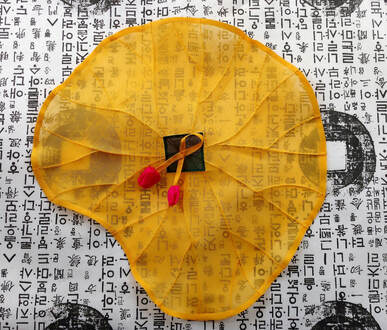 Sara Cook - Bojagi Lotus leaf covering cloth, traditional design. Photography: Michael Weeks
Sara Cook - Bojagi Lotus leaf covering cloth, traditional design. Photography: Michael Weeks
Sara Cook talked to us about Bojagi, which is a distinctive form of patchwork from Korea. She illustrated her talk with many examples of Bojagi, showing different techniques. She told us that she first saw Bojagi in the gallery by Chunghie Lee at the Festival of Quilts in 2009. Translucent fabrics were suspended in mid-air and visitors could view them from every angle. I have a vivid memory of that stand – does anyone else remember it?
Sara explained that until about 1950, Bojagi were essentially utility cloths, which were used for wrapping anything and everything and everybody used them. Bojagi were normally made from silk, hemp or ramie (an Asian plant from the nettle family), all fabrics that can take a sharp crease, and nowadays cotton is also used. She pointed out that the correct way to pronounce Bojagi is with a short ‘a’.
Sara explained that until about 1950, Bojagi were essentially utility cloths, which were used for wrapping anything and everything and everybody used them. Bojagi were normally made from silk, hemp or ramie (an Asian plant from the nettle family), all fabrics that can take a sharp crease, and nowadays cotton is also used. She pointed out that the correct way to pronounce Bojagi is with a short ‘a’.
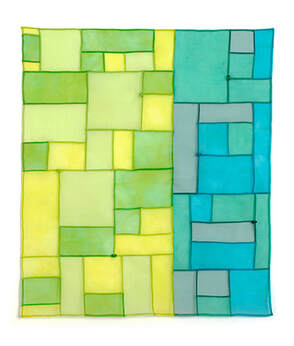 Sara Cook - Silk organza, Triple stitched seams, decorative bat knots.
Photography: Michael Weeks
Sara Cook - Silk organza, Triple stitched seams, decorative bat knots.
Photography: Michael Weeks
Bojagi were usually square and made from scraps of fabric, using mainly squares and rectangles; some also had triangles. There was a special way of stitching the pieces together and Sara showed examples of the stitching: even stitching was said to show an even temperament! Many Bojagi were white, the colour worn by commoners in Korea. White ramie stands up to harsh washing. Red and blue were reserved for ceremonial garments.
Sara also gave us an overview of the history of Korea. After Japan annexed Korea in 1910, it became a Japanese colony, and the occupiers tried to stamp out Korean culture. The country was liberated in 1945 by the USA in the south and the Soviets in the north. South Korea began to emerge again in the 1970s, and to embrace the modern world. From 1962, they began trying to protect their cultural heritage. However, their schooling is very intense and concentrated on academic subjects, with nothing on crafts. Children have to be taught how to thread a needle! Making Bojagi is a way of re-introducing an old skill.
Something for us to look forward to: there will be a gallery of Bojagi at the Festival of Quilts in 2022.
Jeni Rutherford
To find out more about Sara’s work go to
https://bojagiuk.com
Books by Sara Cook on Bojagi:
Bojagi: Design and Techniques in Korean Textile Art (2019). Available from the LQ library.
WOWbook 06.
Further information:
Sara shared examples of historic Bojagi, several of which can be found in the collection of the Asian Art Museum in San Francisco. To see more, follow the link below.
http://searchcollection.asianart.org/view/objects/asitem/search@/0?t:state:flow=db335b38-849d-4e65-a4b4-e48eab0add2f
Sara also gave us an overview of the history of Korea. After Japan annexed Korea in 1910, it became a Japanese colony, and the occupiers tried to stamp out Korean culture. The country was liberated in 1945 by the USA in the south and the Soviets in the north. South Korea began to emerge again in the 1970s, and to embrace the modern world. From 1962, they began trying to protect their cultural heritage. However, their schooling is very intense and concentrated on academic subjects, with nothing on crafts. Children have to be taught how to thread a needle! Making Bojagi is a way of re-introducing an old skill.
Something for us to look forward to: there will be a gallery of Bojagi at the Festival of Quilts in 2022.
Jeni Rutherford
To find out more about Sara’s work go to
https://bojagiuk.com
Books by Sara Cook on Bojagi:
Bojagi: Design and Techniques in Korean Textile Art (2019). Available from the LQ library.
WOWbook 06.
Further information:
Sara shared examples of historic Bojagi, several of which can be found in the collection of the Asian Art Museum in San Francisco. To see more, follow the link below.
http://searchcollection.asianart.org/view/objects/asitem/search@/0?t:state:flow=db335b38-849d-4e65-a4b4-e48eab0add2f
Festival of Quilts, Birmingham : 29 July - 1 August 2021
This year, a member of London Quilters will be exhibiting in the Textile Galleries at Festival of Quilts, 2021.
Sabi Westoby's exhibition, entitled 'Uprooted', is inspired by The Guardian' s supplement 'The List', published on World Refugee Day in 2018.
Further details can be found at
http://www.sabiwestoby.com/news.html
https://www.thefestivalofquilts.co.uk/the-textile-galleries/sabi-westoby-uprooted/
This year, due to the need to manage overcrowding, all tickets to Festival of Quilts must be booked in advance.
https://www.thefestivalofquilts.co.uk/ticket-options/
19 April 2021: Heather Audin: 'Classic block-based antique quilts'
Heather Audin, the Curator of the Quilters’ Guild Collection, spoke to London Quilters about classic block-based antique quilts held in the Guild’s collection.
Block-based quilts are usually seen as part of the American tradition of quilting. However, Britain has its own tradition. The earliest surviving British quilts were usually square-block, paper-pieced mosaic quilts such as the famous 1718 coverlet. This high-status work features geometric and pictorial square blocks made by carefully piecing precious silks over paper pieces which are still in place.
A seat cover dating from the mid-1700s features a star medallion centre surrounded by quarter-square triangle blocks. Many of the pieces reuse expensive embroidered fabrics from gentlemen’s waistcoats, and even a piece of rare metallic ‘No Popery, No Slavery’ ribbon dating from 1688 – fifty to seventy years before the cover was made.
Block-based quilts are usually seen as part of the American tradition of quilting. However, Britain has its own tradition. The earliest surviving British quilts were usually square-block, paper-pieced mosaic quilts such as the famous 1718 coverlet. This high-status work features geometric and pictorial square blocks made by carefully piecing precious silks over paper pieces which are still in place.
A seat cover dating from the mid-1700s features a star medallion centre surrounded by quarter-square triangle blocks. Many of the pieces reuse expensive embroidered fabrics from gentlemen’s waistcoats, and even a piece of rare metallic ‘No Popery, No Slavery’ ribbon dating from 1688 – fifty to seventy years before the cover was made.
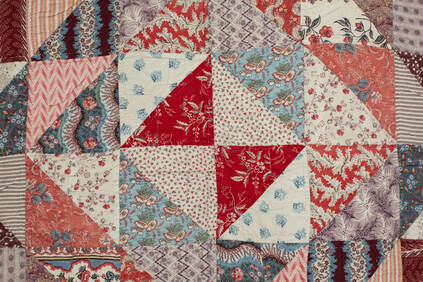
As the 18th century progressed, many quilts and coverlets were made using hexagons and octagons, and the use of chintz became common. Some quilts featured a central block printed panel surrounded by half square triangles. It can be difficult to date quilts precisely, as scraps were saved over decades. This example from the 1830s-1850s contained a wide selection of good quality prints, including patches of printed Turkey Red. Turkey Red was highly prized for its vivid hue and colour fastness, which was only achieved after many complex and time-consuming processes, making it both desirable and expensive.
Not everyone could afford such expensive fabrics, and producers turned to cheaper methods of production using quicker, easier and cheaper mordants used to attach the dye to the fabric, such as manganese brown. As Heather explained, this has led to conservation problems in a number of the quilts, as these mordants can cause parts of certain fabrics to disintegrate.
Not everyone could afford such expensive fabrics, and producers turned to cheaper methods of production using quicker, easier and cheaper mordants used to attach the dye to the fabric, such as manganese brown. As Heather explained, this has led to conservation problems in a number of the quilts, as these mordants can cause parts of certain fabrics to disintegrate.
Another distinct type of quilt popular in the late 19th century was the signature quilt, such as this 1898 example from Sheriff Hutton, in Yorkshire. These quilts were often used as fundraisers for local churches or charities. People paid to have their names embroidered on blocks with blocks closest to the centre commanding the highest prices. The quilt was then raffled to raise further funds. The quilt was never used, and was kept within the family until it was donated to the Guild. Quilts such as these are documents of social history, as they provide a snapshot of a community at a particular moment in time.
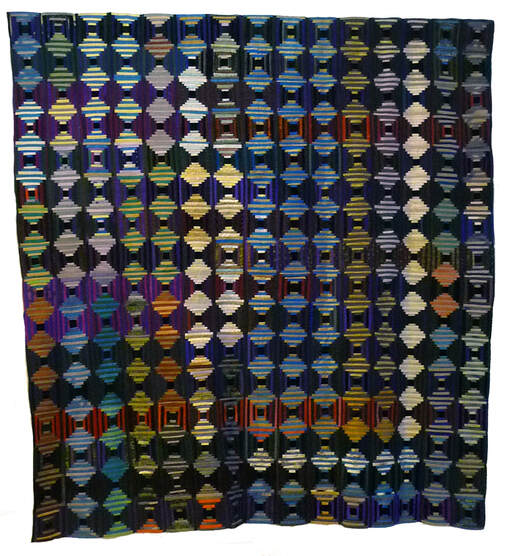
The Guild’s collection also includes over twenty-five examples of log cabin quilts. The earliest mainland British log cabin quilt dates from the 1860s. In the nineteenth-century, the pattern was referred to as ‘The Canadian log’ or ‘The Mummy pattern’, a reference to the apparent overlapping of the pieces. The collection includes a number of log cabin variations, including a number using the so-called ‘sunshine and shadow’ layout, a pineapple quilt, a highly embroidered one, and this foundation pieced example of courthouse steps made from velvet, silk and ribbon by Frances Haseldine in Cumbria.
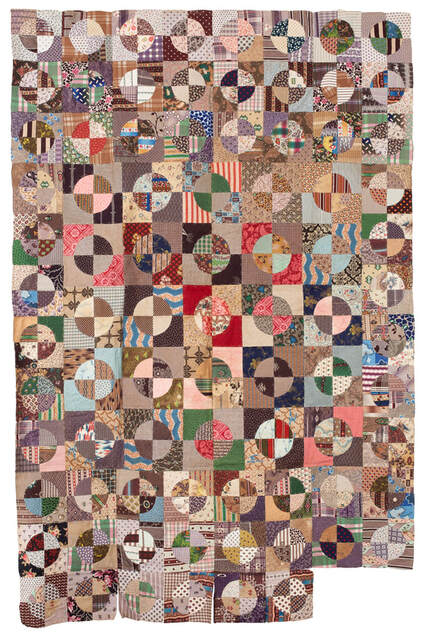
Unlike the American tradition of the group sewing bee, most British quilts were the work of one, or sometimes a family of makers. The work of more than one maker can be seen in an unfinished top made from jockey cap blocks which use quarter-circle units pieced over papers. The use of mismatched blocks in two different sizes suggests the unfinished top was taken up by a second pair of hands.
Other blocks which can be found in the Guild’s varied collection include blocks based on tulips, floral wreaths, baskets and houses.
London Quilters are very grateful to Heather for providing such a fascinating insight into this aspect of the Quilters’ Guild collection.
Some of the quilts are recent additions to the collection, but many can be viewed on the museum’s website at http://www.quiltmuseum.org.uk/collections.
All images copyright of The Quilters’ Guild of the British Isles, from The Quilters’ Guild Museum Collection.
Anita O’Brien
Other blocks which can be found in the Guild’s varied collection include blocks based on tulips, floral wreaths, baskets and houses.
London Quilters are very grateful to Heather for providing such a fascinating insight into this aspect of the Quilters’ Guild collection.
Some of the quilts are recent additions to the collection, but many can be viewed on the museum’s website at http://www.quiltmuseum.org.uk/collections.
All images copyright of The Quilters’ Guild of the British Isles, from The Quilters’ Guild Museum Collection.
Anita O’Brien
Janice Gunner : Sashiko Workshop : 15 February 2021
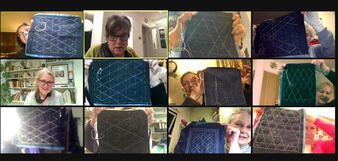
Twenty-seven members of London Quilters joined the mini-workshop on 15th February with Janice Gunner to make her Sakuro Sashiko pouch. True, not everyone joined in, but most of us had bought the lovely kit that Janice had put together for us and set to work.
Janice introduced the Zoom workshop by talking a little about sashiko. She has visited Japan many times including leading groups of quilters on study trips. She then took us through the project with videos for each step of construction; we also received PDF instructions to refer to after the meeting. She welcomed all our questions and helped us along the way.
The group was split into breakout rooms for most of our sewing time which was a great opportunity to get to know other members, very much like sitting round a table together.
Here are some of the happy students at the end of the evening – not yet finished, but all making great progress! This was a really super meeting - well done to the committee and many thanks to Janice for making it happen.
My Sashiko panel was made into a little cushion rather than the intended pouch.
Lucy Poloniecka
Janice introduced the Zoom workshop by talking a little about sashiko. She has visited Japan many times including leading groups of quilters on study trips. She then took us through the project with videos for each step of construction; we also received PDF instructions to refer to after the meeting. She welcomed all our questions and helped us along the way.
The group was split into breakout rooms for most of our sewing time which was a great opportunity to get to know other members, very much like sitting round a table together.
Here are some of the happy students at the end of the evening – not yet finished, but all making great progress! This was a really super meeting - well done to the committee and many thanks to Janice for making it happen.
My Sashiko panel was made into a little cushion rather than the intended pouch.
Lucy Poloniecka
Alice Fox : 'Found and Natural Objects' : 18 January 2021
The speaker at January’s online meeting was the artist Alice Fox. At the start of her talk she admitted that she was not a quilter and ‘skirted the edge of the quilting world’. However, her talk on work made over the last decade showed that she was no stranger to stitching together layers of cloth and backing.
Alice took the group through her 6 month residency at Spurn Point Nature Reserve in Yorkshire where the lighthouse was used as her base. She was inspired by the enormity of the landscape, the sea, the weather. Being unable to remove plants for dyeing she was inspired by found objects and rusty items – rusting nuts and bolts on cedar groynes were used to dye fabrics and the sea played its part in the process. The cloths were stitched together to make two large textiles, one in linen 10 metres long which was displayed by hanging down in the centre of the lighthouse, the stairs winding round it. The second piece, made of silk, curved around the light housing at the top of the building.
Another project was ‘Pavement Pieces’, where photographs taken of what was beneath her feet led to a series of works with collagraph printing onto fabrics embellished with stitch. One of her pavement pieces was acquired by the International Quilt Museum at the University of Lincoln in Nebraska. Alice then talked about her ‘Leaf Stitchings’, an intriguing concept which developed out of her initial thought that a leaf ‘needed darning’. She made several works stitching leaves together and mounted them in box frames. Findings play an important part in her practice – limpets are stitched into and some made into brooches; stones and pebbles are wrapped in twine, string, thread and painted or dipped in mud or chalk.
Alice now has an allotment, something for which she waited many years, and which she describes as a residency. The sheds on the plot had things left by earlier occupiers – metal, plastic, paper, stone – which can be used in some of her work. She has been investigating plants growing on the plot, making her own inks, cords and threads leading to a series of works based on basketry.
You can see more work by Alice on her website with this link: www.alicefox.co.uk
Alice took the group through her 6 month residency at Spurn Point Nature Reserve in Yorkshire where the lighthouse was used as her base. She was inspired by the enormity of the landscape, the sea, the weather. Being unable to remove plants for dyeing she was inspired by found objects and rusty items – rusting nuts and bolts on cedar groynes were used to dye fabrics and the sea played its part in the process. The cloths were stitched together to make two large textiles, one in linen 10 metres long which was displayed by hanging down in the centre of the lighthouse, the stairs winding round it. The second piece, made of silk, curved around the light housing at the top of the building.
Another project was ‘Pavement Pieces’, where photographs taken of what was beneath her feet led to a series of works with collagraph printing onto fabrics embellished with stitch. One of her pavement pieces was acquired by the International Quilt Museum at the University of Lincoln in Nebraska. Alice then talked about her ‘Leaf Stitchings’, an intriguing concept which developed out of her initial thought that a leaf ‘needed darning’. She made several works stitching leaves together and mounted them in box frames. Findings play an important part in her practice – limpets are stitched into and some made into brooches; stones and pebbles are wrapped in twine, string, thread and painted or dipped in mud or chalk.
Alice now has an allotment, something for which she waited many years, and which she describes as a residency. The sheds on the plot had things left by earlier occupiers – metal, plastic, paper, stone – which can be used in some of her work. She has been investigating plants growing on the plot, making her own inks, cords and threads leading to a series of works based on basketry.
You can see more work by Alice on her website with this link: www.alicefox.co.uk
Sew Along : Small Hand Sewing Project : 16 November 2020
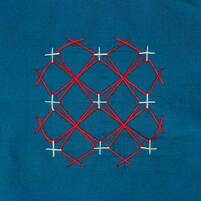 Lucy Poloniecka
Lucy Poloniecka
In the midst of the UK’s second lockdown, London Quilters tried out their first online Sewing Evening. The evening was led by LQ member Sarah Hibbert. Sarah had met Aaron Sanders Head on one of her visits to Quilt Con and later took one of his stitching workshops. Aaron is a textile artist who lives in Greensboro, Alabama. He uses kitchen scraps and locally foraged plants for his natural dyeing and has developed his own distinctive style of hand-stitching informed by traditional practices. Sarah was given permission by Aaron to share his pattern, 'Tatter', with members.
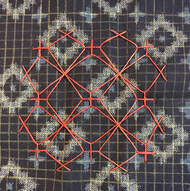 Martha Crouch
Martha Crouch
Using a 6½-inch square of marked fabric, members set about following the instructions. Sarah advised using fabric with some body such as denim or linen and not lightweight fabric such as muslin. She showed the range of threads which can be used, including standard embroidery thread, sashiko thread and perle cotton. She did note, though, that it was advisable to use the same weight of thread throughout the design. In response to a question, Sarah explained that Aaron does not use an embroidery hoop when stitching his pieces, preferring to simply stitch on to the fabric held in the hand.
Having started the group off and set us on our way, Sarah then broke us up into smaller randomly selected groups ('breakout rooms') so that we could chat and sew together. At the end of the evening, everyone had completed the sampler and shared it with the group.
More information about Aaron Sanders Head and his work can be found at:
www.aaronsandershead.com/work
Instagram: @aaronsandershead
Anita O’Brien
Having started the group off and set us on our way, Sarah then broke us up into smaller randomly selected groups ('breakout rooms') so that we could chat and sew together. At the end of the evening, everyone had completed the sampler and shared it with the group.
More information about Aaron Sanders Head and his work can be found at:
www.aaronsandershead.com/work
Instagram: @aaronsandershead
Anita O’Brien
Alicia Merrett : Colour, Shakespeare and Maps : 19 October 2020
In October, we welcomed Alicia Merrett to a well attended virtual meeting.
In some respects, Alicia "came home" when she joined us for her talk. She had been a member of London Quilters from the mid-1990s until 2009 when she moved to Wells in Somerset. She was born in Argentina and moved to the UK to study more than 50 years ago. Before becoming a quilter, she made cloth dolls for 15 years, writing books about it; she also studied photography. At a cloth toy convention in the US in 1990, she met many people doing non-traditional quilting and became intrigued by the possibilities of quilt making.
On returning to England, she went to a contemporary quilting exhibition and was bowled over. Eventually, she went on to do a City & Guilds course. Colour was her theme at the time, moving on to forms then, inspired by her travels in Spain and Mexico, Alicia’s work embraced improvisational quilts.
Whilst at London Quilters, Alicia and a group of friends formed a highly successful exhibiting group, ColourFX, focusing on the effects of colour. They held several exhibitions, including one based on members’ interpretations of Shakespeare’s Sonnet XVIII - 'Shall I compare thee to a summer’s day…'.
She then moved on to develop a fascination with maps, initially based on a challenge by the Contemporary Quilt Group. Her map quilts were highly popular and she enjoyed developing them, which led to teaching her technique. Among some of her more popular maps are 'Yorke 1611' based on John Speed’s map book and commissioned by The Quilters’ Guild for the 800th anniversary of the granting of its charter.
Seeing opportunities in technology, Alicia moved on to digital design on her iPad, combining it with her love of photography, using Photoshop. An online course helped in the development of digital design skills. She attempted printing on fabric but found that the colours weren’t strong enough so her fabrics are now printed in London (Contrado) and in Germany (Spoonflower).
Alicia discovered that developing themes and working in series is a useful way of moving forward with her work, especially if exhibiting. As a way of continuing to develop her art, she has been looking at other textile artists and the ways they work in series for inspiration. The list below includes links to some of the artists mentioned by Alicia.
We’ll be seeing more of Alicia as she has been invited to exhibit at the international Quilt National Exhibition in Ohio next year. In the meantime you can look at her work online with this link to her website:
www.aliciamerrett.co.uk
Do look at the work of the artists below, referred to in Alicia's talk:
Elizabeth Barton: www.elizabethbarton.com
Jette Clover: www.jetteclover.com
Linda Colsh: lindacolsh.com
Kate Dowty: www.katedowty.com
Effie Galletly: www.effiegalletly.co.uk
Leni Levenson Wiener: leniwiener.com
Linda Levin: lindalevinart.com
Elsbeth Nusser-Lampe: www.elsbethnusser-lampe.de
Elaine Quehl: www.elainequehl.com
Gillian Travis: gilliantravis.co.uk
Charlotte Yde: www.yde.dk
Patricia Herbig
In some respects, Alicia "came home" when she joined us for her talk. She had been a member of London Quilters from the mid-1990s until 2009 when she moved to Wells in Somerset. She was born in Argentina and moved to the UK to study more than 50 years ago. Before becoming a quilter, she made cloth dolls for 15 years, writing books about it; she also studied photography. At a cloth toy convention in the US in 1990, she met many people doing non-traditional quilting and became intrigued by the possibilities of quilt making.
On returning to England, she went to a contemporary quilting exhibition and was bowled over. Eventually, she went on to do a City & Guilds course. Colour was her theme at the time, moving on to forms then, inspired by her travels in Spain and Mexico, Alicia’s work embraced improvisational quilts.
Whilst at London Quilters, Alicia and a group of friends formed a highly successful exhibiting group, ColourFX, focusing on the effects of colour. They held several exhibitions, including one based on members’ interpretations of Shakespeare’s Sonnet XVIII - 'Shall I compare thee to a summer’s day…'.
She then moved on to develop a fascination with maps, initially based on a challenge by the Contemporary Quilt Group. Her map quilts were highly popular and she enjoyed developing them, which led to teaching her technique. Among some of her more popular maps are 'Yorke 1611' based on John Speed’s map book and commissioned by The Quilters’ Guild for the 800th anniversary of the granting of its charter.
Seeing opportunities in technology, Alicia moved on to digital design on her iPad, combining it with her love of photography, using Photoshop. An online course helped in the development of digital design skills. She attempted printing on fabric but found that the colours weren’t strong enough so her fabrics are now printed in London (Contrado) and in Germany (Spoonflower).
Alicia discovered that developing themes and working in series is a useful way of moving forward with her work, especially if exhibiting. As a way of continuing to develop her art, she has been looking at other textile artists and the ways they work in series for inspiration. The list below includes links to some of the artists mentioned by Alicia.
We’ll be seeing more of Alicia as she has been invited to exhibit at the international Quilt National Exhibition in Ohio next year. In the meantime you can look at her work online with this link to her website:
www.aliciamerrett.co.uk
Do look at the work of the artists below, referred to in Alicia's talk:
Elizabeth Barton: www.elizabethbarton.com
Jette Clover: www.jetteclover.com
Linda Colsh: lindacolsh.com
Kate Dowty: www.katedowty.com
Effie Galletly: www.effiegalletly.co.uk
Leni Levenson Wiener: leniwiener.com
Linda Levin: lindalevinart.com
Elsbeth Nusser-Lampe: www.elsbethnusser-lampe.de
Elaine Quehl: www.elainequehl.com
Gillian Travis: gilliantravis.co.uk
Charlotte Yde: www.yde.dk
Patricia Herbig
2020-1 Programme begins with Maggie Lloyd-Jones : 'Quilts for Care Leavers'
On Monday, 21 September, we had our first virtual speaker and a brilliant turnout of 38 members. Thank you all who attended, it was so nice to see so many of you after such a long absence. We’re hoping to have even more of you join the next meeting. See the website tab for details of our upcoming speakers. The talk given by Maggie Lloyd-Jones was inspirational and you can read more about it and her initiative on the Quilts for Care Leavers tab above. It also includes details of how you can contribute to the project.
Quilts for Care Leavers : Maggie Lloyd-Jones : August 2020
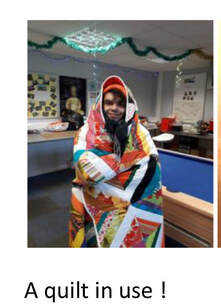
So what is Quilts for Care Leavers all about?
Poet Lemn Sissay MBE was looked after by Wigan Council until he was 18. I heard him say in August 2018 that all he’d wanted when he was moved from long-term foster carers aged 12 was a hug. I had a Eureka moment. He had set up a foundation that promoted and helped support dinners to be held for care leavers on Christmas Day. I had helped from the sidelines with dinners in Leeds from 2015 and offered quilt sized hugs to dinner guests in Leeds in 2018. I launched an appeal for quilted hugs on Facebook in October that year, and over 120 landed in my living room. Not only could 50 go to the Leeds dinner, but also 50 to Manchester, 17 to Barnsley, and a special one to a young man in Wigan. Only one dinner guest decided not to take away a quilted hug.
Quilts for Care Leavers (Q4CL) has an eventual aim to be in a position to offer a quilted hug to any young person leaving the care of a local authority, initially between the ages of 18 and 25, but as young as 16 where necessary. Approaches to local authorities are being made via a national forum. The long-term aim is for the local community to support its own care leavers.
I have a five-year plan for the project. 2019 saw us introduce longarm quilters to help, and we went from
supporting 3 dinners to supporting 17, including sending 110 quilts to Glasgow and 26 to Jersey.
We set up a Morsbag making group, so that each hug could have a repurposed fabric bag to take it home in, rather than a plastic one. Fabric Friends is where donated fabric is available for the cost of postage on the promise that it will be used for our project. A block drive took flight, with a defined block a month going to a block leader to make up tops, those tops going to longarmers in 2020 with wadding and backing paid for by funds we raised where required. I distributed some hugs to my local care leaver support group to ease the grief of losing a friend. Some were made available during the Covid-19 pandemic, and there is much more to come. We need more makers, more coordinators, more storage, and of course more funds. We know where dinners are by October/November each year.
What we already know is that, if what they are is explained to the young people, they appreciate the care and time put into the quilts, and are more than happy to choose their own: choice is important to me and to them. Some love classical patterns, and scrappy is fab too. Making blocks, tops, quilted hugs, whatever your skill or wish is, brings us joy too. For us, there is no such thing as an orphan block - we will find it a home. Whilst we have a preferred size range for our hugs (minimum 40" wide x 66" long/ 101 cm wide x 167 cm long, maximum 50" wide x 72" long/ 127 cm wide x 183 cm long), any ‘out of range’ quilts may be offered as usual, or go for auction at fundraising dinners. Project Linus gift quilts are offered to the children of any of the care leaver guests.
We are Quilts for Care Leavers as a public page on Facebook, and Quilts for Care Leavers (Makers) as a closed group, which then gives access to the other groups, also closed.
You can help in many ways: come join in the fun!!
Maggie Lloyd-Jones, August 2020
Sarah Hibbert : Interview
I was asked by Katie Hill from Arnold's Attic if I would be interested in talking about my quilts and their journey for her Textile YouTube channel. I had visited the channel on a number of occasions to watch some interesting textile artists, ranging from hand quilting to fabric embellishment. It's an extremely varied collection of people mixed in with highly informative tutorials.
Katie and I met up last summer to start filming but ended up using the afternoon just chatting about our shared love of fabric. Fast forward to lock-down and we chatted on the phone and decided to host the video via zoom. Paul filmed my hands quilting and together with some close up shots of my quilts we went ahead. Katie has a terrific talent in splicing the images and overlaying our conversation over the film.
Now might be the time to get a coffee and sit back to watch the video with this link: https://bit.ly/3fHNUHm
If you enjoyed the video please do support her YouTube channel by watching and commenting on other posts. https://www.arnolds-attic.co.uk
Katie and I met up last summer to start filming but ended up using the afternoon just chatting about our shared love of fabric. Fast forward to lock-down and we chatted on the phone and decided to host the video via zoom. Paul filmed my hands quilting and together with some close up shots of my quilts we went ahead. Katie has a terrific talent in splicing the images and overlaying our conversation over the film.
Now might be the time to get a coffee and sit back to watch the video with this link: https://bit.ly/3fHNUHm
If you enjoyed the video please do support her YouTube channel by watching and commenting on other posts. https://www.arnolds-attic.co.uk
The Vera Lynn Quilt : Linda Seward : July 2020
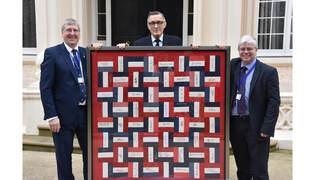
In 2016 a number of London Quilters were involved in making a quilt to raise money for homeless veterans. It was named the We'll Meet Again quilt in honour of Dame Vera Lynn. You can read the background stories on my website. Here is the first post: http://www.lindaseward.com/news/archives/03-2016
And here is the second: https://bit.ly/3fEPKZJ
On the 10th of July 2020, the quilt was finally auctioned to support the work of Alabaré who support homeless and vulnerable Veterans: www.alabare.co.uk
The Charity was originally going to auction the quilt at a regimental dinner. This kept being cancelled so they finally decided to find another way. They auctioned it off on the celebrity memorabilia website charitystars.com
The auction finished at 8pm on Friday 10th July 2020 to mark 80 years since the start of the Battle of Britain. The final figure raised for the quilt was £2,700. It made a brief appearance on Good Morning Britain, which gained 900,000 viewers. The webpage it featured on was viewed over 2600 times. In the end it was bought by someone in Devon.
Dennis Gimes and the Alabaré charity would very much like to thank everyone who helped create the quilt in the first place. Dennis is in the centre of this picture.
And here is the second: https://bit.ly/3fEPKZJ
On the 10th of July 2020, the quilt was finally auctioned to support the work of Alabaré who support homeless and vulnerable Veterans: www.alabare.co.uk
The Charity was originally going to auction the quilt at a regimental dinner. This kept being cancelled so they finally decided to find another way. They auctioned it off on the celebrity memorabilia website charitystars.com
The auction finished at 8pm on Friday 10th July 2020 to mark 80 years since the start of the Battle of Britain. The final figure raised for the quilt was £2,700. It made a brief appearance on Good Morning Britain, which gained 900,000 viewers. The webpage it featured on was viewed over 2600 times. In the end it was bought by someone in Devon.
Dennis Gimes and the Alabaré charity would very much like to thank everyone who helped create the quilt in the first place. Dennis is in the centre of this picture.
These are the celebrities who signed the quilt—many are from the sports world, but there are also some actors and TV personalities (and one quilter).
Sewing Evening : 17 February 2020
Our February meeting was a sewing evening – one of two we hold each year – and members brought their sewing projects to share and work on.
We also had a general group discussion, a ‘Quilter’s Question Time’, led by a panel of experienced quilters. Topics ranged from ‘How do you get rid of your stash?’ to ‘Is it possible to use metallic thread in your machine?’ The answer to the latter question was to use it in the bobbin and sew from the reverse side, otherwise the needle will shred the thread.
There was also a lively discussion about dyeing fabric; to the question of how to ‘down-size’ your studio, the answer was to do it slowly and not all at once. Linda Seward has provided two articles on the subjects of ‘Quilt Legacies’ and ‘How to Dispose of Unwanted Items’, which you can read in the Resources tab above. This is a new section on the website where features of long term interest will be posted from time to time.
Jeni Rutherford
We also had a general group discussion, a ‘Quilter’s Question Time’, led by a panel of experienced quilters. Topics ranged from ‘How do you get rid of your stash?’ to ‘Is it possible to use metallic thread in your machine?’ The answer to the latter question was to use it in the bobbin and sew from the reverse side, otherwise the needle will shred the thread.
There was also a lively discussion about dyeing fabric; to the question of how to ‘down-size’ your studio, the answer was to do it slowly and not all at once. Linda Seward has provided two articles on the subjects of ‘Quilt Legacies’ and ‘How to Dispose of Unwanted Items’, which you can read in the Resources tab above. This is a new section on the website where features of long term interest will be posted from time to time.
Jeni Rutherford
Cathy Corbishley Michel : 'Cyanotypes on Textiles' : 20 January 2020
We were very pleased to welcome Cathy Corbishley Michel to our January Meeting. Cathy is a retired urological histopathologist from St George's Hospital and Medical School who has been designing and making art textiles since 1994. Her work uses cyanotype photographic printing on fabric ("Blueprinting") and is inspired by historical themes. The hall was decked with several of Cathy’s stunning quilts and large hangings.
The talk started with a brief history of photography and the blueprint process. Although the first photographic quilts were produced in the early years of the 20th century in the USA and in 1985 Barbara Hewitt published a book Blueprints on Fabric: Innovative Uses for Cyanotype, it was Dorothy Stapleton’s display of quilts at Ardingly in 2001 which first attracted Cathy to the process. She was used to handling chemicals in her laboratory at work and her early experiments involved bones and laboratory instruments. However, following Ruth Brown’s publication of Cyanotypes on Fabric, Cathy started making her own negatives and printing onto cotton and linen using a sunbed to expose the prints.
Cathy was fascinated by the story of Shackleton’s Endurance and made a series of quilts from the photographs of that expedition. Next came a series from Scott’s Terra Nova expedition. One of the quilts from her subsequent Captain Cook series was purchased for the Quilters Guild Collection. More recently, Cathy has produced work inspired by photographer Eadweard Muybridge, early photographic pioneer, for Kingston Museum.
Cathy’s creations for the Museum of Farming in Yorkshire broke with tradition. Her prints of the Lewis chessmen and Green Man images created by her daughter Zoe are green! By printing onto green fabric, these pieces have a completely different look.
Cathy has made many inspiring quilts – but just as importantly, she is an enthusiastic and entertaining speaker.
You can read more about Cathy and her work by following this link to her page on the Quilters' Guild - www.quiltersguild.org.uk/members/page/catherine-corbishley
Lucy Poloniecka
The talk started with a brief history of photography and the blueprint process. Although the first photographic quilts were produced in the early years of the 20th century in the USA and in 1985 Barbara Hewitt published a book Blueprints on Fabric: Innovative Uses for Cyanotype, it was Dorothy Stapleton’s display of quilts at Ardingly in 2001 which first attracted Cathy to the process. She was used to handling chemicals in her laboratory at work and her early experiments involved bones and laboratory instruments. However, following Ruth Brown’s publication of Cyanotypes on Fabric, Cathy started making her own negatives and printing onto cotton and linen using a sunbed to expose the prints.
Cathy was fascinated by the story of Shackleton’s Endurance and made a series of quilts from the photographs of that expedition. Next came a series from Scott’s Terra Nova expedition. One of the quilts from her subsequent Captain Cook series was purchased for the Quilters Guild Collection. More recently, Cathy has produced work inspired by photographer Eadweard Muybridge, early photographic pioneer, for Kingston Museum.
Cathy’s creations for the Museum of Farming in Yorkshire broke with tradition. Her prints of the Lewis chessmen and Green Man images created by her daughter Zoe are green! By printing onto green fabric, these pieces have a completely different look.
Cathy has made many inspiring quilts – but just as importantly, she is an enthusiastic and entertaining speaker.
You can read more about Cathy and her work by following this link to her page on the Quilters' Guild - www.quiltersguild.org.uk/members/page/catherine-corbishley
Lucy Poloniecka
Catherine-Marie Longtin : 'Me and my design wall' : 18 November 2019
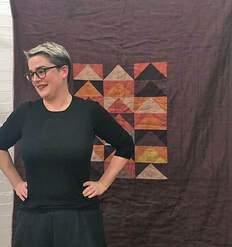
Our speaker at the November meeting was Catherine-Marie Longtin and what a delight was in store for us.
A French Canadian originally from Montreal, Catherine didn’t take to quilt-making until after completing her academic studies. She has been creating her lovely pieces from her studio in South London for the past five years. Her simple designs incorporate beautiful sourced fabrics making each piece totally unique.
She talked to us regarding colour balance and making that striking impact. She also generously shared her inspiration boards within Pinterest, ranging from Amish quilts to Ray Eames fabric. What was most touching were her ‘one to one’ bespoke pieces for clients who wanted to create a memory quilt using fabrics from a loved one - extremely moving and with Catherine’s love of fabric and gentle nature I am sure their pieces will be treasured.
Catherine also told us about her taking part in Open Studios and her stand at the Selvedge Christmas Fair. You can see more of her work on her website at www.catherinemarielongtin.com. In the meantime, the pictures below show examples of her beautiful work.
Sarah Hibbert
A French Canadian originally from Montreal, Catherine didn’t take to quilt-making until after completing her academic studies. She has been creating her lovely pieces from her studio in South London for the past five years. Her simple designs incorporate beautiful sourced fabrics making each piece totally unique.
She talked to us regarding colour balance and making that striking impact. She also generously shared her inspiration boards within Pinterest, ranging from Amish quilts to Ray Eames fabric. What was most touching were her ‘one to one’ bespoke pieces for clients who wanted to create a memory quilt using fabrics from a loved one - extremely moving and with Catherine’s love of fabric and gentle nature I am sure their pieces will be treasured.
Catherine also told us about her taking part in Open Studios and her stand at the Selvedge Christmas Fair. You can see more of her work on her website at www.catherinemarielongtin.com. In the meantime, the pictures below show examples of her beautiful work.
Sarah Hibbert
Moira Neal : 'Time flies when you are having fun' : 21 October 2019
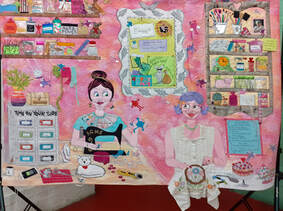
The speaker at our October meeting was Moira Neal who has created a number of prize-winning pictorial quilts. To enjoy them fully you have look at them very carefully and work out how each of the images relates to the title. You will then probably start to giggle.
Moira brought two quilts to show us and illustrated her talk with slides. She talked first about “Stitching Through Time” and her love of puns and playing with words showed clearly in the close-up pictures. Several small clock faces with arms and legs whizzing round the background were, of course, “Time Flies”. A small filing cabinet with drawers labelled “seconds”, “minutes” and “hours”, etc, was clearly “Keeping Time”. A swinging clock was “Time and Motion”.
The theme for the second quilt was, I believe, “Batik Beauties” which became “Baatik Beauties” and was all about sheep. She had a “Ewenicorn”, a “Salad Baa”, a “Baa Maid” and, of course, “Lambrusco”, all beautifully illustrated.
Moira likes to work to a theme and takes a long time brain-storming ideas relating to that theme. Each quilt has a separate book containing all these ideas for reference.
Moira works using old white sheets, which she colours - “sloshes on” as she describes it - with a watered-down solution of any paint she has to hand. All her work is done with raw-edge appliqué sewn just inside the edge with black thread. The background is free machined with invisible thread. She will use anything at hand to create an effect and recommends the insides of tubes of tomato paste to give the effect of gold.
Every quilt will contain a small amount of dyed lace, hand-made by her mother who died earlier this year.
In between the anecdotes, Moira gave us useful time-saving tips. She cuts up rubber shelf liners and uses the pieces to help her grip the fabric while free machining. She prints her backing fabric with patterns to distract attention from any messy stitching and she described a way of creating the effect of piping round the edge of a quilt without using actual piping.
Despite her claims that she cannot draw, Moira has created beautiful quilts which reward you more the longer you look at them.
Although Moira does not have a website, you can read about her on the Talking Quilts website, accessible with this link: www.talkingquilts.org.uk/portfolio/moira-neal-cambridgeshire
Jeni Rutherford
Moira brought two quilts to show us and illustrated her talk with slides. She talked first about “Stitching Through Time” and her love of puns and playing with words showed clearly in the close-up pictures. Several small clock faces with arms and legs whizzing round the background were, of course, “Time Flies”. A small filing cabinet with drawers labelled “seconds”, “minutes” and “hours”, etc, was clearly “Keeping Time”. A swinging clock was “Time and Motion”.
The theme for the second quilt was, I believe, “Batik Beauties” which became “Baatik Beauties” and was all about sheep. She had a “Ewenicorn”, a “Salad Baa”, a “Baa Maid” and, of course, “Lambrusco”, all beautifully illustrated.
Moira likes to work to a theme and takes a long time brain-storming ideas relating to that theme. Each quilt has a separate book containing all these ideas for reference.
Moira works using old white sheets, which she colours - “sloshes on” as she describes it - with a watered-down solution of any paint she has to hand. All her work is done with raw-edge appliqué sewn just inside the edge with black thread. The background is free machined with invisible thread. She will use anything at hand to create an effect and recommends the insides of tubes of tomato paste to give the effect of gold.
Every quilt will contain a small amount of dyed lace, hand-made by her mother who died earlier this year.
In between the anecdotes, Moira gave us useful time-saving tips. She cuts up rubber shelf liners and uses the pieces to help her grip the fabric while free machining. She prints her backing fabric with patterns to distract attention from any messy stitching and she described a way of creating the effect of piping round the edge of a quilt without using actual piping.
Despite her claims that she cannot draw, Moira has created beautiful quilts which reward you more the longer you look at them.
Although Moira does not have a website, you can read about her on the Talking Quilts website, accessible with this link: www.talkingquilts.org.uk/portfolio/moira-neal-cambridgeshire
Jeni Rutherford
Quilting for Beginners
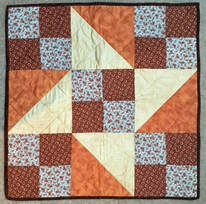
Our course, Quilting for Beginners has been a success and a lot of fun.
Some members might remember Mark who came to the September meeting and brought his quilt top for show-and-tell. He is one of our beginner course participants and was so keen, he raced ahead and finished his top in a week. We’re now half way through the course and thought you’d like to hear about how the first LQ Quilting for Beginners course is going. It took off with a bang in September, with the class being full at 8 people. The range of participants was between ‘yes, I’ve made some quilts before but want to learn better skills’ to 'no, I've never used a sewing machine'.
As quilters, we know there are a lot of things we can do with squares and triangles. Martha Crouch, my Co-Librarian (yes, this is a plug for the Library as well) says: There are an incredible number of blocks and patterns we can make with squares and half-square triangles. The pattern is a combination of 4-patch blocks and half-square triangles. As Martha said in her first email to the participants: Can you see the star? It’s a great pattern for beginners as it introduces everything and has the merit of being easy and fun.
The course is 4 weeks, over which everyone makes a 36” X 36” quilt, and learns all the basic techniques: Squaring fabric, measuring fabric, rotary cutting, sewing a ¼” seam, layering, quilting and binding. The course is very ably taught by Lyn Fry who has brought in loads of samples and examples as well as providing patient and skilful teaching. Martha and I provide extra classroom assistance – mainly winding bobbins, threading machines and helping with rotary cutting.
After the first two classes, about half of the group have completed their quilt tops and virtually everyone is well on their way and is ready to start layering and quilting in November. I’ve checked in with every one of the students and there hasn’t been one person who has said they are unhappy. There are a few frustrations – it’s hard to sit at a machine for 2 hours if you’re not used to sitting and concentrating for that long – but everyone is enjoying it. And we’ve had several already asking about the next course.
We’re hoping that some of the participants will join London Quilters and continue to enjoy quilting as much as we do. When you see them, please give them an extra big welcome!
Patricia Herbig
Co-Librarian
Some members might remember Mark who came to the September meeting and brought his quilt top for show-and-tell. He is one of our beginner course participants and was so keen, he raced ahead and finished his top in a week. We’re now half way through the course and thought you’d like to hear about how the first LQ Quilting for Beginners course is going. It took off with a bang in September, with the class being full at 8 people. The range of participants was between ‘yes, I’ve made some quilts before but want to learn better skills’ to 'no, I've never used a sewing machine'.
As quilters, we know there are a lot of things we can do with squares and triangles. Martha Crouch, my Co-Librarian (yes, this is a plug for the Library as well) says: There are an incredible number of blocks and patterns we can make with squares and half-square triangles. The pattern is a combination of 4-patch blocks and half-square triangles. As Martha said in her first email to the participants: Can you see the star? It’s a great pattern for beginners as it introduces everything and has the merit of being easy and fun.
The course is 4 weeks, over which everyone makes a 36” X 36” quilt, and learns all the basic techniques: Squaring fabric, measuring fabric, rotary cutting, sewing a ¼” seam, layering, quilting and binding. The course is very ably taught by Lyn Fry who has brought in loads of samples and examples as well as providing patient and skilful teaching. Martha and I provide extra classroom assistance – mainly winding bobbins, threading machines and helping with rotary cutting.
After the first two classes, about half of the group have completed their quilt tops and virtually everyone is well on their way and is ready to start layering and quilting in November. I’ve checked in with every one of the students and there hasn’t been one person who has said they are unhappy. There are a few frustrations – it’s hard to sit at a machine for 2 hours if you’re not used to sitting and concentrating for that long – but everyone is enjoying it. And we’ve had several already asking about the next course.
We’re hoping that some of the participants will join London Quilters and continue to enjoy quilting as much as we do. When you see them, please give them an extra big welcome!
Patricia Herbig
Co-Librarian
Judith Dursley : 'I'm just a gal who can't say no' : 23 September 2019
Our speaker at the September meeting was Judith Dursley. A former co-ordinator of the Miniature Quilt Group she became hooked on patchwork in 2000 when she took her first lesson. In 2003 she moved to Wales from the Midlands and one of her first questions was ‘Where are the Quilt Groups?’ She was given the contact details of the co-ordinator in Swansea, became a member of Swansea Quilters and quickly found a ready made group of friends.
In 2004 she made her first miniature quilt, joined the Quilters’ Guild and applied to join the Miniature group. For the record Judith reminded us that the fundamental definition of a miniature quilt is that when photographed it cannot be distinguished from a full size quilt. Soon after she joined she was persuaded to take on the job first of treasurer but then as co-ordinator of the Miniature Quilt Group being told ‘There’s nothing to it’.
In 2006 she decided to ‘have a go’ at making a ‘1/12 mini’ quilt, the first of many. Some are hand stitched, some machine stitched but always on foundation cloth as it ensures accuracy and ‘you don’t lose the points’. Her favourite cloth is EQS fabric which she recently learnt was being discontinued and bought up the last stock at her local shop.
She has been inspired by a number of well-known quilters including Sandi Lush and Paula Doyle who is one of her heroines. She loves a challenge and created quilts set by different groups. Judith regaled us with a series of amusing stories about competitions she entered illustrated by the relevant tiny quilt. The stories inevitably ended with the line ‘I didn’t win but it doesn’t matter – I enjoyed making it’. Several of her quilts were based on patterns from a book by Carol Doak – one using 1/8 inch strips.
Judith has taught a number of workshops, with her Christmas Tree quilt being one of the most popular and one which she has taught all over the country. She spoke of the importance of value in creating her quilts. She showed one quilt made from a charm pack where of course the fabrics go together well, too well in fact. She described the end result as’ giraffes hiding in the Sahara’ - because the pieces were too similar in value resulting in a camouflaged effect.
One of the last quilts shown to the group was the piece she made for the Jen Jones Quilt Challenge inspired by the quilts at the Welsh Quilt Centre. To her great delight her tiny quilt made from Welsh flannel won the challenge.
Her preferred wadding is Thermore as it is the flattest and easiest to use for small scale quilts. She also uses Bottomline thread on both top and bottom.
Judith does not have her own website but her page on the Talking Quilts website gives more information about her - www.talkingquilts.org.uk/portfolio/judith-dursley-south-wales.
The photographs below show the beautiful workmanship in her quilts.
Anita O'Brien
In 2004 she made her first miniature quilt, joined the Quilters’ Guild and applied to join the Miniature group. For the record Judith reminded us that the fundamental definition of a miniature quilt is that when photographed it cannot be distinguished from a full size quilt. Soon after she joined she was persuaded to take on the job first of treasurer but then as co-ordinator of the Miniature Quilt Group being told ‘There’s nothing to it’.
In 2006 she decided to ‘have a go’ at making a ‘1/12 mini’ quilt, the first of many. Some are hand stitched, some machine stitched but always on foundation cloth as it ensures accuracy and ‘you don’t lose the points’. Her favourite cloth is EQS fabric which she recently learnt was being discontinued and bought up the last stock at her local shop.
She has been inspired by a number of well-known quilters including Sandi Lush and Paula Doyle who is one of her heroines. She loves a challenge and created quilts set by different groups. Judith regaled us with a series of amusing stories about competitions she entered illustrated by the relevant tiny quilt. The stories inevitably ended with the line ‘I didn’t win but it doesn’t matter – I enjoyed making it’. Several of her quilts were based on patterns from a book by Carol Doak – one using 1/8 inch strips.
Judith has taught a number of workshops, with her Christmas Tree quilt being one of the most popular and one which she has taught all over the country. She spoke of the importance of value in creating her quilts. She showed one quilt made from a charm pack where of course the fabrics go together well, too well in fact. She described the end result as’ giraffes hiding in the Sahara’ - because the pieces were too similar in value resulting in a camouflaged effect.
One of the last quilts shown to the group was the piece she made for the Jen Jones Quilt Challenge inspired by the quilts at the Welsh Quilt Centre. To her great delight her tiny quilt made from Welsh flannel won the challenge.
Her preferred wadding is Thermore as it is the flattest and easiest to use for small scale quilts. She also uses Bottomline thread on both top and bottom.
Judith does not have her own website but her page on the Talking Quilts website gives more information about her - www.talkingquilts.org.uk/portfolio/judith-dursley-south-wales.
The photographs below show the beautiful workmanship in her quilts.
Anita O'Brien
The Quilters' Guild : Spotlight@40 : Festival of Quilts 2019
Members of London Quilters will probably know that 2019 celebrates the 40th anniversary of the formation of the Quilters’ Guild and many events are taking place to mark the occasion. One of these is a gallery at the Festival of Quilts, Spotlight@40, with a collection of new works reflecting current contemporary textile practice. Each of the 17 regions of the Guild nominated a member, who does not already have work held by the Guild, to make a piece for the exhibition. These works will be held by the Guild as a distinct collection. Young Quilters will also be included, with a quilt from each of the three age groups.
Three members of London Quilters were nominated by their respective regions to make new work interpreting the theme Spotlight@40 – Sabi Westoby for Region 1, Jeni Rutherford for Region 2 and Marion McCrindle for Region 7. You can now read about the inspiration and techniques for their pieces. If you will be at the Festival of Quilts, do come to The Quilters’ Guild Spotlight@40 stand at TG7. Each maker will be stewarding part of the time over the four days at the Festival and will be delighted to speak with visitors about the exhibits.
Three members of London Quilters were nominated by their respective regions to make new work interpreting the theme Spotlight@40 – Sabi Westoby for Region 1, Jeni Rutherford for Region 2 and Marion McCrindle for Region 7. You can now read about the inspiration and techniques for their pieces. If you will be at the Festival of Quilts, do come to The Quilters’ Guild Spotlight@40 stand at TG7. Each maker will be stewarding part of the time over the four days at the Festival and will be delighted to speak with visitors about the exhibits.
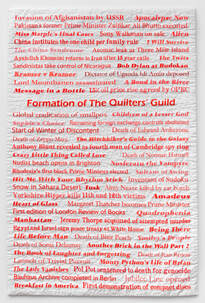
Sabi Westoby : Region 1 : "Headline News"
I have interpreted the theme 'Spotlight@40' by focusing on world events that took place 40 years ago. For quilters, the highlight of 1979 was, undoubtedly, the formation of The Quilters' Guild and my work marks that exciting event. I also refer to other contemporary cultural, historical and political events that still seem significant to me 40 years later. Red text, a reference to Ruby Anniversary, was digitally printed on cotton sateen and the piece was seed stitched by hand.
I have interpreted the theme 'Spotlight@40' by focusing on world events that took place 40 years ago. For quilters, the highlight of 1979 was, undoubtedly, the formation of The Quilters' Guild and my work marks that exciting event. I also refer to other contemporary cultural, historical and political events that still seem significant to me 40 years later. Red text, a reference to Ruby Anniversary, was digitally printed on cotton sateen and the piece was seed stitched by hand.
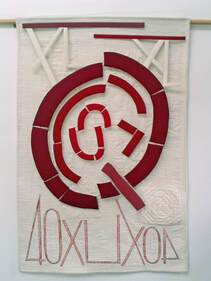
Jeni Rutherford : Region 2 : "QGBI Excels"
The inspiration for this hanging is The Guild and how patchwork has evolved in the last 40 years. In 1979 contemporary work was unusual but now the Contemporary Quilt Group is one of The Guild’s specialist groups. The hanging is in two parts: the front features QGBI, The Guild’s “initials”, in a contemporary way. The back features traditional block designs—where the Guild began—but the single colour blocks and quilting are contemporary. It represents all the people beavering away, in York and around the UK, who are generally unseen but make The Guild what it is today. The motifs feature 40 in Arabic and Roman numerals. XL can be pronounced excel, which is what Guild members try to do.
The inspiration for this hanging is The Guild and how patchwork has evolved in the last 40 years. In 1979 contemporary work was unusual but now the Contemporary Quilt Group is one of The Guild’s specialist groups. The hanging is in two parts: the front features QGBI, The Guild’s “initials”, in a contemporary way. The back features traditional block designs—where the Guild began—but the single colour blocks and quilting are contemporary. It represents all the people beavering away, in York and around the UK, who are generally unseen but make The Guild what it is today. The motifs feature 40 in Arabic and Roman numerals. XL can be pronounced excel, which is what Guild members try to do.
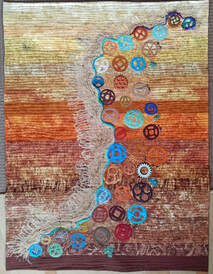
Marion McCrindle : Region 7 : "Circuit XL"
The premise of my quilt is that a year is like a circle - from January to December. Some years are better than others - each different in its own way. Hence there are 40 circles. The design is based on the concept of something emerging from the ground - the Guild emerged from people's wish for a more formal forum for quilting. More directly, I had been working on this theme as part of my Diploma and was inspired by a photo of the cheek plate of a copper helmet being uncovered, the contrast between the blue/green of the tarnished copper and the soil.
In terms of materials, the range is from cotton to paper, metal, wood, silk etc representing the differences in years. There is also a small ruby and a pearl to indicate some of the significant competitions the Guild has held.
The premise of my quilt is that a year is like a circle - from January to December. Some years are better than others - each different in its own way. Hence there are 40 circles. The design is based on the concept of something emerging from the ground - the Guild emerged from people's wish for a more formal forum for quilting. More directly, I had been working on this theme as part of my Diploma and was inspired by a photo of the cheek plate of a copper helmet being uncovered, the contrast between the blue/green of the tarnished copper and the soil.
In terms of materials, the range is from cotton to paper, metal, wood, silk etc representing the differences in years. There is also a small ruby and a pearl to indicate some of the significant competitions the Guild has held.
Dorothy Hill : 'The Hidden History & Untold Story of a Forgotten Quilt' : 15 July 2019
The July meeting was presented by our member, Dorothy Hill and this report is in her own words.
I have just completed my MA in History of Design, a programme run jointly by the V&A and Royal College of Art. It is an object led course and I shared with London Quilters the first assignment. This task was to search the online catalogue of the V&A collection and find an object that has very little information on it. I fortunately found a quilt that is a part of the Theatre and Performance Collection with “owned by Lillian Baylis and used by Laurence Olivier” in the very brief description.
I told the group of the journey I went on, and still continue to go on, to find out as much as possible about the quilt and how it ended up in the V&A. The original catalogue entry did not have a photograph; however, it did say it was made by a Victorian actress, during her waits, using fabrics, silks and velvets, from her costumes as well as being embroidered. I had in my mind that it might have been a Victorian crazy quilt, but this was not the case. It was a very large (approximately 77 inches by 86 inches, 1975mm by 2200mm) dramatic, English paper pieced, 8-pointed star. I only had an hour and a half with the quilt and was not allowed to touch it. The quilt is fragile: it has been damaged by a red dye from a fabric it is bound to and the silk has shattered. The construction of the layers is not clear, as the embroidery stitch is not a quilting stitch. There is piping at the edges made with ticking, as revealed by the shattered silk.
Turning one corner of the quilt over revealed an embroidered label with the names Mrs Fanny Stirling, Mrs. Calverly Bewicke, Lillian Baylis. Jackpot!
As well as being an excellent example of the silk manufacturing industry of the time, the story of the quilt maker and its subsequent owners is fascinating. The maker is Fanny Stirling, (1813-1895) a successful stage actress whose career spanned over fifty years. Research into her life shows a formidable woman - a single mother, supporting herself and her daughter and living on Piccadilly by 1851.
She passes the quilt down to a student of hers, Mrs Calverly Bewicke (1853-1939), on whom I need to do more research. Her obituary claims that she was the link to many of the “great Victorians” including Fanny Stirling. It also states that Mrs Claverly Bewicke’s Shakespearean recitations at the Old Vic inspired Lillian Baylis to produce Shakespeare’s 36 plays, starting in 1916, to celebrate the 300th anniversary of the First Folio. A connection was made between these two women and further research found evidence that Baylis’ grandmother and Fanny Stirling were friends. Given these two connections, the quilt was passed on to Baylis at the Old Vic at some point.
Such was the power of Baylis and theatre that the young actor, Laurence Olivier, gives up a successful film career to work for Baylis for a season of Shakespeare to establish a serious stage career. Researching the production in which Olivier may have used the quilt in his 1937 debut, I discovered that the prompt books of that year’s production was missing from the archives of the Old Vic, held at Bristol University. It soon became apparent that the vital information needed to answer this question was destroyed, as the Old Vic was bombed in 1941. I suggested two productions in which it may have been used given the language, “tapestry and pageant of textile”, in the critics’ reviews. We may never know, but taking into account Baylis’ reputation for thrift, a quilt in her office would definitely double as a prop on stage.
Baylis dies in 1937 and in her will she leaves for Barbara Allen, “a looking glass in my bedroom that belonged to her great-grandmother, Fanny Stirling.” The quilt must pass on, with the mirror, back into the family of the maker.
One major question of this saga: where is Fanny Stirling’s daughter in all of this? From what I can gather, Fanny’s daughter marries a solicitor and having an actress, single mother, living with another man (another story) was not acceptable to her new husband’s family. This story just keeps getting better.
Barbara Allen donates the quilt to the Theatre Museum in 1965, and it subsequently goes into the V&A collection. I think I am the first person to look at this quilt in over 40 years.
The reason the quilt is in the V&A is not only because it is a pristine example of a Victorian quilt and a useful example of the silk manufacturing industry: it is also a catalogue of an actress’s career and her legacy to those that have owned it. This quilt is part of the collection because of the maker and the hands that it has passed through.
I shall continue with the research.
I have just completed my MA in History of Design, a programme run jointly by the V&A and Royal College of Art. It is an object led course and I shared with London Quilters the first assignment. This task was to search the online catalogue of the V&A collection and find an object that has very little information on it. I fortunately found a quilt that is a part of the Theatre and Performance Collection with “owned by Lillian Baylis and used by Laurence Olivier” in the very brief description.
I told the group of the journey I went on, and still continue to go on, to find out as much as possible about the quilt and how it ended up in the V&A. The original catalogue entry did not have a photograph; however, it did say it was made by a Victorian actress, during her waits, using fabrics, silks and velvets, from her costumes as well as being embroidered. I had in my mind that it might have been a Victorian crazy quilt, but this was not the case. It was a very large (approximately 77 inches by 86 inches, 1975mm by 2200mm) dramatic, English paper pieced, 8-pointed star. I only had an hour and a half with the quilt and was not allowed to touch it. The quilt is fragile: it has been damaged by a red dye from a fabric it is bound to and the silk has shattered. The construction of the layers is not clear, as the embroidery stitch is not a quilting stitch. There is piping at the edges made with ticking, as revealed by the shattered silk.
Turning one corner of the quilt over revealed an embroidered label with the names Mrs Fanny Stirling, Mrs. Calverly Bewicke, Lillian Baylis. Jackpot!
As well as being an excellent example of the silk manufacturing industry of the time, the story of the quilt maker and its subsequent owners is fascinating. The maker is Fanny Stirling, (1813-1895) a successful stage actress whose career spanned over fifty years. Research into her life shows a formidable woman - a single mother, supporting herself and her daughter and living on Piccadilly by 1851.
She passes the quilt down to a student of hers, Mrs Calverly Bewicke (1853-1939), on whom I need to do more research. Her obituary claims that she was the link to many of the “great Victorians” including Fanny Stirling. It also states that Mrs Claverly Bewicke’s Shakespearean recitations at the Old Vic inspired Lillian Baylis to produce Shakespeare’s 36 plays, starting in 1916, to celebrate the 300th anniversary of the First Folio. A connection was made between these two women and further research found evidence that Baylis’ grandmother and Fanny Stirling were friends. Given these two connections, the quilt was passed on to Baylis at the Old Vic at some point.
Such was the power of Baylis and theatre that the young actor, Laurence Olivier, gives up a successful film career to work for Baylis for a season of Shakespeare to establish a serious stage career. Researching the production in which Olivier may have used the quilt in his 1937 debut, I discovered that the prompt books of that year’s production was missing from the archives of the Old Vic, held at Bristol University. It soon became apparent that the vital information needed to answer this question was destroyed, as the Old Vic was bombed in 1941. I suggested two productions in which it may have been used given the language, “tapestry and pageant of textile”, in the critics’ reviews. We may never know, but taking into account Baylis’ reputation for thrift, a quilt in her office would definitely double as a prop on stage.
Baylis dies in 1937 and in her will she leaves for Barbara Allen, “a looking glass in my bedroom that belonged to her great-grandmother, Fanny Stirling.” The quilt must pass on, with the mirror, back into the family of the maker.
One major question of this saga: where is Fanny Stirling’s daughter in all of this? From what I can gather, Fanny’s daughter marries a solicitor and having an actress, single mother, living with another man (another story) was not acceptable to her new husband’s family. This story just keeps getting better.
Barbara Allen donates the quilt to the Theatre Museum in 1965, and it subsequently goes into the V&A collection. I think I am the first person to look at this quilt in over 40 years.
The reason the quilt is in the V&A is not only because it is a pristine example of a Victorian quilt and a useful example of the silk manufacturing industry: it is also a catalogue of an actress’s career and her legacy to those that have owned it. This quilt is part of the collection because of the maker and the hands that it has passed through.
I shall continue with the research.
Inge Hueber in conversation with Linda Seward : 17 June 2019
At our June meeting, we were privileged to have the celebrated German quilter, Inge Hueber, talk to us about her life in quilting. Inge explained that she was in London for the Quilt Art exhibition, ‘Material Evidence’, at the Menier Gallery. She does not give talks anymore but as a special favour to Linda had agreed to answer questions at our meeting.
About forty years ago Inge started making quilts, working alone in a country without any quilting history. She discovered quilting when she bought a book about Amish quilts. She thought the quilts were beautiful and was inspired to create her own quilts. Her husband was very supportive and involved in her early work. She was enthusiastic and focused and worked hard during the day while her children were at school.
Inge was one of the founding members of the Quilt Art group which was started thirty-eight years ago. Quilt Art broke away from the Quilters Guild because the members wanted to be free of tradition and move their work in new directions. There were originally eight members who met four times a year. There are now eighteen members and all are required to produce new work for exhibitions.
For Inge, working with fabric was a dialogue between the head and heart. She described how quilting gets into her soul and that working with colour makes her happy. She felt that quilts are nicer than paintings - because paintings are flat whereas for her quilts have a life, change a room and the colours sing. Inge has a special love of cloth and she feels a quilt speaks to her.
Inge described how she works with calico that she dyes herself. Over the years, she has built up a huge collection of different hues and shades. She cuts these fabrics into strips which form the foundation of her quilts. Her method of construction is the Seminole technique, where strips of fabric, sometimes of different widths, are stitched together, cut, and resewn into a variety of patterns.
With a home in Broadstairs, Kent, Inge explained how her love of the sea has hugely influenced her work. She does not work from sketches or photographs. Instead, all her coloured fabric and strips are laid out on the floor when she selects colours, arranging and rearranging, adding and removing shades until she is 100% happy. This can be time consuming but she will not continue with a quilt if she feels something isn’t right. Sometimes Inge will unpick and remove a strip and because colours look different in the evening, she prefers to work in the mornings. In 1990, Inge began working with the raw seam edges exposed which turned the commonly accepted rules of quilt making upside down.
We were shown slides of Inge’s quilts and they were absolutely beautiful. The colours of her quilts look different depending on your viewpoint which is amazing. This was a truly memorable occasion and many thanks to Inge for talking to us.
Do visit Inge's website at www.ingehueber.de to see her inspiring work.
Nicola Findlay
About forty years ago Inge started making quilts, working alone in a country without any quilting history. She discovered quilting when she bought a book about Amish quilts. She thought the quilts were beautiful and was inspired to create her own quilts. Her husband was very supportive and involved in her early work. She was enthusiastic and focused and worked hard during the day while her children were at school.
Inge was one of the founding members of the Quilt Art group which was started thirty-eight years ago. Quilt Art broke away from the Quilters Guild because the members wanted to be free of tradition and move their work in new directions. There were originally eight members who met four times a year. There are now eighteen members and all are required to produce new work for exhibitions.
For Inge, working with fabric was a dialogue between the head and heart. She described how quilting gets into her soul and that working with colour makes her happy. She felt that quilts are nicer than paintings - because paintings are flat whereas for her quilts have a life, change a room and the colours sing. Inge has a special love of cloth and she feels a quilt speaks to her.
Inge described how she works with calico that she dyes herself. Over the years, she has built up a huge collection of different hues and shades. She cuts these fabrics into strips which form the foundation of her quilts. Her method of construction is the Seminole technique, where strips of fabric, sometimes of different widths, are stitched together, cut, and resewn into a variety of patterns.
With a home in Broadstairs, Kent, Inge explained how her love of the sea has hugely influenced her work. She does not work from sketches or photographs. Instead, all her coloured fabric and strips are laid out on the floor when she selects colours, arranging and rearranging, adding and removing shades until she is 100% happy. This can be time consuming but she will not continue with a quilt if she feels something isn’t right. Sometimes Inge will unpick and remove a strip and because colours look different in the evening, she prefers to work in the mornings. In 1990, Inge began working with the raw seam edges exposed which turned the commonly accepted rules of quilt making upside down.
We were shown slides of Inge’s quilts and they were absolutely beautiful. The colours of her quilts look different depending on your viewpoint which is amazing. This was a truly memorable occasion and many thanks to Inge for talking to us.
Do visit Inge's website at www.ingehueber.de to see her inspiring work.
Nicola Findlay
Catherine Tyndall & Jenny Anderson : Behind the Scenes at a Quilt Show : 20 May 2019
We were privileged to have two speakers at our May meeting – Catherine Tyndall, a quilt angel, and Jenny Anderson, a quilt judge. They gave a fascinating talk about the backstage work that goes into mounting the Festival of Quilts at the NEC in Birmingham each August.
The first to speak was Catherine. Hanging the quilts must be completed in two days, Monday and Tuesday, in time for the judging on Wednesday. There are 40 quilt angels, including staff from the NEC, who report for work to empty halls on the Monday morning. The venue is treated like a building site complete with high visibility jackets. Tables are covered in cloths ready to receive and protect the quilts, with separate tables for each quilt category.
Once the quilts are handed over in large boxes by the delivery company the unpacking starts. It can be a time consuming task and great care needs to be taken to ensure that the quilts are not damaged in the process. Each quilt is taken to the appropriate table where it is measured, double checked that it is in the right category, and that labels, duly covered to hide the details, and hanging sleeves have been properly affixed. Quilt angels have been known to sew on missing sleeves… Each quilt has a unique number and is placed in a paper potato bag with its number on the outside, and any packaging that is to be reused is similarly stored in another bag. Those that will be collected at the end of the show are marked with a red dot and those for delivery back to the makers have a blue one. This makes it easier to organise collection at the end of Sunday.
If there are any special hanging or display instructions, close attention is paid to them, particularly those for 3-D works, which can be challenging.
By Tuesday morning the quilts have all been unwrapped, checked and logged, the stands have been erected and the quilts placed in front of their allotted space, following the layout plan. They are all hung by Tuesday evening in place for the judging on the following day. At this stage the only information next to the quilt is its number on a plaque.
Jenny then told us about her work. Quilt judges are selected early in the year without being given any indication of the category they will be judging. They find this out when arriving for work on the Wednesday morning. Judges work in teams of two, sometimes three, but do the initial judging individually. Their equipment consists of a clipboard, a form for each entry and a pencil with an eraser. If the reverse of a quilt needs to be looked at, a quilt angel needs to turn the work in case the judge inadvertently sees forbidden details.
As the artist’s statement is not seen by the judge, the quilt needs to speak for itself. The criteria a judge has to consider are whether the quilt fulfils the requirements of the category in which it has been entered; its visual impact; whether the design is an original composition; the suitability of materials; accuracy of piecing; the design and execution of appliqué and quilting and whether it hangs well.
Once a shortlist of winners has been complied, the judges in a team will confer to make final decisions for their category. Reasons need to be given and this can be a difficult stage of the judging process. But the Judge’s Choice category is quite different – here a judge can be free in saying what they like about a quilt and the test seems to be that they “would like to take it home”!
The final stages of preparation were explained by Catherine. After judging is finished, the numbered plaques are removed and replaced by ones with the name of the maker and title of the quilt. All the quilts are double checked against the catalogue entries and the winning works are then removed for display in the Winners’ Enclosure.
The doors open to the public at 10am on Thursday morning and most visitors are unaware of the work involved in mounting the show.
At 4pm on Sunday, the process of taking down the quilts starts. It is fast but extreme care must be taken to ensure that the right quilts are handed back to their makers. All the potato sacks, duly numbered, are placed under their quilts, and once the show closes the works are taken down and put into their bags. Those with a red dot are taken to the collection point where makers are asked to check their quilt before it is handed over. By 7.30pm all the quilts for collection have been taken.
The final stage is packing up quilts to be delivered back to their owners. Where appropriate, the original packaging is reused, otherwise they are wrapped in layers of tissue paper, bubble wrap (which provides the protection) and brown paper. The packing up is usually finished by midnight and the quilts are handed over to the delivery company.
The pictures below show some of the activity behind the scenes.
Sabi Westoby
The first to speak was Catherine. Hanging the quilts must be completed in two days, Monday and Tuesday, in time for the judging on Wednesday. There are 40 quilt angels, including staff from the NEC, who report for work to empty halls on the Monday morning. The venue is treated like a building site complete with high visibility jackets. Tables are covered in cloths ready to receive and protect the quilts, with separate tables for each quilt category.
Once the quilts are handed over in large boxes by the delivery company the unpacking starts. It can be a time consuming task and great care needs to be taken to ensure that the quilts are not damaged in the process. Each quilt is taken to the appropriate table where it is measured, double checked that it is in the right category, and that labels, duly covered to hide the details, and hanging sleeves have been properly affixed. Quilt angels have been known to sew on missing sleeves… Each quilt has a unique number and is placed in a paper potato bag with its number on the outside, and any packaging that is to be reused is similarly stored in another bag. Those that will be collected at the end of the show are marked with a red dot and those for delivery back to the makers have a blue one. This makes it easier to organise collection at the end of Sunday.
If there are any special hanging or display instructions, close attention is paid to them, particularly those for 3-D works, which can be challenging.
By Tuesday morning the quilts have all been unwrapped, checked and logged, the stands have been erected and the quilts placed in front of their allotted space, following the layout plan. They are all hung by Tuesday evening in place for the judging on the following day. At this stage the only information next to the quilt is its number on a plaque.
Jenny then told us about her work. Quilt judges are selected early in the year without being given any indication of the category they will be judging. They find this out when arriving for work on the Wednesday morning. Judges work in teams of two, sometimes three, but do the initial judging individually. Their equipment consists of a clipboard, a form for each entry and a pencil with an eraser. If the reverse of a quilt needs to be looked at, a quilt angel needs to turn the work in case the judge inadvertently sees forbidden details.
As the artist’s statement is not seen by the judge, the quilt needs to speak for itself. The criteria a judge has to consider are whether the quilt fulfils the requirements of the category in which it has been entered; its visual impact; whether the design is an original composition; the suitability of materials; accuracy of piecing; the design and execution of appliqué and quilting and whether it hangs well.
Once a shortlist of winners has been complied, the judges in a team will confer to make final decisions for their category. Reasons need to be given and this can be a difficult stage of the judging process. But the Judge’s Choice category is quite different – here a judge can be free in saying what they like about a quilt and the test seems to be that they “would like to take it home”!
The final stages of preparation were explained by Catherine. After judging is finished, the numbered plaques are removed and replaced by ones with the name of the maker and title of the quilt. All the quilts are double checked against the catalogue entries and the winning works are then removed for display in the Winners’ Enclosure.
The doors open to the public at 10am on Thursday morning and most visitors are unaware of the work involved in mounting the show.
At 4pm on Sunday, the process of taking down the quilts starts. It is fast but extreme care must be taken to ensure that the right quilts are handed back to their makers. All the potato sacks, duly numbered, are placed under their quilts, and once the show closes the works are taken down and put into their bags. Those with a red dot are taken to the collection point where makers are asked to check their quilt before it is handed over. By 7.30pm all the quilts for collection have been taken.
The final stage is packing up quilts to be delivered back to their owners. Where appropriate, the original packaging is reused, otherwise they are wrapped in layers of tissue paper, bubble wrap (which provides the protection) and brown paper. The packing up is usually finished by midnight and the quilts are handed over to the delivery company.
The pictures below show some of the activity behind the scenes.
Sabi Westoby
Jeni and Ian Rutherford : Palestinian Costume and Embroidery : 15 April 2019
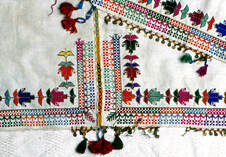
Our Chairwoman, Jeni Rutherford, and her husband Ian, gave a fascinating talk about the traditional costume of Palestine roughly covering the period from 1918 to 1948. Although Palestine was a relatively small country, about the size of Wales, there were distinct regional differences. They explained that it was possible to estimate when and where a dress would have been worn by looking at its embroidery and its shape.
The talk was illustrated not only with slides but also with the actual dresses being described, which Ian held up for members to see. Apart from Jerusalem, most dresses had a background which was either white or indigo – and indigo was called black. The most important part of the dress, and so the most heavily embroidered, was the chest piece and the next most important was the back of the skirt, which would be seen as the woman walked away. All the embroidery was in bright colours, especially red, and each region had its own typical style of embroidery. Bethlehem was known for its professional embroiderers whose style was particularly distinctive. Jerusalem was wealthier than other parts of the country and its dresses had more expensive fabric, often imported from Damascus.
Jeni and Ian explained that they had lived for some years in Jerusalem and had been introduced to the extraordinary range of colour and style in Palestinian costume by a Palestinian with his own superb collection.
The photographs below are a small selection of the costumes brought to the talk and clicking on each image will give you the caption and a full size picture.
The talk was illustrated not only with slides but also with the actual dresses being described, which Ian held up for members to see. Apart from Jerusalem, most dresses had a background which was either white or indigo – and indigo was called black. The most important part of the dress, and so the most heavily embroidered, was the chest piece and the next most important was the back of the skirt, which would be seen as the woman walked away. All the embroidery was in bright colours, especially red, and each region had its own typical style of embroidery. Bethlehem was known for its professional embroiderers whose style was particularly distinctive. Jerusalem was wealthier than other parts of the country and its dresses had more expensive fabric, often imported from Damascus.
Jeni and Ian explained that they had lived for some years in Jerusalem and had been introduced to the extraordinary range of colour and style in Palestinian costume by a Palestinian with his own superb collection.
The photographs below are a small selection of the costumes brought to the talk and clicking on each image will give you the caption and a full size picture.
Andrea Lechner : The Quilts and Quilters of Gee's Bend : March 2019
Andrea began her talk with a history of Gee’s Bend, a small rural community located in a bend of the Alabama River, southwest of Selma, Alabama. Founded in the early 1800s, it was the site of cotton plantations owned by Joseph Gee and his relative Mark Pettway, who bought the land in 1845. After the Civil War, the freed slaves became tenant farmers of the Pettway family and founded an all-black community living in near isolation.
The community lived in extreme poverty, building homes with wood they had cut themselves. The women of Gee’s Bend made quilts for warmth using any materials available such as feed sacks and denim work clothes. This poverty became especially severe during the depression, when the Red Cross and the federal government intervened to help alleviate the economic hardship of the community.
Their quilts became known outside Alabama during the 1960s when the Reverend Francis Walter, the head of a civil rights movement, purchased them to sell at auction in New York City. The proceeds were used to establish a cooperative business, the Freedom Quilting Bee, which sold first to Bloomingdale’s and then made corduroy pillow covers for Sears. Some of the quilters, however, felt their creative freedom was being hampered by the imposition of standardization by these companies.
Andrea then went on to show a series of photographs, first of Gee’s Bend itself, and then of the quilts produced by the community, which were predominantly innovatively pieced strip quilts. Uninhibited by the norms of quilt making – their isolation meant they were unaware of established block patterns - the women of Gee’s Bend seem to have been guided by their own personal creative vision. Most of their quilts can be described as improvisational, with unexpected patterns, unusual colours and surprising rhythms. Their work is strikingly original and ranks, I think, with the finest abstract art in any tradition. Some London Quilters commented that many of the quilts would not look out of place at QuiltCon today. To paraphrase Sue Aron, who thanked Andrea for her talk on behalf of London Quilters, “Long live wonky piecing!”.
Yana Krizka
The community lived in extreme poverty, building homes with wood they had cut themselves. The women of Gee’s Bend made quilts for warmth using any materials available such as feed sacks and denim work clothes. This poverty became especially severe during the depression, when the Red Cross and the federal government intervened to help alleviate the economic hardship of the community.
Their quilts became known outside Alabama during the 1960s when the Reverend Francis Walter, the head of a civil rights movement, purchased them to sell at auction in New York City. The proceeds were used to establish a cooperative business, the Freedom Quilting Bee, which sold first to Bloomingdale’s and then made corduroy pillow covers for Sears. Some of the quilters, however, felt their creative freedom was being hampered by the imposition of standardization by these companies.
Andrea then went on to show a series of photographs, first of Gee’s Bend itself, and then of the quilts produced by the community, which were predominantly innovatively pieced strip quilts. Uninhibited by the norms of quilt making – their isolation meant they were unaware of established block patterns - the women of Gee’s Bend seem to have been guided by their own personal creative vision. Most of their quilts can be described as improvisational, with unexpected patterns, unusual colours and surprising rhythms. Their work is strikingly original and ranks, I think, with the finest abstract art in any tradition. Some London Quilters commented that many of the quilts would not look out of place at QuiltCon today. To paraphrase Sue Aron, who thanked Andrea for her talk on behalf of London Quilters, “Long live wonky piecing!”.
Yana Krizka
Sheena Roberts : Challenge and Extend : 21 January 2019
The first speaker of each calendar year is one of our own members and this year that member was Sheena Roberts.
Sheena’s first forays into stitch were not successful. School dressmaking lessons proved daunting and her teacher’s comments were less than encouraging. However, she learned some lessons that were to prove very useful later in life:
Sheena backed her philosophy with research from the University of Hertfordshire which showed that as well as knowledge, a good teacher must be able to engage and inspire, research and fill gaps in learning, look to the needs of the learner and be flexible and approachable. Above all a teacher must remain positive and this Sheena amply illustrated through examples of her own work and that of some of her students. From her own relatively straightforward quilts, she showed how her students adapted her teaching and produced quilts far removed from their inspiration. Her pride in their achievements was palpable.
We have all had good and “less effective” teachers and some of us teach ourselves. Sheena’s talk provided a useful opportunity to reflect and illustrated very clearly the impact a good teacher can have: a timely reminder for us all.
You can see more of Sheena's work by following this link to her website: www.greenmanquilts.co.uk
Marion McCrindle
Sheena’s first forays into stitch were not successful. School dressmaking lessons proved daunting and her teacher’s comments were less than encouraging. However, she learned some lessons that were to prove very useful later in life:
- Mistakes are not “wrong”; they just lead you into areas of invention you may not have planned – ie they can be solved.
- A teacher should never make his/her students feel small
- The key is making someone feel good about their sewing – boost their confidence.
Sheena backed her philosophy with research from the University of Hertfordshire which showed that as well as knowledge, a good teacher must be able to engage and inspire, research and fill gaps in learning, look to the needs of the learner and be flexible and approachable. Above all a teacher must remain positive and this Sheena amply illustrated through examples of her own work and that of some of her students. From her own relatively straightforward quilts, she showed how her students adapted her teaching and produced quilts far removed from their inspiration. Her pride in their achievements was palpable.
We have all had good and “less effective” teachers and some of us teach ourselves. Sheena’s talk provided a useful opportunity to reflect and illustrated very clearly the impact a good teacher can have: a timely reminder for us all.
You can see more of Sheena's work by following this link to her website: www.greenmanquilts.co.uk
Marion McCrindle
Sabi Westoby : 'Page 27, Exodus 1' : December 2018
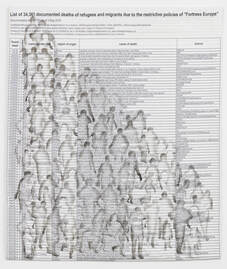
Members of London Quilters may have seen my wall hanging based on The Guardian's list of refugee deaths, published in June 2018, in the previous 25 years. I submitted it in response to SAQA's call for entry for an exhibition, entitled Forced to Flee, to be held at the Ruth Funk Center for Textile Arts in Florida next year.
I was delighted to be told that it has been accepted for the show. If you would like to read about the quilt and the process of making it, you can do so by following this link:
www.sabiwestoby.com/news.html
You can also see all the quilts in this powerful show, together with artist statements and oral commentaries by each artist, by following this link:
https://bit.ly/2HD5kpZ.
And if you are wondering about the name of my piece - it refers to page 27 of the List and the first of what I hope will be a series of works on the subject.
I was delighted to be told that it has been accepted for the show. If you would like to read about the quilt and the process of making it, you can do so by following this link:
www.sabiwestoby.com/news.html
You can also see all the quilts in this powerful show, together with artist statements and oral commentaries by each artist, by following this link:
https://bit.ly/2HD5kpZ.
And if you are wondering about the name of my piece - it refers to page 27 of the List and the first of what I hope will be a series of works on the subject.
Markal Paintstiks Workshop : 19 November 2018 : Rose Little
Our November meeting was a hands-on activity evening on Markal Paintstiks led by LQ member Sabi Westoby. Markal Paintstiks are oil-based pigment crayons that can be used on porous surfaces such as paper and fabric and made permanent by heat setting. They work well on both white or pale and dark fabrics.
Sabi brought her large collection of Markal Paintstiks, rubbing plates and her own stencils cut from acetate template material with the Brother ScanNCut for us to use. She gave us lots of tips on using Markal Paintstiks, demonstrating, for example, how to use a piece of torn paper to make a soft edge and a stencil brush or toothbrush to spread the pigment to form a gradated effect.
After application of the pigment on fabric, it should be left to dry for 48 hours and the colour fixed by ironing with a hot iron over a sheet of baking paper. The fabric may then be washed, but Sabi did not recommend using it for an item that would require frequent washing.
There was plenty of inspiration from Sabi’s own beautiful quilts made with the aid of Markal Paintstiks – semi-abstract landscapes, flora, and a powerful piece where stencilled images of people walking were superimposed on a chart listing details of the deaths of migrants during their journey to what they had hoped would be a safe haven.
Before long the room was buzzing with activity as we experimented with different ways of applying the Paintstiks to paper and fabric. It was a great idea that made for a highly enjoyable evening – thank you, Sabi for sharing your expertise in this versatile technique.
Some of Sabi’s work is shown below:
Sabi brought her large collection of Markal Paintstiks, rubbing plates and her own stencils cut from acetate template material with the Brother ScanNCut for us to use. She gave us lots of tips on using Markal Paintstiks, demonstrating, for example, how to use a piece of torn paper to make a soft edge and a stencil brush or toothbrush to spread the pigment to form a gradated effect.
After application of the pigment on fabric, it should be left to dry for 48 hours and the colour fixed by ironing with a hot iron over a sheet of baking paper. The fabric may then be washed, but Sabi did not recommend using it for an item that would require frequent washing.
There was plenty of inspiration from Sabi’s own beautiful quilts made with the aid of Markal Paintstiks – semi-abstract landscapes, flora, and a powerful piece where stencilled images of people walking were superimposed on a chart listing details of the deaths of migrants during their journey to what they had hoped would be a safe haven.
Before long the room was buzzing with activity as we experimented with different ways of applying the Paintstiks to paper and fabric. It was a great idea that made for a highly enjoyable evening – thank you, Sabi for sharing your expertise in this versatile technique.
Some of Sabi’s work is shown below:
And to give an idea of the evening - members' samples made at the workshop:
Linda Seward : Contemporary and Modern Art Quilters : 15 October 2018
The speaker at our October meeting was our own member, Linda Seward. Her talk on the distinctions between Contemporary and Modern quilts was lively and enlightening.
I know that contemporary quilts are generally made as wall hangings using many techniques such as dyeing, printing, manipulating and embellishing fabrics. However, although I have seen many contemporary quilts and probably a lot of modern ones, too, I have never taken the time to consider the differences or origins of the latter so Linda's talk helped fill the gaps in my knowledge.
Whilst I knew that modern quilts are utilitarian and meant to be on beds, chairs and bodies, I did not know that their origin lies in the traditional - that is, in traditional quilt blocks that are manipulated, enlarged and improvised. Fabrics are solids in bright colours and where prints are used they are generally geometric or abstract and on a large scale. Patterns are rarely used, blocks being cut out freehand.
Asymmetry also plays an important part in a modern quilt, as does minimalism - definitely the 'less is more' school of design. Likewise, negative space is essential and an element in its own right - many of the quilts Linda showed us had large background areas that had been beautifully quilted, which highlighted the blocks.
Big hand stitching is popular but geometric or parallel lines of machine stitch feature regularly in modern quilts, as can be seen in the examples below. Clicking on each image will give details of the work.
Many members of London Quilters make Contemporary and Modern quilts, some of which were brought to the meeting and shown to the group.
Linda's talk was highly informative, interesting and inspiring. I might even have to make a Modern quilt myself.
More information about Linda, her work and achievements can be found on her website with this link:
www.lindaseward.com
Sabi Westoby
I know that contemporary quilts are generally made as wall hangings using many techniques such as dyeing, printing, manipulating and embellishing fabrics. However, although I have seen many contemporary quilts and probably a lot of modern ones, too, I have never taken the time to consider the differences or origins of the latter so Linda's talk helped fill the gaps in my knowledge.
Whilst I knew that modern quilts are utilitarian and meant to be on beds, chairs and bodies, I did not know that their origin lies in the traditional - that is, in traditional quilt blocks that are manipulated, enlarged and improvised. Fabrics are solids in bright colours and where prints are used they are generally geometric or abstract and on a large scale. Patterns are rarely used, blocks being cut out freehand.
Asymmetry also plays an important part in a modern quilt, as does minimalism - definitely the 'less is more' school of design. Likewise, negative space is essential and an element in its own right - many of the quilts Linda showed us had large background areas that had been beautifully quilted, which highlighted the blocks.
Big hand stitching is popular but geometric or parallel lines of machine stitch feature regularly in modern quilts, as can be seen in the examples below. Clicking on each image will give details of the work.
Many members of London Quilters make Contemporary and Modern quilts, some of which were brought to the meeting and shown to the group.
Linda's talk was highly informative, interesting and inspiring. I might even have to make a Modern quilt myself.
More information about Linda, her work and achievements can be found on her website with this link:
www.lindaseward.com
Sabi Westoby
Isobel Hall : Mixed Media and Stitch : 17 September 2018
Maggie Paykel :
About three years ago I started email conversations between Cambridge and Spain plus the odd one or two to Yorkshire to Isobel Hall and her husband. Why? I was trying to get them both to come to London Quilters to give a talk and workshop as members had wanted them to come for some time. I had heard so much about them and judging by the humour in the emails I thought it would be fun and stimulating. I wasn't wrong.
A date was eventually agreed and they came to London Quilters for our September meeting - Isobel and her husband were so keen not to be late that, according to Miguel, they arrived at the Hub at 4 pm! He sat them down with cups of tea, biscuits and chatted to them. By the time I had arrived the tables were all laid out with dozens of beautiful works to look at - books, sketches, samples, bags, bowls, book covers. I’m not sure that there was anything left in their Spanish house. Isobel had so much to explain about her work that after her slide show we thought that she had finished. But no - she then produced her self published books which led to another frenzy of buying by members.
I went back to my London flat with my mind buzzing with new ideas, having been reminded of so many methods of stitching, embellishment and texture. I had a lovely email from Isobel thanking us for organising everything in the way of hotel, lunches plus the shortbread! Here are a few images of Isobel's lovely work taken at her talk.
About three years ago I started email conversations between Cambridge and Spain plus the odd one or two to Yorkshire to Isobel Hall and her husband. Why? I was trying to get them both to come to London Quilters to give a talk and workshop as members had wanted them to come for some time. I had heard so much about them and judging by the humour in the emails I thought it would be fun and stimulating. I wasn't wrong.
A date was eventually agreed and they came to London Quilters for our September meeting - Isobel and her husband were so keen not to be late that, according to Miguel, they arrived at the Hub at 4 pm! He sat them down with cups of tea, biscuits and chatted to them. By the time I had arrived the tables were all laid out with dozens of beautiful works to look at - books, sketches, samples, bags, bowls, book covers. I’m not sure that there was anything left in their Spanish house. Isobel had so much to explain about her work that after her slide show we thought that she had finished. But no - she then produced her self published books which led to another frenzy of buying by members.
I went back to my London flat with my mind buzzing with new ideas, having been reminded of so many methods of stitching, embellishment and texture. I had a lovely email from Isobel thanking us for organising everything in the way of hotel, lunches plus the shortbread! Here are a few images of Isobel's lovely work taken at her talk.
Jeni Rutherford :
A very small and select number of us went to the Isobel Hall workshop the following day to make what? Vessels. Anything smallish that you can get your hand into. One of mine was plastic and had held a Christmas pudding. Diana’s had a beak!
We had a wonderful time. Lots of individual attention. And an unusual situation for Isobel, our tutor, who had the time to add extra ideas and methods for us to try. We shared everything. Clothes pegs were an essential item.
Making bowls Isobel’s way is a sticky business. We used a very specific adhesive to mould scrim over our chosen vessel. And waited and waited for it to dry. So we made another in the meantime. Then we added another layer to our first vessel. And so on.
We didn’t have time to add decoration to our vessels: colour, embroidery, beads … but we came away with so many ideas! These pictures give you an idea of the process. And more information about Isobel can be found on her website: www.isobelhall.co.uk
A very small and select number of us went to the Isobel Hall workshop the following day to make what? Vessels. Anything smallish that you can get your hand into. One of mine was plastic and had held a Christmas pudding. Diana’s had a beak!
We had a wonderful time. Lots of individual attention. And an unusual situation for Isobel, our tutor, who had the time to add extra ideas and methods for us to try. We shared everything. Clothes pegs were an essential item.
Making bowls Isobel’s way is a sticky business. We used a very specific adhesive to mould scrim over our chosen vessel. And waited and waited for it to dry. So we made another in the meantime. Then we added another layer to our first vessel. And so on.
We didn’t have time to add decoration to our vessels: colour, embroidery, beads … but we came away with so many ideas! These pictures give you an idea of the process. And more information about Isobel can be found on her website: www.isobelhall.co.uk
Dalia Hartman Bergsagel : Exhibition at the Tavistock Clinic
Our member, Dalia Hartman Bergsagel, currently has a solo exhibition at the Tavistock Clinic showing a wide range of her talents - paintings, prints and, of course, quilts. The show is currently on and runs until Tuesday 9 October.
More details are on this flyer together with an explanation in Dalia's own words - clicking on each image will expand it for ease of reading.
More details are on this flyer together with an explanation in Dalia's own words - clicking on each image will expand it for ease of reading.
And with kind permission of the Tavistock Clinic, below is the article and photograph by Glen Gosling on Dalia's show that appeared in the in house magazine
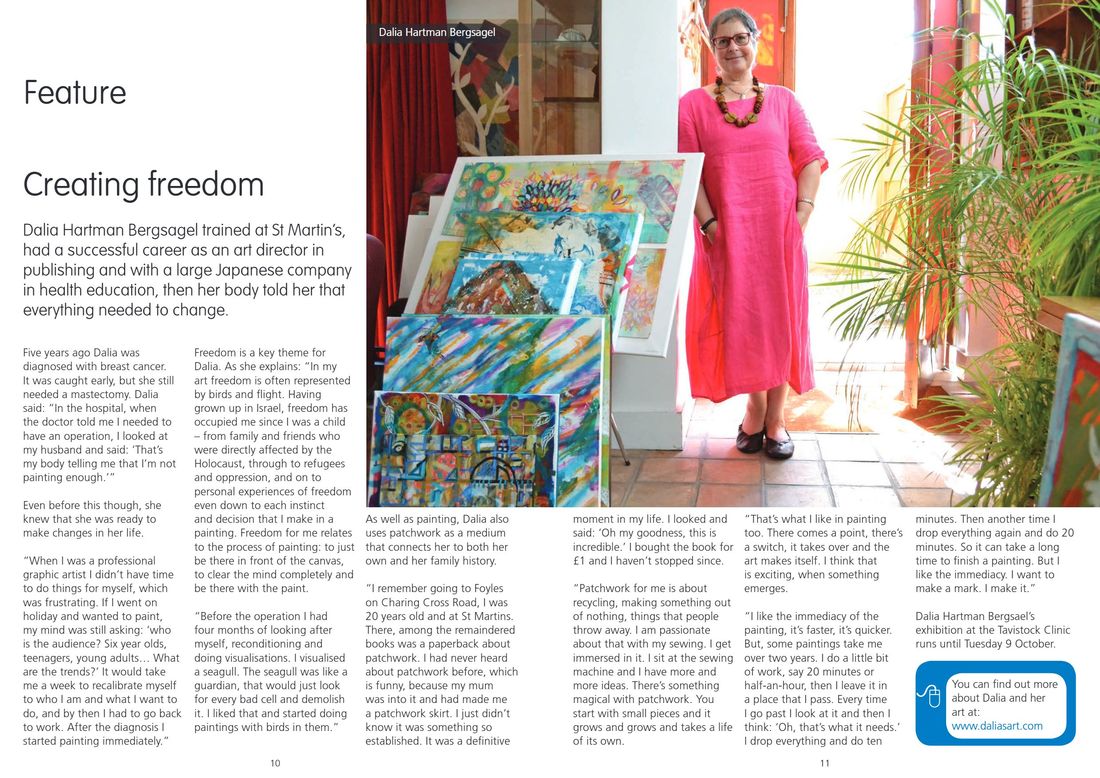
And a selection of Dalia's textile pieces
Linda Seward : Contemporary and Modern Art Quilters : 15 October 2018
The speaker for the October meeting is our member Linda Seward. Her talk will feature the work of over 35 textile artists who are making exciting Contemporary and Modern art quilts. Linda will define what a Modern quilt is, and illustrate how it differs from a Contemporary quilt by comparing examples of similar styles/designs. By the end of the talk you'll be able to differentiate between them quite easily. Photographs and detailed close-ups will explore the diversity of work being created today by both types of quilters.
Isobel Hall : Mixed Media and Stitch : 17 September 2018
The speaker for the September meeting is Isobel Hall, mixed media and stitch artist. She is a prolific author and widely travelled teacher whose embellished fabric and paper creations will fascinate all who see and touch them.
Her workshop the following day will show participants how to make vessels from scratch and then embellish them. You can see Isobel's work on her website with this link: www.isobelhall.co.uk
Her workshop the following day will show participants how to make vessels from scratch and then embellish them. You can see Isobel's work on her website with this link: www.isobelhall.co.uk
Mary McIntosh : Text and Texture in Textile Art : 21 May 2018 : Lucy Poloniecka
Our May speaker was Mary McIntosh from Sudbury in Suffolk. The talk was entitled “Text and Texture in Textile Art”.
Although Mary started Patchwork and Quilting in 1995 during a year spent in Canada, the earliest piece she showed us was the final work from her City & Guilds Diploma course in 2011. This was a triptych inspired by her local brickworks and Mary explained the many different techniques she had used to create the different textures on each panel. Mary then went on to obtain a PGCE qualification so that she could teach City & Guilds herself (her successful students have included LQ members Tricia Dickson and Rachel Tyndall).
We were subsequently treated to a dazzling array of quilts that Mary had brought to show us using different techniques and materials
The first were a pair of quilts using Quality Street wrappers with the background fabric cut away. This technique was further developed using silk rather than cellophane in Mary's stained glass quilt inspired by the Sagrada Familia in Barcelona.
This was followed by paper lamination, then "Shrivel Up and Dye", a series of quilts using deliberately shrunk woollen cloth pieced with other fabrics using graduated dyeing and also a beautiful rust-dyed hand embellished quilt.
Mary explained that one of her textile friends had access to calico coffin covers and that she had first used these for a series of World War 1 memorial quilts - one printed with the names of fallen British soldiers, one with the names of German soldiers and the third with the names of the battles of the war.
More recently, Mary has moved on to black linen as her main fabric. She has produced a series of quilts where the colour was removed from the linen using either bleach or discharge paste, many were then decorated with copper foil. The Tipsy Stitcher is a play on the Drunkards Path quilt block which Mary simulated using discharge through screens and stencils.
The next series, “Out of This World” featured circles discharged and ultimately cut from black linen that had been stitched onto wadding that had been deliberately shrunk and distressed.
Finally, Mary showed us her recent triptych of quilts inspired by Rag Rugs - "Out of the North East".
This was a fascinating talk and I am sure that many of our members will be inspired to make quilts themselves using some of the techniques that Mary shared with us.
You can see more of Mary's work on her website, accessible with this link:
www.marymcintosh.co.uk
Although Mary started Patchwork and Quilting in 1995 during a year spent in Canada, the earliest piece she showed us was the final work from her City & Guilds Diploma course in 2011. This was a triptych inspired by her local brickworks and Mary explained the many different techniques she had used to create the different textures on each panel. Mary then went on to obtain a PGCE qualification so that she could teach City & Guilds herself (her successful students have included LQ members Tricia Dickson and Rachel Tyndall).
We were subsequently treated to a dazzling array of quilts that Mary had brought to show us using different techniques and materials
The first were a pair of quilts using Quality Street wrappers with the background fabric cut away. This technique was further developed using silk rather than cellophane in Mary's stained glass quilt inspired by the Sagrada Familia in Barcelona.
This was followed by paper lamination, then "Shrivel Up and Dye", a series of quilts using deliberately shrunk woollen cloth pieced with other fabrics using graduated dyeing and also a beautiful rust-dyed hand embellished quilt.
Mary explained that one of her textile friends had access to calico coffin covers and that she had first used these for a series of World War 1 memorial quilts - one printed with the names of fallen British soldiers, one with the names of German soldiers and the third with the names of the battles of the war.
More recently, Mary has moved on to black linen as her main fabric. She has produced a series of quilts where the colour was removed from the linen using either bleach or discharge paste, many were then decorated with copper foil. The Tipsy Stitcher is a play on the Drunkards Path quilt block which Mary simulated using discharge through screens and stencils.
The next series, “Out of This World” featured circles discharged and ultimately cut from black linen that had been stitched onto wadding that had been deliberately shrunk and distressed.
Finally, Mary showed us her recent triptych of quilts inspired by Rag Rugs - "Out of the North East".
This was a fascinating talk and I am sure that many of our members will be inspired to make quilts themselves using some of the techniques that Mary shared with us.
You can see more of Mary's work on her website, accessible with this link:
www.marymcintosh.co.uk
Janice Gunner : City & Guilds Medal for Excellence
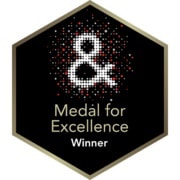
Janice Gunner has been awarded a coveted City & Guilds Medal for Excellence as a lecturer. Janice was nominated in December 2017 by Buckinghamshire Adult Learning for the quality of her teaching at Missenden Abbey. Along with this nomination were letters of support from other current and past C&G students. Janice’s Medal is being engraved and will be sent to her soon but she is also in the running (according to the City & Guilds website) for the prestigious Lion Awards, which are presented at a ceremony on a later date and possibly from the City Livery Companies allied to needlecraft.
In the meantime, here is an image of a virtual medal that Janice received via email in February 2018.
In Janice’s words “ It was a lovely surprise to know that my 24 years of teaching City & Guilds Patchwork & Quilting has been recognised by the organisation that provides the course. After a spell in hospital, critically ill with meningitis and sepsis this was just the tonic I needed to help in my recovery to doing a job that I love”.
In the meantime, here is an image of a virtual medal that Janice received via email in February 2018.
In Janice’s words “ It was a lovely surprise to know that my 24 years of teaching City & Guilds Patchwork & Quilting has been recognised by the organisation that provides the course. After a spell in hospital, critically ill with meningitis and sepsis this was just the tonic I needed to help in my recovery to doing a job that I love”.
Janet Twinn : 'From Canvas to Calico' : 16 April 2018 : Martha Crouch
London Quilters’ April speaker was Janet Twinn. Janet has been making Art quilts since 1994.
When I walked into the hall for the meeting, a first glance at the two quilts hanging at the front of the hall made me think there might have been a mistake. The vivid colours and complex swirling forms surely were painted. Where were the quilts?
Closer inspection revealed of course that the ‘paintings’ were quilts, in the most ‘proper’ sense. They were intricately pieced, layered, and quilted. It was fascinating to see how such painstaking planning and time-consuming labour resulted in such joyous and spontaneous looking pieces.
Janet revealed that she had wanted to be an artist from childhood. She did a Fine Art degree at St. Martin’s School of Art. Her art school training and experience of many years of dressmaking led to her becoming a textile artist.
Janet’s inspiration is nature - above all, landscape and trees. Her creative technique comes from art school, rather than traditional quilt making. She creates her palette by painting and dying cotton poplin in many shades. Each design is carefully drawn and pieced using a three inch grid. She spoke about grids being the building blocks of life and relating to the warp and the weft of fabric.
The shapes in these quilt paintings have become more and more abstract over the years but have not lost their connection to nature. The quilts show a clear connection to the artist’s training in painting and fine art. For me they were a joy to behold.
Janet Twinn will be having a gallery at the 2018 Festival of Quilts with her exhibition ‘Lost in Landscape’. Here is the link: www.thefestivalofquilts.co.uk/things-to-do/the-galleries/janet-twin
This is the link to her website: www.janettwinn.co.uk
When I walked into the hall for the meeting, a first glance at the two quilts hanging at the front of the hall made me think there might have been a mistake. The vivid colours and complex swirling forms surely were painted. Where were the quilts?
Closer inspection revealed of course that the ‘paintings’ were quilts, in the most ‘proper’ sense. They were intricately pieced, layered, and quilted. It was fascinating to see how such painstaking planning and time-consuming labour resulted in such joyous and spontaneous looking pieces.
Janet revealed that she had wanted to be an artist from childhood. She did a Fine Art degree at St. Martin’s School of Art. Her art school training and experience of many years of dressmaking led to her becoming a textile artist.
Janet’s inspiration is nature - above all, landscape and trees. Her creative technique comes from art school, rather than traditional quilt making. She creates her palette by painting and dying cotton poplin in many shades. Each design is carefully drawn and pieced using a three inch grid. She spoke about grids being the building blocks of life and relating to the warp and the weft of fabric.
The shapes in these quilt paintings have become more and more abstract over the years but have not lost their connection to nature. The quilts show a clear connection to the artist’s training in painting and fine art. For me they were a joy to behold.
Janet Twinn will be having a gallery at the 2018 Festival of Quilts with her exhibition ‘Lost in Landscape’. Here is the link: www.thefestivalofquilts.co.uk/things-to-do/the-galleries/janet-twin
This is the link to her website: www.janettwinn.co.uk
The El Dorado Textile Project - continued : Rose Little : April 2018
Our member, Rose Little, is in Sao Paolo with the El Dorado Project and has set up a JustGiving page as a blog for the work she is doing. You can access it with this link - www.justgiving.com/fundraising/rosemary-little.
You can read more about Rose's involvement by accessing two items in the 2017 archive with these links:
Once Upon a Time - Rose Little
El Dorado Textile Project - Rose Little
You can read more about Rose's involvement by accessing two items in the 2017 archive with these links:
Once Upon a Time - Rose Little
El Dorado Textile Project - Rose Little
Helen Howes : "What a Lot of Quilts" : 19 March 2018 : Janet Beck
The speaker at the March meeting was the delightfully eccentric Helen Howes. She is a prolific quilter who has made and sold more than a thousand of her signature tree quilts - she was set on this path after a near fatal early morning encounter with a tree in her car.
Helen showed us a huge range of her quilts and demonstrated how robust they were by flinging them on the floor. And perhaps a first for a speaker at London Quilters - she jumped on and off on a chair to hold her quilts aloft so we could see them in their entirety
She has had an extremely varied career: she gives talks and workshops; she collects and mends old sewing machines; and she makes kites. She set up the Modern Quilt Group, one of the Quilters’ Guild’s specialist groups.
You can see more of Helen's work with these links:
www.helenhowes-sewingmachines.co.uk
www.raindropkites.co.uk
www.helenhowestextiles.co.uk
doesnotequal.blogspot.com
And these are a few of the quilts shown to the group:
Helen showed us a huge range of her quilts and demonstrated how robust they were by flinging them on the floor. And perhaps a first for a speaker at London Quilters - she jumped on and off on a chair to hold her quilts aloft so we could see them in their entirety
She has had an extremely varied career: she gives talks and workshops; she collects and mends old sewing machines; and she makes kites. She set up the Modern Quilt Group, one of the Quilters’ Guild’s specialist groups.
You can see more of Helen's work with these links:
www.helenhowes-sewingmachines.co.uk
www.raindropkites.co.uk
www.helenhowestextiles.co.uk
doesnotequal.blogspot.com
And these are a few of the quilts shown to the group:
The following day I attended a workshop with Helen and other members of the group.
The workshop was based on her tree quilts and packed in an amazing amount of stuff. The first stage was making a freeform background and rather than having all your materials on the table we were told, forcibly, to look at fabrics one by one as the eye is overwhelmed if there is too much choice. True. I found it really inspiring. I’m going to be able to make inroads into my stash.
The next thing was tigers - cutting double to make long strips. Fab. Then it was stuff with triangles, which I’m not sure I fully understood but I’ll have another go. After that she showed us how she pieced her trees. It was a revelation. I didn’t try it myself as I didn’t have enough material but I will look at her website as there is a video. I carried on with my triangles.
Finally, she demonstrated her appliqué technique which is really needle turn with a machine. Brilliant. I am so buzzing with enthusiasm about all these new ways to play with fabric.
Work in progress from the workshop:
The workshop was based on her tree quilts and packed in an amazing amount of stuff. The first stage was making a freeform background and rather than having all your materials on the table we were told, forcibly, to look at fabrics one by one as the eye is overwhelmed if there is too much choice. True. I found it really inspiring. I’m going to be able to make inroads into my stash.
The next thing was tigers - cutting double to make long strips. Fab. Then it was stuff with triangles, which I’m not sure I fully understood but I’ll have another go. After that she showed us how she pieced her trees. It was a revelation. I didn’t try it myself as I didn’t have enough material but I will look at her website as there is a video. I carried on with my triangles.
Finally, she demonstrated her appliqué technique which is really needle turn with a machine. Brilliant. I am so buzzing with enthusiasm about all these new ways to play with fabric.
Work in progress from the workshop:
Declutter and Organise your Sewing Space : Nadia Orbach
Is your sewing space cluttered? Unmanageable? Can't always find what you want? Forgotten what you've got? If you need help to declutter and organise your sewing space and supplies the answer might be here.
One of our former members, Nadia Orbach, has launched a podcast - Declutter and Organize Your Sewing Space available on iTunes at: itunes.apple.com/gb/podcast/declutter-and-organise-your-sewing-space/id1351785043
It can also be accessed on her website at: www.clearthedecks.co.uk/sewing-spaces
The latter has a set of resources, which are well worth reading if you need inspiration.
One of our former members, Nadia Orbach, has launched a podcast - Declutter and Organize Your Sewing Space available on iTunes at: itunes.apple.com/gb/podcast/declutter-and-organise-your-sewing-space/id1351785043
It can also be accessed on her website at: www.clearthedecks.co.uk/sewing-spaces
The latter has a set of resources, which are well worth reading if you need inspiration.
Quiltcon 2018 : Sarah Hibbert
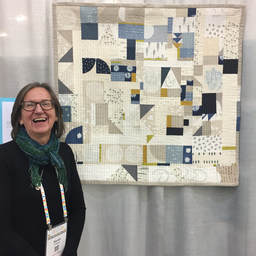
On February 19th I boarded a flight to Pasadena in California for my second visit to a QuiltCon but I had surprisingly mixed emotions - sheer excitement combined with nervousness. I wanted so much for it to match up to last year's lovely experience at Savannah.
On stepping through the Pasadena Convention Centre’s door, I need not have worried – it was great. The buzz around the registration desks was so exciting, meeting old friends and new Instagram friends and even our neighbours in the queue. Everyone was so pleased to be at this super party! I say party as it really did feel that way, a real quilting community with all sharing ideas, knowledge and enthusiasm.
I was lucky enough to have two quilts accepted this year, 'Serendipity II' made in an improv style using linen and even my father’s drawings photocopied onto fabric.
Moda Fabrics kindly featured this piece as one of their daily favourites. Being a good English girl I visited their stand and thanked them for doing so. They then questioned me on which fabrics I had used from their range.... Oh, none, I said! I was happy with my five minutes of fame and said they could remove Serendipity II from their choice but they didn't. In fact, none of their favourites in the show featured Moda fabrics!
On stepping through the Pasadena Convention Centre’s door, I need not have worried – it was great. The buzz around the registration desks was so exciting, meeting old friends and new Instagram friends and even our neighbours in the queue. Everyone was so pleased to be at this super party! I say party as it really did feel that way, a real quilting community with all sharing ideas, knowledge and enthusiasm.
I was lucky enough to have two quilts accepted this year, 'Serendipity II' made in an improv style using linen and even my father’s drawings photocopied onto fabric.
Moda Fabrics kindly featured this piece as one of their daily favourites. Being a good English girl I visited their stand and thanked them for doing so. They then questioned me on which fabrics I had used from their range.... Oh, none, I said! I was happy with my five minutes of fame and said they could remove Serendipity II from their choice but they didn't. In fact, none of their favourites in the show featured Moda fabrics!
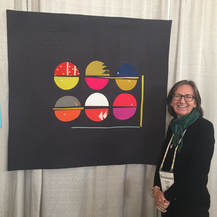
The second quilt, 'Macaroons No 57' was based on one of my collages I put together in April 2017. 'No 57' relates to the number it was in the collage sequence.
I pieced the quilt but it was long-arm quilted by Christine Perringo in Denver. She really did bring out the texture I was looking for. I received a lot of positive feedback and was even was called the 'Macaroon Lady' on quite a few occasions!
I pieced the quilt but it was long-arm quilted by Christine Perringo in Denver. She really did bring out the texture I was looking for. I received a lot of positive feedback and was even was called the 'Macaroon Lady' on quite a few occasions!
The overall number of quilts really did seem to marry well with their neighbours this year – I am not sure if this was part of the initial approval stage or achieved by the way they were hung. But the whole show had a very good vibe and balance.
There were several amazing quilts that really sparkled for me, three of which are shown below:
There were several amazing quilts that really sparkled for me, three of which are shown below:
What struck me was the number of protest quilts this year. Obviously, being a Brit I could not comment on some of the reasons behind the causes but the overall feeling I had was that we should all stand as a community and fight injustice for the victims who are not able to do this for themselves - to stand up against bullies, gun crime and acts of terror.
I have included the quilts that stood out for me and really did stop me in my tracks especially the first quilt - Karen Maple's ‘Black, Brown and White in Orange’, a protest about the prisoners forgotten by society and who spend endless weeks and months incarcerated before a fair trial.
And Darci Read's ‘Feminist Quilt’ was a powerful piece of work. After viewing these quilts, everyone agreed that we all have a voice and it should be used to the positive. The Visitors' Choice was a quilt made by Liz Havartine, 'She Was Warned', and designed to be carried as a flag or across the maker's shoulders in the many protest marches across major US Cities. If you would like to see more protest quilts, posted on the Hyperallergic website (www.hyperallergic.com), you can do so with this shortened link - http://bit.ly/2GBoBGl
I have included the quilts that stood out for me and really did stop me in my tracks especially the first quilt - Karen Maple's ‘Black, Brown and White in Orange’, a protest about the prisoners forgotten by society and who spend endless weeks and months incarcerated before a fair trial.
And Darci Read's ‘Feminist Quilt’ was a powerful piece of work. After viewing these quilts, everyone agreed that we all have a voice and it should be used to the positive. The Visitors' Choice was a quilt made by Liz Havartine, 'She Was Warned', and designed to be carried as a flag or across the maker's shoulders in the many protest marches across major US Cities. If you would like to see more protest quilts, posted on the Hyperallergic website (www.hyperallergic.com), you can do so with this shortened link - http://bit.ly/2GBoBGl
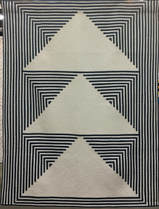
The winning quilt of the show was ‘Going Up’, made by Stephanie Skardal. It was beautifully executed and fully deserving of Best in Show, but for me it fell flat maybe because the overall show was so full of colour and bold quilts.
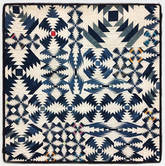
My personal ‘visitors choice’ was ‘Bobby Dale’s Blue Jeans’ made by Chawne Kimber - this was in the small category. I am just sorry that I did not put my hand against it to be able to show you the size of this amazing piece, all very tiny.
Lastly, I cannot stress enough the great experience QuiltCon has to offer, so if you are lucky enough to be able to visit – I’ll see you next year in Nashville!
Sarah Hibbert
Sarah Hibbert
Sewing Evening : 19 February 2018 : Sabi Westoby
The meeting in February is traditionally a sewing evening, with members giving demonstrations, bringing hand sewing to share with others, seeking and giving advice on work and chatting over tea, coffee and cake.
This month's meeting had something extra - the hall was filled with colourful quilts brought in by members as donations to The Rainbow Trust. The work of the Trust is familiar to many members of the group as quilts had been given in February 2016.
Fiona Rankine attended the meeting on behalf of the Trust; she told us about some of the children who received quilts from the group and about the work of the Trust. We were delighted that Fiona went away with 21 quilts and she may well be invited back for another meeting at a date in the future to receive another collection of quilts for children.
Details of the wide range of help offered to families with seriously or terminally ill children can be seen by visiting the website at www.rainbowtrust.org.uk.
The donated quilts are shown below and they ranged in size from full size single bed quilts to small pram and buggy covers, as well as everything in between.
This month's meeting had something extra - the hall was filled with colourful quilts brought in by members as donations to The Rainbow Trust. The work of the Trust is familiar to many members of the group as quilts had been given in February 2016.
Fiona Rankine attended the meeting on behalf of the Trust; she told us about some of the children who received quilts from the group and about the work of the Trust. We were delighted that Fiona went away with 21 quilts and she may well be invited back for another meeting at a date in the future to receive another collection of quilts for children.
Details of the wide range of help offered to families with seriously or terminally ill children can be seen by visiting the website at www.rainbowtrust.org.uk.
The donated quilts are shown below and they ranged in size from full size single bed quilts to small pram and buggy covers, as well as everything in between.
Sarah Hibbert : "Measure Twice, Cut Once" : 15 January 2018
The speaker at our January meeting was one of our own members, Sarah Hibbert.
She began by giving an overview of her early influences in design. Her main influence appears to have been her family, especially her father, a graphic designer. As well as encouraging her to draw, colour, cut and stick, she was taken regularly to exhibitions of artists such as Bridget Riley and Josef Albers. She also had access to the work of family friends and famous designers, Charles and Ray Eames and Lucienne Day. As a result of these influences Sarah developed a keen interest in modern design and geometric shapes. Her interest in quilting was stimulated by Mary Emmerling and American Folk Art.
Despite this interest in art and design she went not to Art but Catering College. Later, however, she attended a quilting course at St Alban’s College and went on to join Peartree Quilters, who she credits with developing her technical skills.
Sarah’s interest in Modern Quilting was first stimulated by Denyse Schmidt, seen by many as the originator of Modern Quilting. Another major influence on her work was her membership of the Modern Quilt Guild of America and the resulting access to its website and newsletter. This led her to attend QuiltCon in Savannah in 2017 where she was able to meet quilters whom she had admired from afar, such as Jacqui Gering, and attend inspirational and informative workshops such as Tara Faughnan’s on Use of Colour. This year she is attending QuiltCon in Pasadena and is pleased and proud to have two of her quilts accepted from 3,000 submissions.
Throughout her lively and humorous talk Sarah showed us a variety of her quilts. Many of these demonstrated her love of bold colours, unusual prints and imaginative use of squares and rectangles.
Her recent involvement in an Instagram 100 Day Project showed her commitment to innovative design. She was able to design a quilt, using the simple techniques of her childhood - cutting and sticking - worthy of acceptance in this year’s QuiltCon.
Sarah ended her talk by telling the group that she was happy and confident in her quilting at the moment but ultimately she quilted to please herself and continued to use many of the design influences of her childhood.
Jackie Oldham
Header image : Coralie Naalchigar : Square Dance

